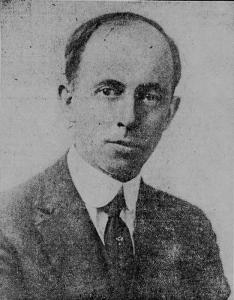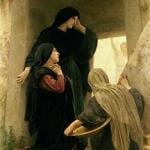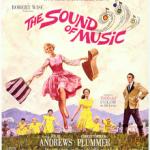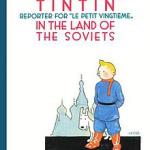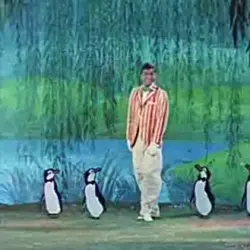]This is a list of some of the many works that are in the public domain. Meaning that you can download them for free on many websites like Project Guttenberg or Internet Archive. It also means that YOU-yes you, as a writer can pull characters and plot lines from these older works and use them in your own new creative works. Make something that was purely dramatic and turn it into Sci Fi or Fantasy or Horror.It also means you can take a whole book and change it around to your liking. For example Pride and Prejudice and Zombies.
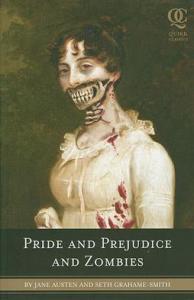
This list does not everything that is out there in the public domain. I put some of what I found to be the more notable examples of Public Domain books. You will find books your familiar with and some that your not familiar with. You will find examples of derivative works for some books as well as examples of some movie adaptations. There is definitely more examples of books and other works I could have included. I could have included more links to the authors and or source material. And I may do so in the future. This is a work in progress. But I can’t work on it forever. But I present to you what I have done. May you use it as a reference guide for your amusement and pleasure and possible future writing projects.
Notable Works Published Before 1700’s
Approximate date for the composition of the Iliad and the Odyssey 890 BC Classics Illustrated
Aesop’s Fables (620 and 564 BCE) Great Illustrated Classics Classics Illustrated
1563-Pope Pius IV, convinced that reading the fables of Aesop was of great use in forming the morals of young children, commissioned Gabriel Faerno, whom he knew as an excellent poet as well as a man with a taste for elegant and beautiful Latinity, to versify these fables so that children might learn, at the same time and from the same book, both moral and linguistic purity.. Charles Perrault
Sophocles‘s play Oedipus Rex is first performed 429 BC
Argonautica by Apollonius Rhodius in the 3rd century BC. the Argonautica tells the myth of the voyage of Jason and the Argonauts to retrieve the Golden Fleece from remote Colchis. Classics Illustrated
The Aeneid is a Latin epic poem, written by Virgil between 29 and 19 BC. Classics Illustrated
The Holy Bible Great Illustrated Classics Classics Illustrated
Beowulf (between 975 and 1025) Classics Illustrated
The Tale of Genji, by Murasaki Shikibu (c. 973 – c. 1014 or 1025) She was a Japanese novelist, poet and lady-in-waiting at the Imperial court in the Heian period. She penned what is widely considered to be one of the world’s first novels, written in Japanese.

Wolfram von Eschenbach c. 1160/80 – c. 1220) Classics Illustrated
Parzival first quarter of the 13th century: The poem centers on the Arthurian hero Parzival (Percival in English) and his long quest for the Holy Grail following his initial failure to achieve it.
The Golden Legend by Jacobus, de Voragine (1229-1298) Translated by William Caxton (1422-1491)
The Travels of Marco Polo (1300)
The Divine Comedy (begun c. 1308 and completed in 1320) by Dante Alighieri (1265 – September 14, 1321)
On Film
- The 1911 silent film L’Inferno was directed by Giuseppe de Liguoro, starring Salvatore Papa.[84] It was released on DVD in 2004, with a soundtrack by Tangerine Dream.
- The 1924 silent film Dante’s Inferno, directed by Henry Otto, features the 1911 film, L’Inferno; the section on the inferno is reduced to a ten-minute segment.[85]
- The 1935 motion picture Dante’s Inferno, directed by Harry Lachman, written by Philip Klein and starring Spencer Tracy, is about a fairground attraction based on Inferno. The film features a 10-minute fantasy sequence visualizing Dante’s Inferno.
The Canterbury Tales (between 1387 and 1400) by Geoffrey Chaucer (1340s – October 25, 1400)
On Film
- A Canterbury Tale, (1944) Jointly written and directed by Michael Powell and Emeric Pressburger, is loosely based on the narrative frame of Chaucer’s tales.
- Pier Paolo Pasolini‘s The Canterbury Tales (1972)
Wu Cheng’en (c. 1500–1582 or 1505–1580)
Journey to the West featuring The Monkey God (1592)
Utopia (1516) by Saint Thomas More (February 7, 1478 – July 6, 1535)
The life of Benvenuto Cellini (1563) by Benvenuto Cellini (November 3, 1500 – February 13, 1571) Classics Illustrated
The True History of the Conquest of New Spain by Captain Bernal Díaz del Castillo, translated by Alfred Percival Maudslay. London, Hakluyt Society, 1908 (4 volumes, 17 parts, 214 chapters with appendices) from the only original copy published by Genaro García in Mexico with notes and appendices. Considered the most complete and authentic translation. Classics Illustrated
Don Quixote (1605) by Miguel de Cervantes (September 29, 1547 (assumed) – April 22, 1616) A founding work of Western literature, it is often labeled as the first modern novel and one of the greatest ever written. Don Quixote is also one of the most-translated books in the world.
On Film Don Quichotte (1903) (youtube.com)
(1933) (2000) (2015) The Man Who Killed Don Quixote (2018)

Mr. William Shakespeare’s Comedies, Histories, & Tragedies(1623) is a collection of plays by William Shakespeare (bapt. April 26, 1564 – April 23, 1616) commonly referred to by modern scholars as the First Folio, published about seven years after Shakespeare’s death. It is considered one of the most influential books ever published.
Classics Illustrated Books
- A Midsummer Night’s Dream
- Hamlet
- Henry IV, Part 1 Acclaim Books
- Julius Caesar
- Macbeth
- Hamlet
Pentamerone is a seventeenth-century Neapolitan fairy tale collection by Italian poet and courtier Giambattista Basile. The stories in the Pentamerone were collected by Basile and published posthumously in two volumes by his sister Adriana in Naples, Italy, in 1634 and 1636 under the pseudonym Gian Alesio Abbatutis. These stories were later adapted by Charles Perrault and the Brothers Grimm, the latter making extensive, acknowledged use of Basile’s collection. Examples of this are versions of Cinderella, Rapunzel, Puss in Boots, Sleeping Beauty, and Hansel and Gretel. Many of these fairy tales are the oldest known variants in existence
Paradise Lost (1667) by John Milton (December 9, 1608 – November 8, 1674)
Pilgrims Progress (1678) by John Bunyan (November 30, 1628 – August 31, 1688)
On Film
Pilgrim’s Progress(1979) Liam Neeson, in his film debut, played the role of the Evangelist and also appeared as the crucified Christ.
Knight of Cups (2015) written and directed by Terrence Malick starring Christian Bale. The film is loosely inspired by, and at times quotes directly from, Pilgrim’s Progress, the Acts of Thomas passage “Hymn of the Pearl, and Suhrawardi’s A Tale of the Western Exile.
Pilgrim’s Progress(2019)
The Comical History of the States and Empires of the Moon and Sun, (1687)
by Hercule-Savinien de Cyrano de Bergerac (6 March 1619 – 28 July 1655
Stories or Tales from Past Times, with Morals or Mother Goose Tales (1697) a collection of literary fairy tales written by Charles Perrault, is published in Paris. The best known of his tales include “Little Red Riding Hood“, “Cinderella“, “Puss in Boots“, “Sleeping Beauty“, and “Bluebeard“.
Everything listed below by birthdate of author.
Notable Works Published in the 1700’s
Born in the 1600’s
Daniel Defoe (English) (1660 – 24 April 1731)
Robinson Crusoe (1719) Great Illustrated Classics / Classics Illustrated It is often credited as marking the beginning of realistic fiction as a literary genre. It is generally seen as a contender for the first English novel.
The Farther Adventures of Robinson Crusoe (1719)
- The Consolidator, or Memoirs of Sundry Transactions from the World in the Moon: Translated from the Lunar Language (1705
- Serious Reflections During the Life and Surprising Adventures of Robinson Crusoe: With his Vision of the Angelick World (1720)
- Captain Singleton (1720) / Classics Illustrated
- Memoirs of a Cavalier (1720)
- A Journal of the Plague Year (1722)
- Colonel Jack (1722)
- Moll Flanders (1722)
- Roxana: The Fortunate Mistress (1724)
- The Four Years Voyages of Capt. George Roberts (1726)
On Film
Robinson Crusoe (1910)
Robinson Crusoe (1913)
Robinson Crusoe (1916)
Robinson Crusoe (1924)
Robinson Crusoe (1925)
Robinson Crusoe (1927)
Mr. Robinson Crusoe (1932) With Douglas Fairbanks
Robinson Crusoe (1954)
Robinson Crusoe on Mars (1964)
Lt. Robin Crusoe, U.S.N. (1966) With Dick Van Dyke
Robinson Crusoe (1997)with Pierce Brosnan
Jonathan Swift (Anglo-Irish) (November 30, 1667 – October 19, 1745)
Gulliver’s Travels (1726) Great Illustrated Classics / used in League of Extraordinary Gentlemen/ Classics Illustrated
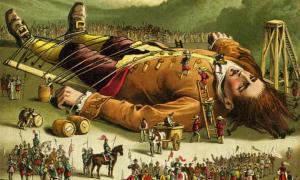
Gulliver Expanded
Mistress Masham’s Repose (1946) by T H White
Castaways in Lilliput (1958) by Henry Winterfeld
Last of the Gullivers (2012) by Carter Crocker
Lilliput (2013) by Sam Gayton
On Film and TV
Gulliver Mickey (1934)
Gulliver’s Travels (1939) Animated Max Fletcher Movie
The Three Worlds of Gulliver (1960): a loose adaptation starring Kerwin Mathews and featuring stop motion effects by Ray Harryhausen.
Gulliver’s Travels (1996) starring Ted Danson and Mary Steenburgen,this version includes all four voyages.
Gulliver’s Travels (2010): Modernized, live-action version of Gulliver’s adventures in Lilliput, starring Jack Black
Louis de Montfort (January 31, 1673 – April 28, 1716)
True Devotion to Mary (1712)
Jean Pierre de Caussade (March 7, 1675 –December 8, 1751)
Abandonment to Divine Providence (1861/1933)
John Gay (June 30, 1685 – December 4, 1732)
The Beggar’s Opera (1728), a ballad opera. The characters, including Captain Macheath and Polly Peachum, became household names.
Alexander Pope (May 21, 1688 – May 30, 1744)
An Essay on Criticism (1711) It is the source of the famous quotations “To err is human; to forgive, divine”, “A little learning is a dang’rous thing” (frequently misquoted as “A little knowledge is a dang’rous thing”), and “Fools rush in where angels fear to tread”.
The Rape of the Lock (1712)
The Dunciad It was published in three different versions at different times from 1728 to 1743.
Voltaire (November 21, 1694 – May 30, 1778)
Candide (1759)
Alphonsus Liguori (September 27, 1696 – August 1, 1787)
Uniformity with God’s Will (1758)
Born in the 1700’s
Benjamin Franklin (January 17, 1706 – April 17, 1790)
The Autobiography of Benjamin Franklin (1793)
Henry Fielding (April 22,1707 – October 8, 1754)
The History of Tom Jones, a Foundling (1749)
John Newbery (July 9, 1713 –December 22,1767), called “The Father of Children’s Literature”. The Newbery Medal was named after him in 1922. At the bottom of this list is a list of the Public Domain Newbury award winners.
The History of Little Goody Two (1765)
Laurence Sterne (November 24, 1713 – March 18, 1768)
The Life and Opinions of Tristram Shandy, Gentleman (1759 -1769)
Horace Walpole (September 24, 1717 –March 2, 1797)
His literary reputation rests on the first Gothic novel,
The Castle of Otranto (1764) Classics Illustrated Joint European Series (JES) – CCS Books
Rudolf Erich Raspe (German) (March 1736 – 16 November 1794)
Baron Munchausen’s Narrative of his Marvellous Travels and Campaigns in Russia (1785) Classics Illustrated
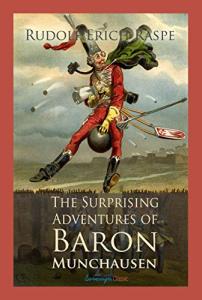
On Film
Baron Munchausen’s Dream (1911) Georges Méliès
The Adventures of Baron Munchausen (1988) Terry Gilliam
Vice-Admiral William Bligh FRS (September 9, 1754 –December 7, 1817)
A Narrative Of The Mutiny, On Board His Majesty’s Ship Bounty; And The Subsequent Voyage Of Part Of The Crew, In The Ship’s Boat (1790)
More Mutiny
The Eventful History of the Mutiny and Piratical Seizure of H.M.S. Bounty (1831) by Sir John Barrow
Mutiny on the Bounty (1932) Charles Nordhoff and James Norman Hall
On Film
Mutiny on the Bounty (1935) starring Charles Laughton and Clark Gable
19th Century Literature
Johann David Wyss (Swiss) (May 28, 1743 – January 11, 1818)
The Swiss Family Robinson (1812) Great Illustrated Classics /Classics Illustrated
The book is the most successful of a large number of “Robinsonade” novels that were written in response to the success of Daniel Defoe‘s Robinson Crusoe (1719). It has gone through a large number of versions and adaptations.

Book sequels
Willis the Pilot: a sequel to The Swiss family Robinson; or, Adventures of an emigrant family wrecked on an unknown coast of the Pacific Ocean (1858) has been attributed to Johann Wyss or to Johanna Spyri, author of Heidi.
Second Fatherland (Seconde Patrie, 1900), by Jules Verne takes up the story at the point where Wyss’s tale left off. It has also been published in two volumes, Their Island Home and Castaways of the Flag.
Return to Robinson Island (2015), by T. J. Hoisington, based on the original 1812 Swiss Family Robinson novel.
On Film
Swiss Family Robinson (1940)
Swiss Family Robinson (1960) Walt Disney
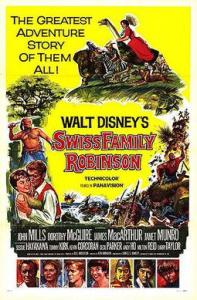
Johann Wolfgang von Goethe (August 38, 1749 –March 22, 1832)
- The Sorrows of Young Werther (1779)
Faust, Part One, closet drama in verse (1808) used in League of Extraordinary Gentlemen /Classics Illustrated
Faust, Part Two, closet drama in verse (1832)
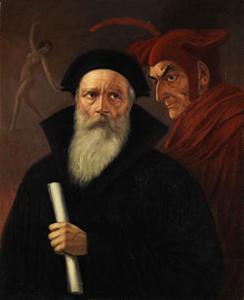
William Godwin (March 3, 1756 –April 7, 1836)
- Lives of the Necromancers (1834) or An account of the most eminent persons in successive ages who have claimed for themselves or to whom has been imputed by others the exercise of magical powers (1834) was the final book written by English journalist, political philosopher and novelist William Godwin. The book concerns paranormal legends from western and Middle Eastern history. In 1835 it was reviewed by Edgar Allan Poe of the Southern Literary Messenger.
Friedrich Schiller (November 10, 1759 –May 9, 1805)
- The Robbers (1782) (Die Räuber): The language of The Robbers is highly emotional, and the depiction of physical violence in the play marks it as a quintessential work of Germany’s Romantic Sturm und Drang movement. The Robbers is considered by critics like Peter Brooks to be the first European melodrama. The play pits two brothers against each other in alternating scenes, as one quests for money and power, while the other attempts to create revolutionary anarchy in the Bohemian Forest. The play strongly criticises the hypocrisies of class and religion, and the economic inequities of German society; it also conducts a complicated inquiry into the nature of evil. Schiller was inspired by the play Julius of Taranto by Johann Anton Leisewitz.
- Mary Stuart (1801) (Maria Stuart): This history of the Scottish queen, who was Elizabeth I’s rival, portrays Mary Stuart as a tragic heroine, misunderstood and used by ruthless politicians, including and especially, Elizabeth.Monument in Kaliningrad (formerly Königsberg), Russia
- The Maid of Orleans(1801) (Die Jungfrau von Orleans): about Joan of Arc
- William Tell (1884) (Wilhelm Tell) used in League of Extraordinary Gentlemen/ Classics Illustrated
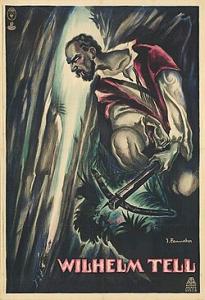
Sir Walter Scott (Scottish) (August 15, 1771 –September 21, 1832)
- The Lady of the Lake (1810) Classics Illustrated
- Rob Roy (1817) /Classics Illustrated
- Ivanhoe (1819) Great Illustrated Classics /used in League of Extraordinary Gentlemen /Classics Illustrated
- The Talisman (1824) Classics Illustrated
- Castle Dangerous (1831) Classics Illustrated
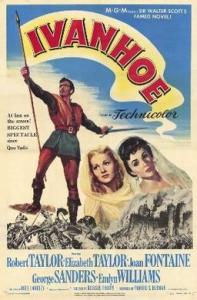
On Film
Ivanhoe, 1952, directed by Richard Thorpe, starring Robert Taylor, Elizabeth Taylor, Joan Fontaine and George Sanders; nominated for three Oscars.
Samuel Taylor Coleridge (October 21, 1772 –July 25, 1834)
- The Rime of the Ancient Mariner (1798) First Comics run in Classics Illustrated
In addition to being referred to in several other notable works, due to the popularity of the poem, the phrase “albatross around one’s neck” has become an English-language idiom referring to “a heavy burden of guilt that becomes an obstacle to success”.
The phrase “Water, water, every where, / Nor any drop to drink” has appeared widely in popular culture, but usually given in a more natural modern phrasing as “Water, water, everywhere / But not a drop to drink”; some such appearances have, in turn, played on the frequency with which these lines are misquoted.
- “Kubla Khan” (1816)
- Christabel (1816)
- The Destiny of Nations (1821)
Robert Southey (August 12, 1774 – March 21, 1843 )
- After Blenheim” (1796)
- Joan of Arc (1796)
- Thalaba the Destroyer (1809)
- “What Are Little Boys Made Of?” (1820)
- “The Story of the Three Bears” (1837) Published in The Doctor /Classics Illustrated Junior
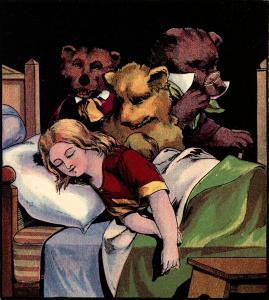
Jane Porter (December 3, 1775 –May 24, 1850)
Thaddeus of Warsaw (1803
The Scottish Chiefs (1810) Classics Illustrated
These books are seen as among the earliest historical novels in a modern style and among the first to become bestsellers. They were abridged and remained popular among children well into the twentieth century.
Jane Austen (English) (December 16, 1775 –July 18,1817)
Sense and Sensibility (1811) On Film (1995)
Pride and Prejudice (1813) On Film (1940) (2005) Great Illustrated Classics
Mansfield Park (1814) On Film (1999)
Emma (1815) On Film (1996) (2020)
Northanger Abbey (1818) (posthumous)
Persuasion (1818) (posthumous)
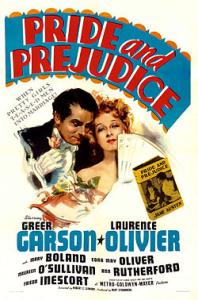
More Jane Austen
Emily C.A. Snyder
Nachtstürm Castle: A Gothic Austen Novel (2009)
Letters of Love & Deception (2011)
Samantha Henderson: Five Ways Jane Austen Never Died![]() (Fortean Bureau #29, March 2005)
(Fortean Bureau #29, March 2005)
Featured in Richard Horton’s ‘Fantasy: The Best of the Year 2006
The Jane Austen Project by Kathleen A. Flynn (2017)
On Film
Lost in Austen (2008)
Pride and Prejudice and Zombies (2016)
Lucy Aikin ( November 6, 1781 – January 29, 1864) under the pseudonym Mary Godolphin, Aikin also contributed as an editor to versions written “in Words of One Syllable”of
- Robinson Crusoe (1867)
- Evenings at Home (by her father and aunt) (1868)
- Sandford and Merton (1868)
- Pilgrim’s Progress (1869)
- Swiss Family Robinson (1869)
- Aesop’s Fables (1869)
Mary Ann Lamb (December 3, 1764 – May 20,1847)
Charles Lamb (February 10, 1775 –December 27,1834)
Tales from Shakespeare (Children’s Classics) (1807)
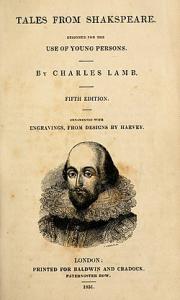
Ludwig Karl Grimm (1785–1863) and Wilhelm Carl Grimm (1786–1859),
Grimms’ Fairy Tales (1812, 1857) Great Illustrated Classics /Classics Illustrated Classics Illustrated Junior
On Film
The Wonderful World of the Brothers Grimm (1962) directed by Henry Levin and George Pal
The Brothers Grimm (2005) directed by Terry Gilliam

E T A Hoffmann (Prussian) (1776 – 1822)
The Nutcracker and the Mouse King (1816)
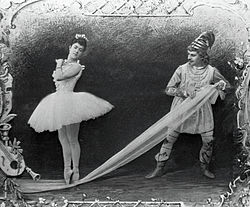
On Film
The Nutcracker Prince (1990)
The Nutcracker in 3D (2009)
The Nutcracker and the Four Realms (2018)
Washington Irving (April 3, 1783 – November 28, 1859)
The sketch book (1820) Great Illustrated Classics including
-Rip Van Winkle Classics Illustrated
-The Legend of Sleepy Hollow Classics Illustrated
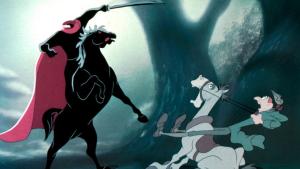
Derivative Work
Richard Gleaves
SLEEPY HOLLOW: Rise Headless and Ride (Jason Crane 2014
SLEEPY HOLLOW: Bridge of Bones (Jason Crane Book 2) 2014
SLEEPY HOLLOW: General of the Dead (Jason Crane Book 3) 2015
SALEM: Blood to Drink (Jason Crane Book 4) 2018
On Film
The Headless Horseman (1922)starring Will Rogers as Ichabod Crane.
The Adventures of Ichabod and Mr. Toad (1949) Disney Film narrated by Bing Crosby
Sleepy Hollow (1999)
The Legend of Sleepy Hollow (1999)
Davy Crockett (August 17, 1786 – March 6, 1836)
A Narrative of the Life of David Crockett of the State of Tennessee. (1834)

James Fenimore Cooper (American) (September 15, 1789 – September 14, 1851)
The Pirate (1822)
Leatherstocking Tales used in League of Extraordinary Gentlemen
1. The Deerslayer (1840) Classics Illustrated
2. The Last of the Mohicans (1826) Great Illustrated Classics / Classics Illustrated
3. The Pioneers (1823) Classics Illustrated
4. The Prairie (1824) Classics Illustrated
5. The Pathfinder (1841) Classics Illustrated
The Spy: A Tale of the Neutral Ground (1821) Classics Illustrated
The Pilot: A Tale of the Sea (1824) Classics Illustrated
The Red Rover (1828) Classics Illustrated
On Film
The Last of the Mohicans (1920) starring Wallace Beery
The Last of the Mohicans (1932) a serial version starring Harry Carey
The Last of the Mohicans (1936) starring Randolph Scott and Bruce Cabot
The Last of the Mohicans (1992) starring Daniel Day-Lewis
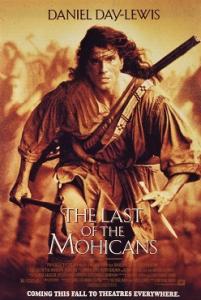
Frederick Marryat (July 10, 1792 – 9 August 9, 1848)
Mr Midshipman Easy (1836) Classics Illustrated
The Children of the New Forest (1847)
The Little Savage (posthumous, 1848, completed by Robert Folkestone Williams) Classics Illustrated
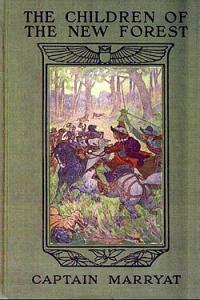
Mary Wollstonecraft Shelley (1797–1851)
Frankenstein (1818) Great Illustrated Classics /used in League of Extraordinary Gentlemen/Classics Illustrated
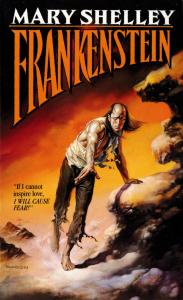
Derivative Works
Frankenstein Unbound (1973) by Brian Aldiss
The Frankenstein Papers (1986) by Fred Saberhagen
Dean Koontz’s Frankenstein
1. Prodigal Son (2005) (with Kevin J Anderson)
2. City of Night (2005) (with Ed Gorman)
3. Dead and Alive (2009)
4. Lost Souls (2010)
5. The Dead Town (2011)
Apprenticeship of Victor Frankenstein by Kenneth Oppel
1. This Dark Endeavor (2011)
2. Such Wicked Intent (2012)
On Film
Frankenstein (1910) produced by Edison Studios and directed by J. Searle Dawley
Frankenstein (1931) The first Frankenstein movie in the Universal Monster Series with Boris Karloff
Abbott and Costello Meet Frankenstein (1948)
Young Frankenstein (1974)
Frankenstein (2004)
I, Frankenstein (2014)
Victor Frankenstein (2015) starring Harry Potter and Professor X
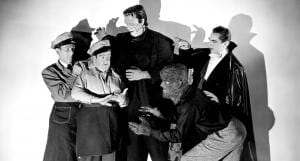
Alexander Pushkin (June 6, 1799 –February 10,1837)
The Queen of Spades (1834) Classics Illustrated
Short poems
– “Ode to Liberty“(1817)
– “I Loved You” (1829)
– “To the Slanderers of Russia“(1831)
Born in the 1800’s
John Henry Newman (February 21, 1801 – August 11, 1890)
- Essay on the Development of Christian Doctrine (1845)
- The Idea of a University (1852 and 1858)
- Apologia Pro Vita Sua (religious autobiography – 1864; revised edition, 1865)
Victor Hugo (French) (February 26, 1802 –May 22, 1885)
- The Last Day of a Condemned Man (1829)
- The Hunchback of Notre-Dame Hugo (1831) Great Illustrated Classics /used in League of Extraordinary Gentlemen /Classics Illustrated
- Les Misérables (1862) /used in League of Extraordinary Gentlemen /Classics Illustrated
- Toilers of the Sea (1866) /Classics Illustrated
- The Man Who Laughs ( 1869) /Classics Illustrated
Sequels
Laura Kalpakian’s Cosette: The Sequel to Les Misérables was published in 1995. It continues the story of Cosette and Marius, but is more a sequel to the musical than to the original novel.
In 2001, two French novels by François Cérésa [fr] that continue Hugo’s story appeared: Cosette ou le temps des illusions and Marius ou le fugitif. The former has been published in an English translation. Javert appears as a hero who survived his suicide attempt and becomes religious; Thénardier returns from America; Marius is unjustly imprisoned. The works were the subject of an unsuccessful lawsuit, Société Plon et autres v. Pierre Hugo et autres brought by Hugo’s great-great-grandson
Enchanted Attic # 1. Facing the Hunchback of Notre Dame (2012) by Lisa Samson
On Film
The Hunchback of Notre Dame, a 1923 silent film starring Lon Chaney as Quasimodo, directed by Wallace Worsley, and produced by Carl Laemmle and Irving Thalberg
The Hunchback of Notre Dame, a 1939 sound film starring Charles Laughton
The Hunchback of Notre Dame, a 1996 animated film by Walt Disney Pictures, directed by Kirk Wise and Gary Trousdale and produced by Don Hahn
The Hunchback of Notre Dame II,a sequel of the 1996 Disney movie.
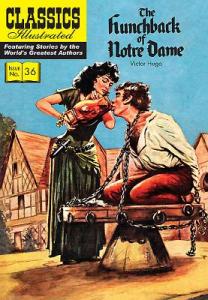
The 1935 film directed by Richard Boleslawski, starring Fredric March and Charles Laughton, nominated for Best Picture, Best Film Editing, Best Assistant Director at 8th Academy Awards.
The 1937 radio adaptation by Orson Welles.
The 1998 film, starring Liam Neeson and Geoffrey Rush.
The 2012 film of the musical, starring Hugh Jackman, Russell Crowe, Anne Hathaway and Amanda Seyfried.
Catharine Parr Traill (January 9, 1802 –August 29, 1899)
The Canadian Crusoes (1852) Considered the first Canadian novel for children.
Alexandre Dumas (July 24, 1802 –December 5, 1870)
King’s Musketeers
1. The Three Musketeers (1844) Great Illustrated Classics /used in League of Extraordinary Gentlemen/ Classics Illustrated
2. Twenty Years After (1845) Classics Illustrated
3. The Vicomte de Bragelonne (1847)
4. Ten Years Later (1847)
5. Louise De La Valliere (1845)
6. The Man in the Iron Mask (1910) Great Illustrated Classics /Classics Illustrated
The Red Sphinx (2017)
Blood Royal (2020)
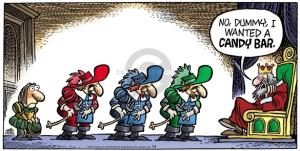
- The Conspirators (Le chevalier d’Harmental, 1843) adapted by Paul Ferrier for an 1896 opéra comique by Messager. Classics Illustrated
- The Corsican Brothers (Les Frères Corses, 1844) Classics Illustrated
- The Count of Monte Cristo (1845) Great Illustrated Classics /Classics Illustrated
- The Forty-Five Guardsmen (1847) (Les Quarante-cinq) Classics Illustrated
- The Queen’s Necklace (Le Collier de la Reine, (1849−1850) Classics Illustrated
- The Black Tulip (La Tulipe noire, 1850) Classics Illustrated
Stuart Gibbs
Last Musketeer
1. The Last Musketeer (2011)
2. Traitor’s Chase (2012)
Enchanted Attic #3. Dueling with the Three Musketeers (2013) by Lisa Samson
On Film
The Three Musketeers (1921) Douglas Fairbanks
The Count of Monte Cristo (1913) a silent film starring James O’Neill
Monte Cristo (1922) directed by Emmett J. Flynn
Iron Mask (1929) Douglas Fairbanks
The Three Musketeers (1939) Don Ameche and the Ritz Brothers
The Three Musketeers (1948), Gene Kelly, Van Heflin, Lana Turner, & June Allyson
At Sword’s Point (1952)
Disney’s The Three Musketeers (1993)
The Man in the Iron Mask (1998)
The Count of Monte Cristo (2002) starring Jim Caviezel
Edward Bulwer-Lytton (May 25, 1803 –January 18, 1873)
The Last Days of Pompeii (1834) Available online Classics Illustrated
The Coming Race or Vril: The Power of the Coming Race (1871)
Harold : the last of the Saxon kings (1874)/ Classics Illustrated Joint European Series (JES) – CCS Books Classics Illustrated
Eugène Sue (January 26, 1804 –August 3, 1857)
The Mysteries of Paris, (1843) Classics Illustrated
Nathaniel Hawthorne (American) (July 4, 1804 – May 19, 1864)”
- The Scarlet Letter (1850) Classics Illustrated
- The House of the Seven Gables (1851) Great Illustrated Classics Classics Illustrated
On Film
The Scarlet Letter (1934) directed by Robert G. Vignola and starring Colleen Moore, Henry B. Walthall, Betty Blythe, William Farnum, Alan Hale, Sr., Hardie Albright, and Shirley Jean Rickert.
The House of the Seven Gables (1940) with Vincent Price
More books by NH
Twice-Told Tales (1837)
Grandfather’s Chair (1840)
Rappaccini’s Daughter” (1844)
Mosses from an Old Manse (1846) including Feathertop” (1852)
The Snow-Image, and Other Twice-Told Tales (1852)
A Wonder-Book for Girls and Boys (1852) including The Golden Touch
Tanglewood Tales (1853)
The Great Stone Face and Other Tales of the White Mountains (1889
Hans Christian Anderson (April 2, 1805 –August 4,1875) Great Illustrated Classics Classics Illustrated Junior
The Complete Fairy Tales (1913)
On Film
Hans Christian Andersen (1952) starring Danny Kaye
Hans Christian Andersen: My Life as a Fairytale (2001)
Henry Wadsworth Longfellow (February 27, 1807 – March 24, 1882)
Poems on Slavery (1842)
Evangeline: A Tale of Acadie (epic poem) (1847)
The Song of Hiawatha (epic poem) (1855) /Classics Illustrated
The Courtship of Miles Standish (1858) /Classics Illustrated
Paul Revere’s Ride (1860)
Tales of a Wayside Inn (including the “second flight” of Birds of Passage) (1863)
Divine Comedy (1867) Translation
John Greenleaf Whittier – (December 17, 1807 – September 7, 1892)
Snow-Bound (1866) The poem, presented as a series of stories told by a family amid a snowstorm, was extremely successful and popular in its time. The poem depicts a peaceful return to idealistic domesticity and rural life after the American Civil War.
Oliver Wendell Holmes Sr. (August 29, 1809 – October 7, 1894) was an American physician, poet, and polymath based in Boston. Grouped among the fireside poets, he was acclaimed by his peers as one of the best writers of the day. He was also an important medical reformer. In addition to his work as an author and poet, Holmes also served as a physician, professor, lecturer, and inventor.
Table-talk books
- The Autocrat of the Breakfast-Table (1858
- The Professor at the Breakfast-Table (1860)
- The Poet at the Breakfast-Table (1872)
- Over the Teacups (1891) ]
- Novels
- Elsie Venner (1861
- The Guardian Angel (1867)
- A Mortal Antipathy (1885)
Edgar Allan Poe (January 19, 1809 – October 7, 1849) found in Great Tales of Action and Adventure/Great Illustrated Classics // Classics Illustrated
The Mystery Writers of America present an annual award known as the Edgar Award for distinguished work in the mystery genre.
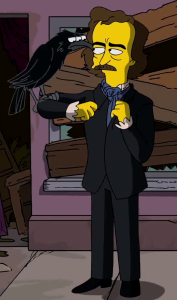
Edgar Allan Poe wrote this hymn about The Blessed Mother Mary..
At morn – at noon – at twilight dim –
Maria! thou hast heard my hymn!
In joy and woe – in good and ill –
Mother of God, be with me still!
When the Hours flew brightly by,
And not a cloud obscured the sky,
My soul, lest it should truant be,
Thy grace did guide to thine and thee
Now, when storms of Fate o’ercast
Darkly my Present and my Past,
Let my future radiant shine
With sweet hopes of thee and thine.

First collection of stories published (1827)
The Complete Tales and Poems of Edgar Allan Poe (1938) Including
• “The Black Cat”
• “The Cask of Amontillado”
• “The Masque of the Red Death”
• “The Murders in the Rue Morgue” used in League of Extraordinary Gentlemen / Classics Illustrated
• “The Pit and the Pendulum”
• “The Raven” a poem
• “The Tell-Tale Heart”
Poe in Fiction
“The Exiles” (September 1949) is a short story by Ray Bradbury, included in his collection of short stories, The Illustrated Man (1951), in which Poe is an entity who lives in a refuge on Mars. He is erased from time when his last work is destroyed on Earth.
The Man Who Was Poe (1989), a juvenile novel by Avi, features a young boy named Edmund befriending C. Auguste Dupin, who is actually Poe himself. Edmund and “Dupin” solve several mysteries in Providence, Rhode Island.
Nevermore (1995) by William Hjortsberg, features Harry Houdini and Arthur Conan Doyle solving a series of murders, which eerily re-enact the stories of Poe.
Edgar Allan Poe on Mars (2007) by Jean-Marc Lofficier and Randy Lofficier starring A young Edgar Allan Poe, alongside Gullivar Jones.
Misadventures of Edgar and Allan Poe
1. The Tell-Tale Start (2013)
2. Once Upon a Midnight Eerie (2014)
3. The Pet and the Pendulum (2015)
His Hideous Heart (2019) ed. by Dahlia Adler is a Young Adult anthology of reimaginings of 13 of Poe’s works, and also contains the original stories.
Poe on Film
The Loves of Edgar Allan Poe (1942)
The Man with a Cloak (1951)
Nikolai Gogol (April 1, 1809 – March 4, 1852)
Evenings on a Farm Near Dikanka (1832) including “A Terrible Vengeance” used in Classics Illustrated Joint European Series (JES) – CCS Books and “A Bewitched Place“.
Mirgorod (1835) including Taras Bulba (1835) Classics Illustrated Joint European Series (JES) – CCS Books /Classics Illustrated
1810’s
Harriet Beecher Stowe (American) (June 14, 1811 – July 1, 1896)
Uncle Tom’s Cabin; or, Life Among the Lowly (1852) /Classics Illustrated
The Ghost in the Mill (1870)
The Ghost in the Cap’n Brown House (1870)
Tom Toothacre’s Ghost Story (1871)
Sam Lawson’s Oldtown Fireside Stories (1881)
William Makepeace Thackeray (July 18, 1811 –December 24, 1863)
Vanity Fair (1848)
The Rose and the Ring (1855)
Charles Dickens (Feb 07, 1812 – Jun 09, 1870) (age 58)
The Adventures of Oliver Twist (1838) Great Illustrated Classics / Classics Illustrated
The Life and Adventures of Nicholas Nickleby (1839) / Classics Illustrated
The Old Curiosity Shop (1841)
David Copperfield (1850) Great Illustrated Classics / Classics Illustrated
A Tale of Two Cities (1859) Great Illustrated Classics / Classics Illustrated
Great Expectations (1861) Great Illustrated Classics / Classics Illustrated
The Signal-Man (1866) / Classics Illustrated
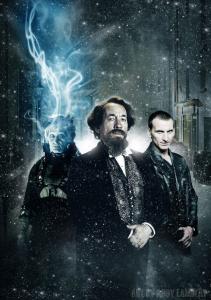
The Christmas Books (2010)
A Christmas Carol (1843) Great Illustrated Classics / Classics Illustrated
The Chimes (1844
The Cricket on the Hearth (1845)
The Battle of Life (1846)
The Haunted Man and the Ghost’s Bargain: A Fancy for Christmas-Time (1848)
The Magic Fishbone (1868) The Complete Ghost Stories of Charles Dickens (1982)
On Film and TV
Bonanza (1959–1973) Episode: A Passion for Justice (1963)
Doctor Who (2005– ) Season 1 | Episode 3 The Unquiet Dead (2005)
The Man Who Invented Christmas (2017)
Robert Browning (May 7, 1812 – December 12, 1889)
The Ring and the Book (1868–1869)
The Pied Piper of Hamelin (1842) Classics Illustrated Junior
Edward Lear (May 12, 1812– January 29, 1888)
The Book of Nonsense (1846)
Charles Reade (June 8, 1814 –April 11, 1884)
The Cloister and the Hearth (1861) Classics Illustrated
Richard Henry Dana Jr. (August 1, 1815 – January 6, 1882)
Two Years Before the Mast (1840) Classics Illustrated
Pyotr Pavlovich Yershov (March 6, 1815 – August 30, 1869)
The Little Humpbacked Horse (1834) Classics Illustrated Junior
The Tale of the Fisherman and the Fish (1835)
(Brontë English)
Jane Eyre (1847) by Charlotte Brontë (1816–1855) Great Illustrated Classics / Classics Illustrated
Wuthering Heights (1847) by Emily Brontë (1818–1848) Classics Illustrated
Agnes Grey (1847) by Anne Brontë (1820–1849)
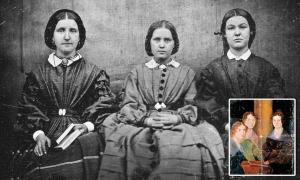
Branwell (1817–1848) brother
On Film
Devotion (1946) Ida Lupino plays Emily Brontë and Olivia de Havilland plays Charlotte Brontë.
To Walk Invisible (2016)
Henry David Thoreau (American) (July 12, 1817 – May 6, 1862)
Walden (1854)
Civil Disobedience (1849)
Tom Taylor ( October 19, 1817 – 12 July 1880)
Our American Cousin (1858
Frederick Douglass (c. February 14, 1818 – February 20, 1895) Classics Illustrated Acclaim Books
- Narrative of the Life of Frederick Douglass, an American Slave (1845)
- My Bondage and My Freedom (1855)
- Life and Times of Frederick Douglass (1881)
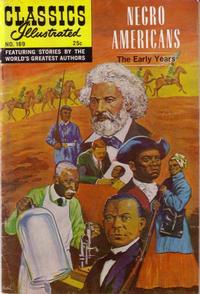
John Ruskin (February 8, 1819 – January 20, 1900) was an English polymath – a writer, lecturer, art historian, art critic, draughtsman and philanthropist of the Victorian era. He wrote on subjects as varied as art, architecture, political economy, education, museology, geology, botany, ornithology, literature, history, and myth.
The King of the Golden River, or the Black Brothers. A Legend of Stiria (1850) Classics Illustrated Junior
Walt Whitman (May 31, 1819 – March 26, 1892) On the assassination of Abraham Lincoln, whom Whitman greatly admired, he authored two poems, “O Captain! My Captain!” and “When Lilacs Last in the Dooryard Bloom’d“, and gave a series of lectures on Lincoln
Charles Kingsley (June 12, 1819 –January 23, 1875)
Westward Ho! (1855) / Classics Illustrated
The Heroes, Greek Fairy Tales for Children (1856)
The Water-Babies (1863) On Film (1978)
Herman Melville (American) (August 1, 1819 – September 28, 1891)
Typee (1846) Classics Illustrated
Moby-Dick; or, The Whale (1851) Great Illustrated Classics Classics Illustrated
The Piazza Tales (1856) featuring Benito Cereno Joint European Series: Classics Illustrated JES Facsimiles – CCS Books
Billy Budd, Sailor (An Inside Narrative) (Published Posthumously (1924) On Film (1962)
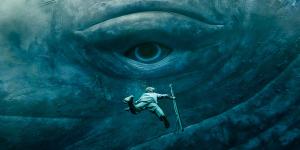
The novel Involution Ocean by Bruce Sterling, published in 1977, features the world Nullaqua where all the atmosphere is contained in a single, miles-deep crater. The story concerns a ship sailing on the ocean of dust at the bottom, which hunts creatures called dustwhales that live beneath the surface. It is a science-fictional pastiche of Moby-Dick.
Philip Jose Farmer wrote a sequel called The Wind Whales of Ishmael, in which Ishmael is transported to the far-future where flying whales are hunted from aircraft.
China Miéville’s 2012 novel Railsea, set on an ocean of railroad tracks instead of on the sea, has been described as an “affectionate parody” of Moby-Dick
Enchanted Attic # 2. Saving Moby Dick (2012) by Lisa Samson
On Film
Moby Dick, by Lloyd Bacon (1930)
Moby Dick, a 1956 film directed by John Huston and starring Gregory Peck as Captain Ahab, with screenplay by Ray Bradbury.
Moby Dick, a 1998 television movie starring Patrick Stewart as Ahab. Gregory Peck won a Golden Globe for his portrayal of Father Mapple
In the Heart of the Sea (2015)
Mary Ann Evans (November 22, 1819 –December 22, 1880); known by her pen name George Eliot
The Mill on the Floss (1860)
Silas Marner (1861) Classics Illustrated
On Film
The Mill on the Floss (1937)
The actor Michael Williams played Marner in a Focus on the Family Radio Theatre two-part adaptation for radio; this was to be the last acting role before his death. The production also featured Edward Woodward, Jenny Agutter, Alex Jennings and Timothy Bateson and has subsequently been re-broadcast on BBC Radio 7.
Steve Martin wrote, produced, and starred in a 1994 film adaptation of the novel, titled A Simple Twist of Fate.
1820’s
Anna Sewell (March 30, 1820 –April 25, 1878)
Black Beauty (1877) Great Illustrated Classics /Classics Illustrated
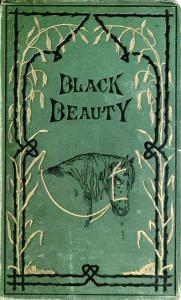
Sir Richard Francis Burton (March 19, 1821 – October 20, 1890)
A Personal Narrative of a Pilgrimage to Al-Madinah and Meccah. (1855)
The Book of the Thousand Nights and a Night (1885) which include “Aladdin’s Wonderful Lamp” , “Ali Baba and the Forty Thieves“and “The Seven Voyages of Sinbad the Sailor“.
Fyodor Dostoevsky (Russian) (Nov 11, 1821 – Feb 09, 1881)
The Double (1846)
The House of the Dead (1861)
Notes from Underground (1864)
Crime and Punishment (1866) / Classics Illustrated
The Idiot (1869)
The Brothers Karamazov (1880) Joint European Series: Classics Illustrated JES Facsimiles – CCS Books
Erckmann-Chatrian was the name used by French authors Émile Erckmann (1822–1899) and Alexandre Chatrian (1826–1890), nearly all of whose works were jointly written.
- Madame Thérèse (1863)
- Story of a Conscript of 1813 (1864)
- Waterloo (sequel to Conscrit of 1813, 1865) Classics Illustrated
- The Polish Jew, play (1867)
- The Man-Wolf and Other Tales (1876, rpt 1976)
Edward Everett Hale (April 3, 1822 – June 10, 1909)
“The Man Without a Country” (1863) published in Atlantic Monthly, in support of the Union during the Civil War. He was the grand-nephew of Nathan Hale, the American spy during the Revolutionary War.
Thomas Hughes (October 20 1822 –March 22, 1896)
Tom Brown’s Schooldays (1857) /Classics Illustrated
Tom Brown at Oxford (1861)

Donald Grant Mitchell (April 12, 1822 – December 15, 1908) He was an American essayist and novelist who usually wrote under the pen name Ik Marvel. He retold part one of Gulliver’s Travels in the form of a short story for children, published in St. Nicholas magazine in 1874.
Reveries of a bachelor: or A book of the heart (1851)
Doctor Johns : being a narrative of certain events in the life of an orthodox minister of Connecticut (1866)
Dream life : fable of the seasons (1876)
About old story-tellers : of how and when they lived, and what stories they told (1878)
American lands and letters. (1897)

Francis Parkman (September 16, 1823 – November 8, 1893
- The Oregon Trail: Sketches of Prairie and Rocky-Mountain Life (1849) Classics Illustrated
- The conspiracy of Pontiac : and the Indian war after the conquest of Canada (1870) Classics Illustrated
- France and England in North America (1865–1892): Some material is used in Classics Illustrated Joint European Series (JES) – CCS Books
- The Pioneers of France in the New World (1865)
- The Jesuits in North America in the Seventeenth Century (1867)
- La Salle and the Discovery of the Great West (1869; expanded edition, 1879)
- The Old Régime in Canada (1874)
- Count Frontenac and New France under Louis XIV (1877)
- Montcalm and Wolfe (1884)
- A Half Century of Conflict (1892)
Wilkie Collins (English) (January 8, 1824 –September 23, 1889)
A Terribly Strange Bed (1852) first published in Household Words, a magazine edited by Charles Dickens. Classics Illustrated
The Woman in White (1860) Classics Illustrated
The Moonstone (1868) Classics Illustrated
Eliza Allen Starr (August 29, 1824 – September 8, 1901)
Patron saints (1883)
Songs of a Life-time (1888)
The Seven Dolors of the Blessed Virgin Mary (1898)
The Three Archangels and the Guardians Angels in Art (1899)
The Life and Letters of Eliza Allen Starr (1904)
George MacDonald (December 10, 1824 – September 18, 1905)
Phantastes (1858)
Adela Cathcart (1864)
The Portent (1864) Variant Title: Lady of the Mansion (1979)
At the Back of the North Wind (1870)
The Princess and the Goblin (1871)
Sir Gibbie (1879)
The Gifts of the Child Christ and Other Tales (1882)
The Princess and Curdie (1882)
The Flight of the Shadow (1891)
Lilith (1895)
The Complete Fairy Tales (1999)
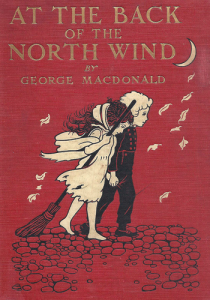
Harriet E. Wilson
(March 15, 1825 – June 28, 1900)
She was an African-American novelist. She was the first African American to publish a novel in North America.
Her novel Our Nig, or Sketches from the Life of a Free Black was published anonymously in 1859 in Boston, Massachusetts, and was not widely known. The novel was discovered in 1982 by the scholar Henry Louis Gates, Jr., who documented it as the first African American novel published in the United States.

Robert Ballantyne (April 24, 1825 – February 8, 1894)
The Coral Island (1858
The Dog Crusoe and his Master (1860) Classics Illustrated
The Gorilla Hunters (1861) Classics Illustrated
Carlo Collodi (November 24, 1826 – October 26, 1890),
The Adventures of Pinocchio: The Story of a Puppet (1883) Classics Illustrated Junior
General Lew Wallace (April 10, 1827 – February 15, 1905)
Ben-Hur: A Tale of the Christ by American (1880) /Classics Illustrated
The Boyhood of Christ (1888)
The First Christmas from Ben-Hur (1899)

R.D.. Blackmore (June 7, 1825 –January 20, 1900)
Lorna Doone: a romance of Exmoor (1869) Classics Illustrated
Alexander Afanasyev (July 23, 1826 – October 5, 1871)
Russian Fairy Tales (1855 and 1863) Classics Illustrated Junior
Johanna Spyri (June 12 1827 –July 7, 1901)
Heidi (1880) Great Illustrated Classics
written by Spyri’s translator Charles Tritten
Heidi Grows Up (1938)
Heidi’s Children (1939)
Susan Shelby Magoffin (July 30, 1827 –October 26, 1855)
Down the Santa Fe Trail and Into Mexico: The Diary of Susan Shelby Magoffin, 1846–1847 (1926)
Jules Verne (February 8, 1828 –March 24,1905)
Five Weeks in a Balloon (1863)
A Journey to the Centre of the Earth (1864) Great Illustrated Classics /used in League of Extraordinary Gentlemen /Classics Illustrated
From the Earth to the Moon (1865) /Classics Illustrated
Twenty Thousand Leagues Under the Sea (1869–1870) Great Illustrated Classics / used in League of Extraordinary Gentlemen /Classics Illustrated
Around the World in Eighty Days (1873) Great Illustrated Classics / used in League of Extraordinary Gentlemen /Classics Illustrated
In Search of the Castaways (1873)
The Fur Country (1873) Classics Illustrated JES Facsimiles – CCS Books
The Mysterious Island (1875) /Classics Illustrated
Michael Strogoff: The Courier of the Czar (1876) /Classics Illustrated
Off on a Comet (1877) /Classics Illustrated
The Steam House (1880) /Classics Illustrated
Robur the Conqueror (1886) used in League of Extraordinary Gentlemen /Classics Illustrated
The Village in the Treetops (1901) Classics Illustrated JES Facsimiles – CCS Books
Master of the World (1904) used in League of Extraordinary Gentlemen /Classics Illustrated
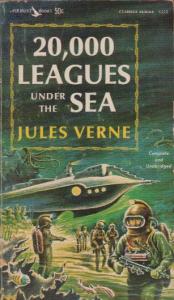
Luke Challenger Adventure Steve Barlow and Steve Skidmore
1. Return to the Lost World (2010)
2. Return to 20, 000 Leagues Under the Sea (2011)
3. Return to King Solomon’s Mines (2012)
Edmond François Valentin About (February 14, 1828 –January 16, 1885) was a French novelist, publicist and journalist.
“The King of the Mountains by Edmond About”. (1857) (“The king of the mountains”) Classics Illustrated
Henrik Johan Ibsen (March 20, 1828 – May 23, 1906) He pioneered theatrical realism, but also wrote lyrical epic works. His major works include Brand, Peer Gynt, Emperor and Galilean, A Doll’s House, Ghosts, An Enemy of the People, The Wild Duck, Rosmersholm, Hedda Gabler, The Master Builder, and When We Dead Awaken. Ibsen is the most frequently performed dramatist in the world after Shakespeare, A Doll’s House was the world’s most performed play in 2006.
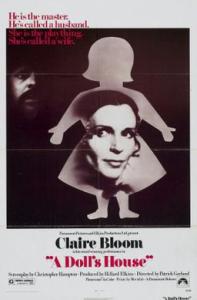
Charles Dudley Warner (September 12, 1829 – October 20, 1900) He was an American essayist, novelist, and friend of Mark Twain, with whom he co-authored the novel
The Gilded Age: A Tale of Today. (1873)
Leo Tolstoy (Russian) 9 September [O.S. 28 August] 1828 – 20 November [O.S. 7 November] 1910)
• War and Peace 1869)
• Anna Karenina 1877)
• The Death of Ivan Ilyich 1886)
Master and Man (short story) (1895) /Classics Illustrated
• Three Questions (1903)
Hadji Murat (1912/1917) Joint European Series: Classics Illustrated JES Facsimiles – CCS Books
1830’s
Emily Dickinson (December 10, 1830 – May 15, 1886)
List of Emily Dickinson poems
Mary Mapes Dodge (January 26, 1831 – August 21, 1905)
Hans Brinker or the Silver Skates (1865) Great Illustrated Classics
Nikolai Leskov (February 16, 1831 –March 5, 1895)
Lady Macbeth of Mtsensk (1865), which was later made into an opera by Shostakovich);
The Cathedral Folk (1872);
The Enchanted Wanderer (1873);
“The Tale of Cross-eyed Lefty from Tula and the Steel Flea” (1881).
Mary Louise Booth (April 19, 1831 – March 5, 1889) was an American editor, translator, and writer. She was the first editor-in-chief of the women’s fashion magazine, Harper’s Bazaar.
Works by Mary Louise Booth at Project Gutenberg /Internet Archive
Amelia Ann Blanford Edwards (June 1831 – April 15, 1892)
The Phantom Coach (1864)
A Thousand Miles up the Nile (1877)
Lewis Carroll (January 27, 1832 –January 14,1898) Lewis Carroll and I share the same birthday.
Alice
1. Alice’s Adventures in Wonderland (1865) Great Illustrated Classics /used in League of Extraordinary Gentlemen /Classics Illustrated
2. Through the Looking Glass and What Alice Found There (1871) (includes “Jabberwocky” and “The Walrus and the Carpenter“) /Classics Illustrated
The Nursery “Alice” (1890)
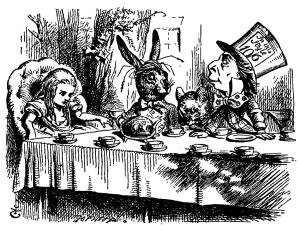
Alice in Wonderland Clones
Imitations
Mopsa the Fairy (1869)
Davy and the Goblin (1884)
The Admiral’s Caravan (1891)
Gladys in Grammarland (1896)
A New Wonderland (1898)
Rollo in Emblemland (1902)
Justnowland (1912)
Alice in Orchestralia (1925)
Parodies
The Westminster Alice (1902)
Caroline Lewis (pseudonym for Edward Harold Begbie (1871 –October 8, 1929), J. Stafford Ransome, and M. H. Temple (1862–1928 ),
Clara in Blunderland (1902)
Lost in Blunderland (1903)
John Bull’s Adventures in the Fiscal Wonderland (1904)
Alice in Blunderland: An Iridescent Dream (1904)
More Wonder
Works based on Alice in Wonderland
Mad Hatters and March Hares (2017) Ellen Datlow
Wonderland (2019) Marie O’Regan with Paul Kane
Other Lewis Carroll Works
- Phantasmagoria and Other Poems (1869)
- The Blank Cheque: A Fable (1874)
- The Hunting of the Snark (1876) used in League of Extraordinary Gentlemen
- Rhyme? And Reason? (1883) – shares some contents with the 1869 collection, including the long poem “Phantasmagoria”
- A Tangled Tale (1885)
- Sylvie and Bruno (1889)
- Sylvie and Bruno Concluded (1893)
- Pillow Problems (1893)
- What the Tortoise Said to Achilles (1895)
- Three Sunsets and Other Poems (1898)
- The Manlet (1903)
Edmond Rostand (April 14, 1832 –January 9, 1908)
Cyrano de Bergerac (1897) Classics Illustrated
Wilhelm Busch
Max and Moritz (1865)
Louisa May Alcott (November 29, 1832 – March 6, 1888)
Little Women (1880) Great Illustrated Classics
Little Men (1871)
Jo’s Boys (1886).
G.A. Henty (December 8, 1832 –November 16, 1902)
The Dragon & The Raven (1886)
For The Temple (1888)
Under Drake’s Flag (1883)
In Freedom’s Cause (1885) Classics Illustrated
The Lion of the North: A Tale of Gustavus Adolphus and the Wars of Religion ( August 19, 1885) Classics Illustrated
The Young Carthaginian: A Story of The Times of Hannibal (1887)Classics Illustrated Joint European Series (JES) – CCS Books
In the Reign of Terror (1888) Classics Illustrated
With Lee in Virginia (1890) Classics Illustrated Joint European Series (JES) – CCS Books
Won by the Sword: A Story of the Thirty Years War (June 1, 1899) Classics Illustrated
Horatio Alger Jr. (January 13, 1832 – July 18, 1899)
Ragged Dick (1868)
William Morris (March 24, 1834 –October 3, 1896)
News from Nowhere (or, An Epoch of Rest) (1890)
The Wood Beyond the World (1894)
Frank R. Stockton (April 5, 1834 – April 20, 1902)
The Lady or the Tiger? and Other Stories, David Douglas, 1884
The Bee-Man of Orn and Other Fanciful Tales, Charles Scribner’s Sons, 1887
The Adventures of Captain Horn, 1895
William Chester Minor
(June 22, 1834 –March 26, 1920)
He was an American army surgeon, psychiatric hospital patient, and lexicographical researcher. After serving in the Union Army during the American Civil War, Minor moved to England. Affected by delusions, he shot a man who he believed had broken into his room, and was consequently committed from 1872 to 1910 to a secure British psychiatric hospital.
While incarcerated, Minor became an important contributor to the Oxford English Dictionary. He was one of the project’s most effective volunteers, reading through his large personal library of antiquarian books and compiling quotations that illustrated how particular words were used.
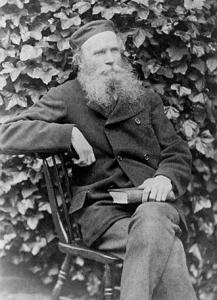
Sarah Chauncey Woolsey (January 29, 1835 – April 9, 1905)
Katy Series
1. What Katy Did (1872)
2. What Katy Did at School (1873)
3. What Katy Did Next (1886)
4. Clover (1888)
5. In the High Valley (1890)
E.M. Bounds (August 15, 1835 – August 24, 1913)
- Preacher and Prayer(1907)
- The Resurrection(1907, republished in 1921 as Ineffable Glory: Thoughts on the Resurrection)
- Power Through Prayer(1910)
- Purpose in Prayer(1920)
- Prayer and Praying Men(1921)
- Heaven: A Place—A City—A Home(1921)
- Satan: His Personality, Power and Overthrow(1922)
- The Possibilities of Prayer(1923)
- The Reality of Prayer(1924)
- The Essentials of Prayer(1925)
- The Necessity of Prayer(1929)
- The Weapon of Prayer(1931)
Augusta Wilson
May 8, 1835 – May 9, 1909)
She was an American author of Southern literature and a supporter of the Confederacy during the American Civil War. Her books were banned by the American Library Association in 1881. She was the first woman to earn US$100,000 through her writing.
Wilson was a native of Columbus, Georgia. Her first book, Inez, a Tale of the Alamo, was written when she was still young and published by Harpers. Her second book, Beulah, was issued in 1859 and became at once popular, still selling well when the American Civil War began
Mark Twain aka: Samuel Langhorne Clemens (November 30, 1835 – April 21, 1910),
Tom and Huck
The Adventures of Tom Sawyer (1876) Great Illustrated Classics /used in League of Extraordinary Gentlemen/ /Classics Illustrated
The Adventures of Huckleberry Finn (1885) Great Illustrated Classics /Classics Illustrated
Tom Sawyer Abroad (1894)
Tom Sawyer, Detective (1896)
Huck Finn and Tom Sawyer among the Indians and other unfinished stories (1989)
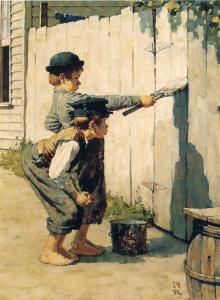
The Prince and the Pauper (1881) Great Illustrated Classics / /Classics Illustrated
Personal Recollections of Joan of Arc (1886)
A Connecticut Yankee in King Arthur’s Court (1889) /Classics Illustrated
Pudd’nhead Wilson(1894) /Classics Illustrated
John T. Lewis
(1835-1906)
Lewis was one of the real-life people upon whom he based the character of Jim, and it is even possible that his acquaintance with Lewis caused Twain to continue working on the novel after having earlier set it aside.
Twain’s friendship with Lewis was hardly atypical; of all the white authors in this period, he was the one most fully immersed in and appreciative of African American culture and the one most at home in the company of African Americans. The man who inspired Mark Twain’s “Huckleberry Finn” | Knitting and Crochet Forum

Bret Harte (August 25, 1836 – May 5, 1902)
“The Luck of Roaring Camp” (1868) Helped push Harte to international prominence. Classics Illustrated
“The Outcasts of Poker Flat” (1869) found in The Western hall of fame Classics Illustrated
Tennessee’s Partner (short story; 1869) Described as “one of the earliest ‘buddy’ stories in American fiction.
The Tales of the Argonauts (1875) including How Santa Claus Came to Simpson’s Bar (1875)
The Mermaid of Lighthouse Point • (1900)
W. S. Gilbert (1836–1911) /Arthur Sullivan (1842–1900) Major works and original London runs
The Sorcerer (1877) 178 performances
H.M.S. Pinafore; or, The Lass That Loved a Sailor (1878) 571 performances
The Pirates of Penzance; or, The Slave of Duty (1879) 363 performances
The Gondoliers; or, The King of Barataria (1889) 554 performances
Augustus AllenHayes, (1837-1892)
The Denver Express (1884) Classics Illustrated Joint European Series (JES) – CCS Books
James Murray (lexicographer)
(February 7, 1837 – July 26, 1915)
He was a British lexicographer and philologist. He was the primary editor of the Oxford English Dictionary (OED) from 1879 until his death.
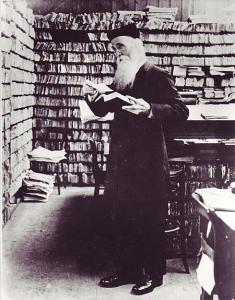
Joseph Bell
(December 2, 1837 –October 4, 1911)
He was a Scottish surgeon and lecturer at the medical school of the University of Edinburgh in the 19th century. He is best known as an inspiration for the literary character, Sherlock Holmes.
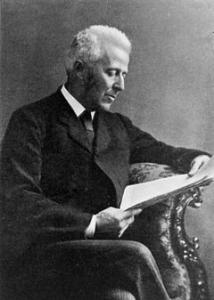
Edwin A Abbott (1838 – 1926)
Flatland: A Romance of Many Dimensions (1884)
Sphereland: A Fantasy About Curved Spaces and an Expanding Universe (1884)
Paradosis: or In the Night in Which He was Betrayed (1904)
Francis Pharcellus Church
(February 22, 1839 – April 11, 1906)
He was an American publisher and editor. In 1897, Church wrote the editorial “Yes, Virginia, there is a Santa Claus“. Produced in response to eight-year-old Virginia O’Hanlon‘s letter asking whether Santa Claus was real, the widely republished editorial has become one of the most famous ever written.
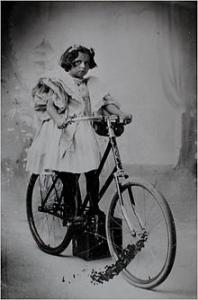
Ouida (January 1, 1839 – January 25, 1908) Going by the name Marie Louise de la Ramée and known by the pseudonym Ouida wrote more than 40 novels, as well as short stories, children’s books and essays. Moderately successful, she lived a life of luxury, entertaining many of the literary figures of the day.
Under Two Flags (1867) Classics Illustrated
A Dog of Flanders (1872)
Mrs. Molesworth(Mary Louisa Molesworth) (1839 – 1921)
The Cuckoo Clock (1877)
The Tapestry Room (1879) as Ennis Graham
Christmas Tree Land (1884)
1840’s
Émile Zola (April 2, 1840 – September 29, 1902)
La Débâcle or The Downfall (1892) Classics Illustrated
L’attaque du moulin The Attack on the Mill) (1894) Classics Illustrated Joint European Series (JES) – CCS Books
Edward S. Ellis (April 11, 1840 – June 20, 1916)
The Steam Man of the Prairies (1868)
The Life of Kit Carson; Hunter, Trapper, Guide, Indian Agent, and Colonel U.S.A. (1895)
Palmer Cox (April 28, 1840 – July 24, 1924)(April 28, 1840 – July 24, 1924)
- The Brownies, Their Book (1887)
- Another Brownie Book (1890)
- The Brownies at Home (1893)
- The Brownies Around the World (1894)
- The Brownies in Fairyland (1894)
- The Brownies Through the Union (1895)
- Frontier Humor (1895)
- The Brownies Abroad (1899)
- The Brownies in the Philippines
- The Monk’s Victory and other Stories by Palmer Cox (1903)
- The Palmer Cox Brownie Primer (1906)
- The Brownie Clown in Brownie Town (comics 1907)
- The Brownies Many More Nights (1913)
- The Brownies and Prince Florimel (1918)
- The Brownie Calendar
- Palmer Cox’s Brownies (play)
- The Brownies in Fairyland (lyrics[13] 1925)
Thomas Hardy (June 2, 1840 – January 11, 1928)
Far from the Madding Crowd (1874), The Mayor of Casterbridge (1886)
Tess of the d’Urbervilles (1891
Wessex Tales (1919)
Thomas Nast (September 26, 1840– December 7, 1902) was a German-born American caricaturist and editorial cartoonist often considered to be the “Father of the American Cartoon”. He created a modern version of Santa Claus (based on the traditional German figures of Saint Nicholas and Weihnachtsmann) and the political symbol of the elephant for the Republican Party (GOP). Contrary to popular belief, Nast did not create Uncle Sam (the male personification of the United States Federal Government), Columbia (the female personification of American values), or the Democratic donkey, although he did popularize those symbols through his artwork.
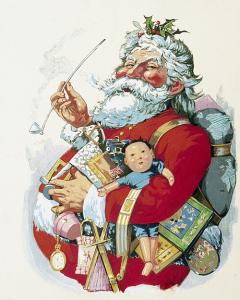
Bracebridge Hemyng (1841 – 1901)
- Jack Harkaway’s Boy Tinker Among The Turks
- Jack Harkaway and His Son’s Escape from the Brigands of Greece
- Jack Harkaway in New York; or, The Adventures of the Travelers’ Club
- The Slave of the Mine; or, Jack Harkaway in ‘Frisco
- Young Jack Harkaway Fighting the Pirates of the Red Sea
Jack Harkaway is used in League of Extraordinary Gentlemen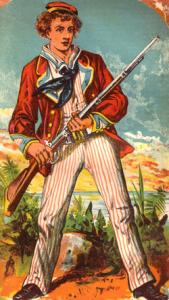
Ina Coolbrith March 10, 1841 – February 29, 1928) was an American poet, writer, librarian, and a prominent figure in the San Francisco Bay Area literary community. Called the “Sweet Singer of California”, she was the first California Poet Laureate and the first poet laureate of any American state.
- Selected poems
-
The Sea-Shell
“And love will stay, a summer’s day!”
A long wave rippled up the strand,
She flashed a white hand through the spray
And plucked a sea-shell from the sand;
And laughed—”O doubting heart, have peace!
When faith of mine shall fail to thee
This fond, remembering shell will cease
To sing its love, the sea.”Ah, well! sweet summer’s past and gone,—
And love, perchance, shuns wintry weather,—
And so the pretty dears are flown
On lightsome, careless wings together.
I smile: this little pearly-lined,
Pink-veined shell she gave to me,
With foolish, faithful lips to find
Still sing its love, the sea.
- “The Mother’s Grief.”, 1866
- “When the Grass Shall Cover Me”
- California, 1871, 1918
- “With a Wreath of Laurel”, 1881
- “Isabella of Spain”, 1893
- “Copa De Oro (California Poppy)”, 1907
- “San Francisco, April, 1906”, 1914
Works by Ina Coolbrith at Project Gutenberg
Henry Morton Stanley (January 28 1841 –May 10, 1904)
- How I Found Livingstone: Travels, Adventures and Discoveries in Central Africa: Including an Account of Four Months’ Residence with Dr. Livingstone (1872) Classics Illustrated
- Coomassie and Magdala: The Story of Two British Campaigns in Africa. (1874)
- Through the Dark Continent; Or, The Sources of the Nile: Around the Great Lakes of Equatorial Africa and Down the Livingstone River to the Atlantic Ocean (1878)
- The Congo and the Founding of Its Free State: A Story of Work and Exploration. (1885)
- In Darkest Africa; Or, The Quest, Rescue, and Retreat of Emin, Governor of Equatoria (1890)
- My Dark Companions and Their Strange Stories. (1893)
- Slavery and the Slave Trade in Africa (1893)
- The Autobiography of Sir Henry Morton Stanley. (1909)
William Henry Hudson (August 4, 1841 –August 18, 1922)
Green Mansions (1904) Classics Illustrated
Sidney Lanier (February 3, 1842 – September 7, 1881)
The Boy’s King Arthur (1880)
John Fiske (March 30, 1842 – July 4, 1901)
- The War of Independence, a book for young people (1889)
- A United States History for Schools (1895)
Ambrose Gwinnett Bierce (June 24, 1842 – circa 1914)
An Inhabitant of Carcosa • (1886) found in The Fantasy Hall of Fame
An Occurrence at Owl Creek Bridge (1890)
The Damned Thing • (1893) found in The Horror Hall of Fame
The Cynic’s Word Book (1906)
The Devil’s Dictionary (1911) Classics Illustrated
Jesse Lyman Hurlbut (February 15, 1843 –1930)
Stories of Our Naval Heroes Every Child Can Read (1908)
The Pilgrim’s Progress by John Bunyan Every Child Can Read (1909)
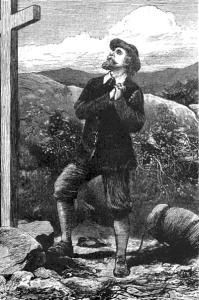
Henry James (American) (April 15, 1843 – February 28,1916)
The American (1877)
Daisy Miller (1879)
Washington Square (1880)
The Portrait of a Lady (1881)
The Bostonians (1886) A young Olive Chancellor appears as a character in The League of Extraordinary Gentlemen. Due to her feminist beliefs, the young Olive met a humiliating fate in this universe. Her cameo displays that she was sent to the ‘Correctional Academy for Wayward Gentlewoman’, and is spanked with a cane across her bare bottom by the harsh teacher Ms. Katy Carr as another student held Olive down, promising to beat the ‘independent American’ out of her, Olive is simply left to plead for mercy. It is used in League of Extraordinary Gentlemen.
The Aspern Papers (1888)
What Maisie Knew (1897)
The Turn of the Screw (1898)
The Wings of the Dove (1902)
The Ambassadors (1903)
The Golden Bowl (1904)
Charles Warren Stoddard (August 7, 1843 – April 23, 1909) Stoddard visited Molokai several times and became well acquainted with Father Damien–a Catholic saint since 2009–who ministered to the lepers there. Stoddard’s The Lepers of Molokai, according to Robert Louis Stevenson, did much to establish Father Damien’s position in public esteem. In 1867, soon after his first visit to the South Sea Islands, Stoddard was received into the Catholic Church. He told the story of his conversion in a small book, A Troubled Heart and How it was Comforted, of which he said: “Here you have my inner life all laid bare
- South-Sea Idyls (1873)
- Summer Cruising in the South Seas (1874)
The Lepers of Molokai (1885) - #6 – A troubled heart : and how it was comforted at last (1885)
- The Wonder-Worker of Padua (1896)
- Over the Rocky Mountains to Alaska (1899)
- In the Footprints of the Padres (1902)
Exits and Entrances: A Book of Essays and Sketches (1903) - A Bit of Old China (1912)
Gerard Manley Hopkins SJ (July 28, 1844 – June 8, 1889)
Well-known works by Hopkins include:
Andrew Lang (March 31, 1844 –July 20,1912)
- The Blue Fairy Book (1889)
- The Red Fairy Book (1890)
- The Blue Poetry Book (1891)
- The Green Fairy Book (1892)
- The True Story Book (1893)
- The Yellow Fairy Book (1894)
- The Red True Story Book (1895)
- The Animal Story Book (1896)
- The Pink Fairy Book (1897)
- The Arabian Nights’ Entertainments (1898) Classics Illustrated
- The Red Book of Animal Stories (1899)
- The Grey Fairy Book (1900)
- The Violet Fairy Book (1901)
- The Book of Romance (1902)
- The Crimson Fairy Book (1903)
- The Brown Fairy Book (1904)
- The Red Romance Book (1905)
- The Orange Fairy Book (1906)
- The Olive Fairy Book (1907)
- The Book of Princes and Princesses (1908)
- The Red Book of Heroes (1909)
- The Lilac Fairy Book (1910)
- The All Sorts of Stories Book (1911)
- The Book of Saints and Heroes (1912)
- The Strange Story Book (1913)
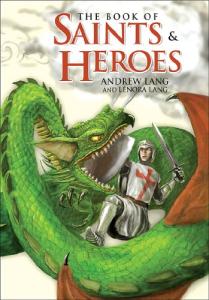
Margaret Sidney (June 22, 1844 – August 2, 1924)
Five Little Peppers and How They Grew (1881)
Five Little Peppers Midway (1890)
Five Little Peppers Grown Up (1892)
Five Little Peppers: Phronsie Pepper (1897)
Five Little Peppers: The Stories Polly Pepper Told (1899)
Five Little Peppers: The Adventures of Joel Pepper (1900)
Five Little Peppers Abroad (1902)
Five Little Peppers At School (1903)
Five Little Peppers and Their Friends (1904)
Five Little Peppers: Ben Pepper (1905)
Five Little Peppers in the Little Brown House (1907)
Five Little Peppers: Our Davie Pepper (1916)
On Film
- Five Little Peppers and How They Grew (1939), introducing the Pepper family at their humble home in Gusty Corners
- Five Little Peppers at Home (1940); the kids trapped in a mine
- Out West with the Peppers (1940); the kids visit a lumber camp
- Five Little Peppers in Trouble (1940); the kids at a snobbish school
Joel Chandler Harris (1845 –1908)
The Complete Tales of Uncle Remus Richard Chase (Compiler) (1880)
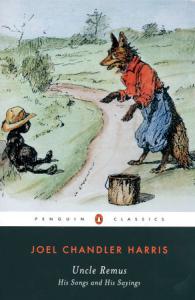
On Film
Song of the South (1946)
John Ames Mitchell (January 17, 1845 – June 29, 1918) was an American publisher, architect, artist and novelist. He was co-founder, editor, and publisher of the original Life magazine, in which he was a contributing artist, and the author of several novels.
Buffalo Bill (February 26, 1846 – January 10, 1917)
The Life and Adventures of Buffalo Bill (1879)
The Great West That Was: “Buffalo Bill’s” Life Story, was serialized in Hearst’s International Magazine from August 1916 to July 1917. and ghostwritten by James J. Montague. It contained several errors, in part because it was completed after Cody’s death in January 1917 It was accompanied by illustrations by N. C. Wyeth.
Henryk Sienkiewicz (May 5 1846 – November 15,1916),
With Fire and Sword (1884) Classics Illustrated
Quo Vadis (1895)
Randolph Caldecott (March 22, 1846 – February 12,1886)
The House that Jack Built (1878)
Bram Stoker (November 8, 1847 – April 20, 1912)
Dracula (1897) Great Illustrated Classics /used in League of Extraordinary Gentlemen
Dracula’s Guest and Other Weird Stories (1914), published posthumously by Florence Stoker
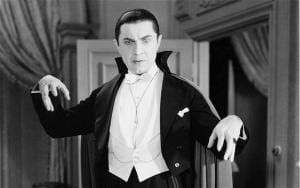
Under the Sunset (1881), comprising eight fairy tales for children.
Alex Van Helsing Jason Henderson
1. Vampire Rising (2010)
2. Voice of the Undead (2011)
3. The Triumph of Death (2012)
George (December 9, 1847 –March 1, 1912)
Weedon Grossmith (June 9, 1854 –June 14, 1919)
The Diary of a Nobody (1892)
James Otis Kaler (March 19, 1848 — December 11, 1912)
Toby Tyler or, Ten Weeks with a Circus (1880)
Frederic Edward Weatherly, KC (October 4, 1848 – September 7, 1929)
The Land of the Little People (1892)
The Book of Gnomes (1903)

Charles Ransom Miller (January 17, 1849 – July 18, 1922) was an editor-in-chief of The New York Times. He was born in Hanover, New Hampshire, to Elijah and Chastina Hoyt Miller. Miller attended Dartmouth College and graduated in 1872. After working at the Springfield Republican, the New York Times hired him on July 7, 1875. Miller became the editor-in-chief of The New York Times when he was 34, and would remain in that position for the rest of his life (about forty years).
Frances Hodgson Burnett (November 24, 1849 – October 29,1924)
Little Lord Fauntleroy (1886)
A Little Princess (1905) Great Illustrated Classics
The Secret Garden (1911) Great Illustrated Classics
The Lost Prince (1915)
1850’s
Pierre Loti (January 14, 1850 – 10 June 1923)
Saga of the North Classics Illustrated
Works by Pierre Loti at Project Gutenberg

Guy de Maupassant (August 5, 1850 – July 6, 1893)
The Flayed Hand (1875) Classics Illustrated
“Boule de Suif” (“The Dumpling”, 1880)
The Necklace (1884)
Kate Chopin (February 8, 1850 – August 22, 1904)
At Fault (1890)
Bayou Folk (1894)
A Night in Acadie (1897)
The Awakening (1899)
George Bernard Shaw (July 26, 1856 –November 2, 1950)
Man and Superman (1902)
Pygmalion (1913)
Saint Joan (1923)
Robert Louis Stevenson (November 13, 1850 – 3 December 3, 1894)
Treasure Island (1883) Great Illustrated Classics Classics Illustrated
Fables (1896), including “The Persons of the Tale” with Captain Smollet and Long John Silver in a philosophical discussion.
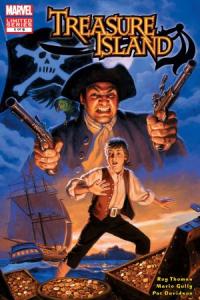
Adventures of David Balfour
Kidnapped (1886) Great Illustrated Classics Classics Illustrated
Catriona (1893) Classics Illustrated
- The Strange Case of Dr Jekyll and Mr Hyde (1886) Great Illustrated Classics /used in League of Extraordinary Gentlemen / Classics Illustrated
- The Black Arrow (1888) used in League of Extraordinary Gentlemen Classics Illustrated
- The Master of Ballantrae (1889) Classics Illustrated
- The Bottle Imp (1891) Classics Illustrated
- The Beach of Falesá, (1893) Classics Illustrated
- Child’s Garden of Verses (1913)
Garrett Putnam Serviss (March 24, 1851 – May 25, 1929)
Edison’s Conquest of Mars (1898) Written on commission from The Boston Post as a sequel to “Fighters from Mars”, an un-authorized and heavily altered version of H. G. Wells’ The War of the Worlds.
“The Moon Metal”, (1900) short story
A Columbus of Space, (1909) Dedicated to people who read Jules Verne and written in his style; first published in All-Story Weekly magazine in 1909; republished by G. W. Dilligham in 1974, by Hyperion Press)
The Sky Pirate (1909) novel (published in serialized form; published in book form by Pulpville Press, 2018)
The Second Deluge (1911)
The Moon Maiden (1915)
Melvil Dewey (December 10, 1851 – December 26, 1931) was an influential American librarian and educator, inventor of the Dewey Decimal system of library classification, a founder of the Lake Placid Club, and a chief librarian at Columbia University. He was also a founding member of the American Library Association. Although Dewey’s contributions to the modern library are widely recognized, his legacy is marred by his sexual harassment of female colleagues, as well as his racism and antisemitism.
Alice Pleasance Liddell,
(May 4, 1852 – November 16, 1934)
She was an English woman who, in her childhood, was an acquaintance and photography subject of Lewis Carroll. One of the stories he told her during a boating trip became the classic 1865 children’s novel Alice’s Adventures in Wonderland. She shared her name with “Alice“, the story’s protagonist, but scholars disagree about the extent to which the character was based upon her.
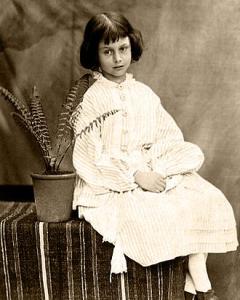
Henry-Van Dyke (November 10, 1852 – April 10, 1933)
The Story of the Other Wise Man” (1895)
Harry Blyth (1852-1898)
Creator of Sexton Blake The Missing Millionaire (1893)
The First Sexton Blake MEGAPACK®: 23 Classic Mystery Cases
Howard Pyle (March 5, 1853 – November 9, 1911)
The Merry Adventures of Robin Hood (1883) Great Illustrated Classics /used in League of Extraordinary Gentlemen/Classics Illustrated
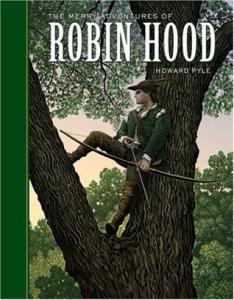
Round Table
1. The Story of King Arthur and His Knights (1903) Classics Illustrated
2. The Story of the Champions of the Round Table (1905) Great Illustrated Classics
3. The Story of Lancelot and His Companions (1907)
4. The Story of the Grail and the Passing of Arthur (1910)
Men of Iron (1891) Classics Illustrated
Joseph Jacobs (August 29, 1854 – January 30, 1916) was an Australian-born folklorist, literary critic and historian who became a notable collector and publisher of English folklore.
Born in Sydney to a Jewish family, his work went on to popularise some of the world’s best known versions of English fairy tales including “Jack and the Beanstalk“, “Goldilocks and the Three Bears“, “The Three Little Pigs“, (Classics Illustrated Junior) “Jack the Giant Killer” and “The History of Tom Thumb“. He published his English fairy tale collections
English Fairy Tales (1890)
More English Fairy Tales (1893)
Oscar Wilde (16 October 16, 1854 –November 30, 1900)
The Picture of Dorian Gray (1890) Great Illustrated Classics /used in League of Extraordinary Gentlemen
Oscar Wilde Fairy Tales
The Happy Prince and Other Tales (1888, fairy tales)
A House of Pomegranates (1891, fairy tales)
Lord Arthur Savile’s Crime and Other Stories (1891) including The Canterville Ghost Classics Illustrated
The Importance of Being Earnest (1895) A Play
L Frank Baum (May 15, 1856 – May 6, 1919)
1. The Wonderful Wizard of Oz (1900) Great Illustrated Classics Classics Illustrated Junior
2. The Marvelous Land of Oz (1904) aka The Land of Oz
3. Ozma of Oz (1907)
4. Dorothy and the Wizard of Oz (1908)
5. The Road to Oz (1909)
6. The Emerald City of Oz (1910)
7. The Patchwork Girl of Oz (1913)
8. Tik-Tok of Oz (1914)
9. The Scarecrow of Oz (1915)
10. Rinkitink in Oz (1916)
11. The Lost Princess of Oz (1917)
12. The Tin Woodman of Oz (1918)
13. The Magic of Oz (1919)
14. Glinda of Oz (1920)
continued in the series: Oz
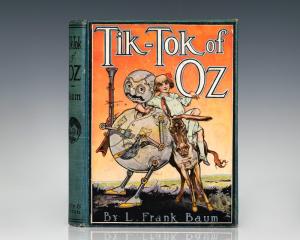
H. Rider Haggard (June 22, 1856 – 14 May 14, 1925) found in The Big Book of Adventure Stories
1.King Solomon’s Mines (1885) Great Illustrated Classics /used in League of Extraordinary Gentlemen/Classics Illustrated
2.Allan Quatermain (1887) Joint European Series: Classics Illustrated JES Facsimiles – CCS Books
3. Maiwa’s Revenge, or the War of the Little Hand (1888) Joint European Series: Classics Illustrated JES Facsimiles – CCS Books14. Allan and the Ice-gods (1927)
- She (1886)
- Cleopatra (1889) /Classics Illustrated
- Eric Brighteyes (1891) Joint European Series: Classics Illustrated JES Facsimiles – CCS Books
Kate Wiggin (September 28, 1856 – August 24, 1923)
The Story of Patsy (1883)
The Birds’ Christmas Carol (1887)
The Diary of a Goose Girl (1902)
Rebecca of Sunnybrook Farm (1903) Great Illustrated Classics /used in League of Extraordinary Gentlemen
- Rebecca of Sunnybrook Farm (1917 film) starring Mary Pickford
- Rebecca of Sunnybrook Farm (1932 film)
- Rebecca of Sunnybrook Farm (1938 film)
Rose o’ the River (1905)
The Old Peabody Pew (1907)
Mother Carey’s Chickens (1911)
The Romance of a Christmas Card (1916)
My Garden of Memory (autobiography, published posthumously in 1923)
Thomas Anstey Guthrie (August 8, 1856 – 10 March 10, 1934)
•Vice Versa; or, A Lesson to Fathers (1882)
•The Giant’s Robe (1884)
•The Tinted Venus, A Farcical Romance (1885)
•A Fallen Idol (1886)
•Tourmalin’s Time Cheques (1891) M. R. James
•The Brass Bottle (1900)
•Only Toys! (1903)
•Salted Almonds (1906)
•In Brief Authority (1915)
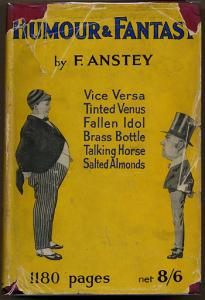
Collections
•Black Poodle, and Other Tales (1884)
•The Talking Horse (1891)
•Puppets at Large: Scenes and Subjects from Mr. Punch’s Show (1897)
Booker T. Washington (April 5, 1856 – November 14, 1915)
Up From Slavery (1902)
George Bernard Shaw (July 26, 1856 – November 2, 1950)
Man and Superman (1902),
Pygmalion (1913)
Saint Joan (1923)
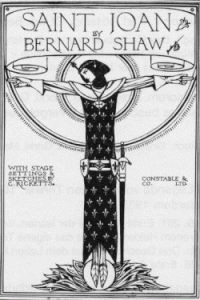
Wayne Whipple (1856-1942)
- The heart of Abraham Lincoln (1909)
- The story of young Abraham Lincoln (1915)
- The story of young George Washington (1918)
Frederick Burr Opper (January 2, 1857 – August 28, 1937)
Happy Hooligan March 11, 1900 – August 14, 1932
Charles Monroe Sheldon (February 26, 1857 – February 24, 1946)
In His Steps (1896)
Emerson Hough (June 28, 1857 – April 30, 1923) was an American writer best known for writing western stories and historical novels. His early works included Singing Mouse Stories and Story of the Cowboy. He was well known for his 1902 historical novel The Mississippi Bubble. Many of his works have been adapted into films and serial films.
- The Sagebrusher, 1919
- The Covered Wagon(1922) Classics Illustrated
- The Mississippi Bubble (1902)
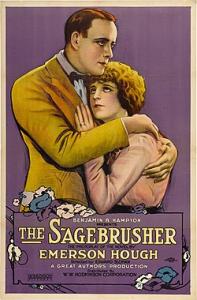
Joseph Conrad (Polish/English) (December 3, 1857 – 3 August 3, 1924)
Heart of Darkness (1899)
Lord Jim (1900) Classics Illustrated
The Secret Agent (1907) Classics Illustrated
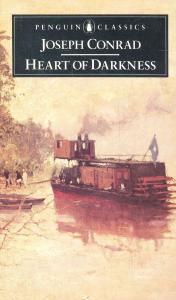
J. Meade Falkner (May 8,1858 – 22 July 22, 1932)
Moonfleet (1898)
Edith Nesbit (August 15, 1858 – 4 May 4, 1924)
Psammead
1. Five Children and It (1902)
2. The Phoenix and the Carpet (1904)
3. The Story of the Amulet (1906)
Kenneth Grahame (1859 – 1932)
Dream Days (1898) Including The Reluctant Dragon
Wind in the Willows (1908) Great Illustrated Classics /Classics Illustrated
Sholem Aleichem (March 2 1859 – May 13, 1916)
- Tevye’s Daughters: Collected Stories of Sholom Aleichem by Sholem Aleichem, transl Frances Butwin, illus Ben Shahn, NY: Crown, 1949. The stories which form the basis for Fiddler on the Roof.
- Stempenyu: A Jewish Novel, originally published in his Folksbibliotek, adapted 1905 for the play Jewish Daughters.
- Yosele Solovey (1889, published in his Folksbibliotek, first English translation: The Nightingale (1985)
Jerome K. Jerome (May 2, 1859 –June 14, 1927)
Three Men in a Boat (To Say Nothing of the Dog) (1889)
Three Men on the Bummel (aka Three Men on Wheels) (1900)
Sir Arthur Conan Doyle (May 22, 1859 – 7 July 7,1930) found in Great Tales of Action and Adventure
Sherlock Holmes used in League of Extraordinary Gentlemen
1. A Study in Scarlet (1887) Classics Illustrated
2. The Sign of Four (1890) Classics Illustrated
3. The Adventures of Sherlock Holmes (1892) Great Illustrated Classics / Classics Illustrated
4. The Memoirs of Sherlock Holmes (1893)
5. The Hound of the Baskervilles (1902) Great Illustrated Classics / Classics Illustrated
6. The Return of Sherlock Holmes (1905)
7. The Valley of Fear (1914)
8. His Last Bow (1917)
The Blue Carbuncle (2016) continued in the series by Anthony Horowitz
The Case-Book of Sherlock Holmes (1927)

Anthony Horowitz
continued from the original series by Sir Arthur Conan Doyle
1. The House of Silk (2011)
1.5. The Three Monarchs (2014)
2. Moriarty (2014)
Professor Challenger used in League of Extraordinary Gentlemen
The Lost World (1912)
The Poison Belt (1913)
The Land of Mist (1926)
“When the World Screamed” (short story, 1928)
“The Disintegration Machine” (short story, 1929)
Other Doyle
The White Company (1891) Classics Illustrated
Father Francis J. Finn, (October 4, 1859 – November 2, 1928) was an American Jesuit priest who wrote a series of 27 popular novels for young people. The books contain fun stories, likeable characters and themes that remain current in today’s world. Each story conveys an important moral precept.
Tom Playfair; or, Making a Start (1890)
Francis Thompson (December 16, 1859 –November 13, 1907)
The Hound of Heaven (1890)
I fled Him, down the nights and down the days;
I fled Him, down the arches of the years;
I fled Him, down the labyrinthine ways
Of my own mind; and in the mist of tears
I hid from Him, and under running laughter.
Up vistaed hopes I sped;
And shot, precipitated,
Adown Titanic glooms of chasmèd fears,
From those strong Feet that followed, followed after.
But with unhurrying chase,
And unperturbèd pace,
Deliberate speed, majestic instancy,
They beat—and a Voice beat
More instant than the Feet—
‘All things betray thee, who betrayest Me.’
1860’s
James Matthew Barrie (9 May 1860 – 19 June 1937
The Little White Bird; or, Adventures in Kensington Gardens (1902) Peter Pan appears in a section of the book, written for adults.
Peter Pan (1904)- The Original Play
Peter Pan in Kensington Gardens (1906) The Peter Pan section in the Little White Bird
When Wendy Grew Up – An Afterthought (1908) An additional scene from the play, put in the final book.
Peter and Wendy (novel) (1911) The Novel based on the Play Great Illustrated Classics
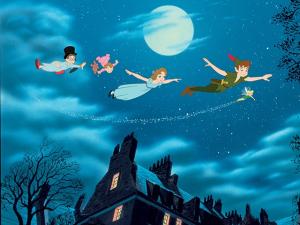
List of works based on Peter Pan
Anton Chekhov (1860 – 1905) was a Russian playwright and short-story writer, widely considered to be one of the greatest writers of all time. His career as a playwright produced four classics, and his best short stories are held in high esteem by writers and critics.
-
- The Seagull (Чайка, 1896)—a comedy in four acts
- Uncle Vanya (Дядя Ваня, 1897)—scenes from country life in four acts; based on The Wood Demon
- Three Sisters (Три сестры, 1901)—a drama in four acts
- The Cherry Orchard (Вишнёвый сад, 1904)—a comedy in four acts
The Project Gutenberg eBook of Compilation of the Stories of Checkhov
10 must read short stories by Anton Chekhov – The Asian Mirror
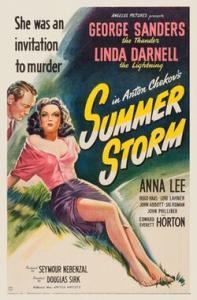
This movie (1944) is based on Anton Chekhov‘s only novel The Shooting Party (1884)
Charlotte Perkins Gilman (July 3, 1860 – August 17, 1935)
The Yellow Wallpaper (1892) It is regarded as an important early work of American feminist literature for its illustration of the attitudes towards the mental and physical health of women in the 19th century. It is also lauded as an excellent work of horror fiction.
Owen Wister (July 14, 1860 – July 21, 1938)
- “The New Swiss Family Robinson: A Tale for Children of All Ages”, a parody of The Swiss Family Robinson (1882); new edition, 1922
- Red Men and White (1895) (aka Salvation Gap and Other Western Classics)
- When West Was West (1928)
- Lin McLean (1897) (1918 filmed as A Woman’s Fool by John Ford)
- The Jimmyjohn Boss and Other Stories (1900)
- Ulysses S. Grant (1901)
- The Virginian: A Horseman of the Plains (1902) Classics Illustrated
- Members of the Family (1911) (Illus. H. T. Dunn)
- Safe in the Arms of Croesus (1927)
- Roosevelt: The Story of a Friendship, 1880–1919 (1930)
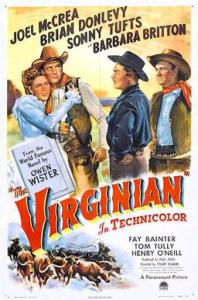
Ernest Thompson Seton (August 14, 1860 – October 23, 1946) was a Canadian and American author, wildlife artist, founder of the Woodcraft Indians in 1902 (renamed Woodcraft League of America), and one of the founding pioneers of the Boy Scouts of America (BSA) in 1910.
- Wild Animals I Have Known(1898) featuring “Lobo the King of Currumpaw” Classics Illustrated
- Lives of the Hunted (1901) Classics Illustrated
- Boy Scouts of America: Official Handbook, with General Sir Baden-Powell (1910)
- Bannertail: The Story of a Gray Squirrel (1922)
Herminie Templeton Kavanagh (1861 – 30 October 1933)
•Darby O’Gill and the Good People (1903)
•The Ashes of Old Wishes & Other Darby O’Gill Tales (1926)
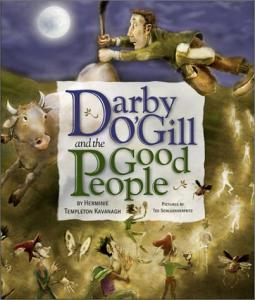
Reprinted Collections
Darby O’Gill and the Crocks of Gold: And Other Irish Tales (2003)
The Adventures of Darby O’Gill and Other Tales of Supernatural Ireland (2009)
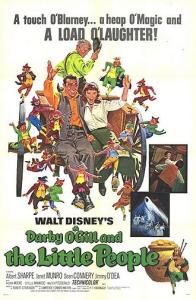
Frederick Russell Burnham DSO (May 11, 1861 – September 1, 1947)
Scouting on Two Continents (1926)

Frederick Jackson Turner (November 14, 1861 – March 14, 1932) was an American historian during the early 20th century, based at the University of Wisconsin-Madison until 1910, and then Harvard University. He was known primarily for his frontier thesis. He trained many PhDs who went on to become well-known historians. He promoted interdisciplinary and quantitative methods, often with an emphasis on the Midwestern United States.
Rise of the New West, 1819–1829 (1906)
The Frontier in American History. (1920) included ideas that formed the frontier thesis.
O. Henry (William Sydney Porter (1862 –1910) was an American writer known primarily for his short stories, though he also wrote poetry and non-fiction. Porter’s legacy includes the O. Henry Award, an annual prize awarded to outstanding short stories.
Among his most famous stories are Found in The Best Short Stories – O. Henry (1945)
- “The Duplicity of Hargraves” (1902)tells the story of the Talbots, a father and daughter from the Old South, newly poor after the Civil War, who move to Washington, DC. An actor, Hargraves, offers Mr. Talbot money, which he is too proud to accept. But when Talbot is approached by an old man, a former slave who gives him money to settle an old family debt, he accepts it. It is later revealed that Hargraves secretly portrayed the slave.
- “A Retrieved Reformation” (1903) tells the tale of safecracker Jimmy Valentine, a man recently freed from prison. He goes to a town bank to case it before he robs it. As he walks to the door, he catches the eye of the banker’s beautiful daughter. They immediately fall in love and Valentine decides to give up his criminal career. He moves into the town, taking up the identity of Ralph Spencer, a shoemaker. Just as he is about to leave to deliver his specialized tools to an old associate, a lawman who recognizes him arrives at the bank. Jimmy and his fiancée and her family are at the bank, inspecting a new safe when a child accidentally gets locked inside the airtight vault. Knowing it will seal his fate, Valentine opens the safe to rescue the child. However, much to Valentine’s surprise, the lawman denies recognizing him and lets him go.
- “The Cop and the Anthem” (1904) about a New York City hobo named Soapy who sets out to get arrested so that he can be a guest of the city jail instead of sleeping out in the cold winter. Despite his best efforts at committing petty theft, vandalism, disorderly conduct, and “flirting” with a young prostitute, Soapy fails to draw the attention of the police. Dejected, he stops in front of a church, where an organ anthem inspires him to clean up his life; however, he is charged with loitering, and sentenced to three months in prison. – O. Henry’s Full House
- “The Last Leaf” (1905) – O. Henry’s Full House
- “The Gift of the Magi” (1905) is about a young couple, Jim and Della, who are short of money but desperately want to buy each other Christmas gifts. Unbeknownst to Jim, Della sells her most valuable possession, her beautiful hair, in order to buy a platinum fob chain for Jim’s watch; while unbeknownst to Della, Jim sells his own most valuable possession, his watch, to buy jeweled combs for Della’s hair. The essential premise of this story has been copied, re-worked, parodied, and otherwise re-told countless times in the century since it was written. – O. Henry’s Full House / Classics Illustrated
- “The Skylight Room” (1906)
- “After Twenty Years” (1906)
- The Furnished Room (1906)
- “The Caballero’s Way” (1907)in which Porter’s most famous character, the Cisco Kid, is introduced. It was first published in 1907 in the July issue of Everybody’s Magazine and collected in the book Heart of the West that same year. In later film and TV depictions, the Kid would be portrayed as a dashing adventurer, perhaps skirting the edges of the law, but primarily on the side of the angels. In the original short story, the only story by Porter to feature the character, the Kid is a murderous, ruthless border desperado, whose trail is dogged by a heroic Texas Ranger.
- “The Ransom of Red Chief” (1907) in which two men kidnap a boy of ten years old to ransom him. The boy turns out to be so spoiled and obnoxious that the desperate men ultimately pay the boy’s father $250 to take him back. – O. Henry’s Full House
Other Stories include
- Cabbages and Kings (1904) His Only Novel
- “Makes the Whole World Kin” (1904)
- “Conscience in Art” (1907)
- “A Lickpenny Lover” (1908)
- “One Thousand Dollars” (1908)
- “The Third Ingredient” (1908)
- The Clarion Call (1908) O. Henry’s Full House
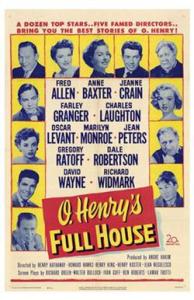
The film (1952) is narrated by author John Steinbeck, who made his only on-camera appearance to introduce each story.
M. R. James, (Montague Rhodes) (August 1, 1862 – June 12, 1936) was an English medievalist scholar and author who served as provost of King’s College, Cambridge (1905–1918), and of Eton College (1918–1936) as well as Vice-Chancellor of the University of Cambridge (1913–1915). James’s scholarly work is still highly regarded, but he is best remembered for his ghost stories, which are considered by many critics and authors as the finest in the English language and widely influential on modern horror.
- Ghost Stories of an Antiquary. 1904. 8 stories.
- More Ghost Stories. 1911. 7 stories.
- A Thin Ghost and Others. 1919. 5 stories.
- The Five Jars (1922)
- A Warning to the Curious and Other Ghost Stories. 1925. 6 stories.
- Wailing Well. 1928 (tale), Mill House Press, Stanford Dingley.
- The Collected Ghost Stories of M. R. James. 1931. Contains the 26 stories from the original four books, plus “After Dark in the Playing Fields” (1924), “There Was a Man Dwelt by a Churchyard” (1924), “Wailing Well” (1928), and “Rats” (1929). It does not include three stories completed between 1931 and James’s death in 1936.\
Emilio Salgari (Italy) (1862 – 1911) was an Italian writer of action adventure swashbucklers and a pioneer of science fiction.
- The Mystery of the Black Jungle (1895)
- The Pirates of Malaysia (1896)
- The Black Corsair (1898)
- The Tigers of Mompracem (1900)
- The Queen of the Caribbean (1901)
- The Two Tigers (1904)
- Captain Tempesta (1905)
- Yolanda, the Black Corsair’s Daughter (1905)
- The King of the Sea (1906)
- Quest for a Throne (1907)
- Sandokan to the Rescue (1907)
- The Last Pirates (1908)
- The Son of the Red Corsair (1908)
Edith Wharton (January 24, 1862 – August 11, 1937) was an American writer and designer. Wharton drew upon her insider’s knowledge of the upper-class New York “aristocracy” to portray, realistically, the lives and morals of the Gilded Age. In 1921, she became the first woman to win the Pulitzer Prize for Fiction for her novel The Age of Innocence.
- The House of Mirth (1905)
- The Age of Innocence (1920 )(Pulitzer Prize winner)
- Ethan Frome (1911)
- The Writing of Fiction (1925 (essays on writing)
Ghosts (1937) includes
- All Souls’ (1937)
- The Eyes • (1910)
- Afterward • (1910
- The Lady’s Maid’s Bell • (1902)
- Kerfol • (1916)
- The Triumph of Night
- Miss Mary Pask • (1925)
- Bewitched • (1925)
- Mr. Jones • (1928)
- Pomegranate Seed • (1931)
- A Bottle of Perrier • (1926)
John Kendrick Bangs (May 27, 1862 – January 21, 1922)
Mr. Munchausen: Being a True Account of Some of the Recent Adventures Beyond the Styx of the Late Hieronymus Carl Friedrich, Sometimes Baron Munchausen of Bodenwerder, as Originally Reported for the Sunday Edition of the Gehenna Gazette by Its Special Interviewer the Late Mr. Ananias Formerly of Jerusalem and Now First Transcribed from the Columns of that Journal (1901) – featuring Baron Munchausen
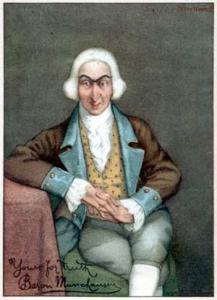
Edward L. Stratemeyer (October 4, 1862 – May 10, 1930)
writer of children’s fiction, and founder of the Stratemeyer Syndicate. He was one of the most prolific writers in the world, producing in excess of 1,300 books himself, selling in excess of 500 million copies. He also created many well-known fictional book series for juveniles, including The Rover Boys, The Bobbsey Twins, Tom Swift, The Hardy Boys, and Nancy Drew series, many of which sold millions of copies and are still in publication today. On Stratemeyer’s legacy, Fortune wrote: “As oil had its Rockefeller, literature had its Stratemeyer.”
1. The Rover Boys at School, or, The Cadets of Putnam Hall (1899) 30. The Rover Boys Winning a Fortune (1926)
1. The Bobbsey Twins, or Merry Days Indoors and Out (1904) 23. The Bobbsey Twins at Spruce Lake (1930)
1. Tom Swift and His Motor Cycle Or, Fun and Adventure on the Road (1910) 30. Tom Swift Circling the Globe (1927) 33. Tom Swift and His Big Dirigible (1930)
Tom Swift was used in League of Extraordinary Gentlemen
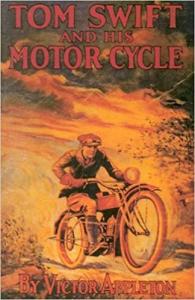
John Fox Jr. (American) (December 16, 1862 – July 8, 1919)
The Little Shepherd of Kingdom Come (1903)
The Trail of the Lonesome Pine (1908)
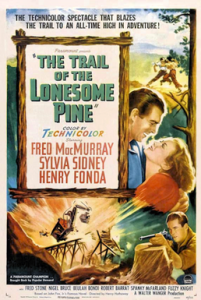
Annie Fellows Johnston (1863–1931)
The Little Colonel (1895)
The Gate of the Giant Scissors (1898)

Eleanor Stackhouse Atkinson (1863 – November 4, 1942)
Boyhood of Lincoln (1908) (also published as Lincoln’s Love Story)
Greyfriar’s Bobby (1912)
Johnny Appleseed: The Romance of the Sower (1915)

Richard F. Outcault (January 14, 1863 – September 25, 1928)
The Yellow Kid January 13, 1895
Buster Brown May 4, 1902
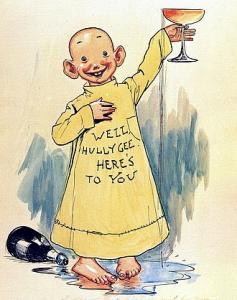
Anthony Hope (February 9, 1863 –July 8, 1933)
The Prisoner of Zenda (1894) Classics Illustrated
Rupert of Hentzau (1898)
Henry Ford (July 30, 1863 – April 7, 1947)
My Life And Work (1922)
Gene Stratton-Porter (August 17, 1863 – December 6, 1924)
Freckles (1904)
A Girl of the Limberlost (1909)
Michael O’Halloran (1915)
W. W. Jacobs William Wymark Jacobs (8 September 1863 – 1 September 1943)
The Lady of the Barge (1902) including “The Monkey’s Paw” with film adaptations in 1915, 1923, 1933, 1948, 2008 and 2013.
Odd Craft 1903) including The Money Box, basis of Laurel and Hardy film Our Relations, (1935)
Sailors’ Knots 1909) including The Toll House
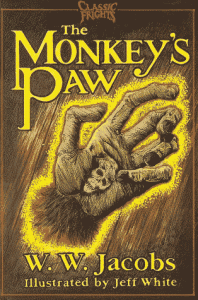
On January 7, 1914, in King’s Hall, Covent Garden, Jacobs was a member of the jury in the mock trial of John Jasper for the murder of Edwin Drood. At this all-star event G. K. Chesterton was Judge and George Bernard Shaw appeared as foreman of the jury. The Mystery of Edwin Drood is the final novel by English author Charles Dickens,[ originally published in 1870.
Richard Harding Davis (April 18, 1864 – April 11, 1916)
Soldiers of fortune (1897) Classics Illustrated
Nellie Bly (May 5, 1864 – January 27, 1922)
- . Ten Days in a Mad-House.(1887)
- . Six Months in Mexico (1888)
- . The Mystery of Central Park (1889)
- . Nellie Bly’s Book: Around the World in Seventy-two Days (1890)

Banjo Paterson (February 17, 1864 – February 5, 1941) was an Australian bush poet, journalist and author, widely considered one of the greatest writers of Australia’s colonial period.
- The Man from Snowy River and Other Verses (1895)
- Rio Grande’s Last Race and Other Verses (1902)
- Three Elephant Power and Other Stories (1917)
- Saltbush Bill, J.P., and Other Verses (1917)
James Allen (November28, 1864 – January 24, 1912) was a British philosophical writer known for his inspirational books and poetry and as a pioneer of the self-help movement.
As a Man Thinketh(1903) has been mass-produced since its publication in 1903. It has been a source of inspiration to motivational and self-help authors.
The aphorism, “As a man thinketh in his heart so is he,” not only embraces the whole of a man’s being, but is so comprehensive as to reach out to every condition and circumstance of his life. A man is literally what he thinks, his character being the complete sum of all his thoughts.
As the plant springs from, and could not be without, the seed, so every act of a man springs from the hidden seeds of thought, and could not have appeared without them. This applies equally to those acts called “spontaneous” and “unpremeditated” as to those which are deliberately executed.
Act is the blossom of thought, and joy and suffering are its fruits; thus does a man garner in the sweet and bitter fruitage of his own husbandry.
Maruice Leblanc (December 11, 1864 – November 6,1941)
Arsene Lupin, Gentleman-Burglar (1907) is a fictional gentleman thief and master of disguise created in 1905 by French writer Maurice Leblanc. The character was first introduced in a series of short stories serialized in the magazine Je sais tout. The first story, “The Arrest of Arsène Lupin”, was published on 15 July 1905.[5] Lupin is often described as the French counterpart to Sherlock Holmes, often encountering “Herlock Sholmès” in his own adventures.
The character has also appeared in a number of books by other writers as well as numerous film, stage play, comic book and television adaptations. The main character of Netflix series Lupin is inspired by the thief.
He was used in League of Extraordinary Gentlemen
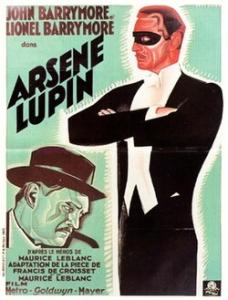
1865
W.B. Yeats – (June 13, 1865 –January 28, 1939) was an Irish poet, dramatist and writer, and one of the foremost figures of 20th-century literature. He was a driving force behind the Irish Literary Revival, and along with John Millington Synge and Lady Gregory founded the Abbey Theatre, serving as its chief during its early years. He was awarded the 1923 Nobel Prize in Literature, and later served two terms as a Senator of the Irish Free State.
The Land of Heart’s Desire (1894)
Cathleen ni Houlihan (1902)
Deirdre (1907)
The Wild Swans at Coole (1919)
The Tower (1928)
The collected public domain poetry of Yeats as an eBook at Standard Ebooks
Wisdom and Dreams
I pray that I ever be weaving
An intellectual tune,
But weaving it out of threads
From the distaff of the moon.
Wisdom and dreams are one,
For dreams are the flowers ablow,
And Wisdom the fruit of the garden:
God planted him long ago.
Frank J. Wilstach (October 20, 1865 – November 28, 1933)
Wild Bill Hickok, the prince of pistoleers (1926)
Dictionary of Similes, (1916/1924)
Rudyard Kipling (December 30,1865 – 18 January 18, 1936)
The Jungle Book (1894) Great Illustrated Classics Classics Illustrated
The Second Jungle Book (1895)
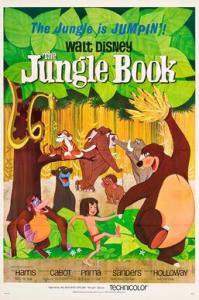
- Plain Tales from the Hills (1888)
- The Phantom ‘Rickshaw and other Eerie Tales (1888) – including “The Man Who Would Be King“
- Wee Willie Winkie and Other Child Stories (1888) – including “Baa Baa, Black Sheep“
- The Light that Failed (1891)
- The Naulahka: A Story of West and East (1892) (with Wolcott Balestier)
- Many Inventions (1893)
- Captains Courageous (1896) Great Illustrated Classics Classics Illustrated

- Kim (1901) Classics Illustrated
- The Day’s Work (1898)
- Stalky & Co. (1899)
- From Sea to Sea and Other Sketches, Letters of Travel (1899), non-fiction
- Traffics and Discoveries (1904), 12 stories
- Puck of Pook’s Hill (1906)
- Rewards and Fairies (1910)
- As Easy as A.B.C. (1912), science-fiction short story
Laurence Housman (1865 – 1959) was an English playwright, writer and illustrator whose career stretched from the 1890s to the 1950s. He studied art in London and worked largely as an illustrator during the first years of his career, before shifting focus to writing. He was a younger brother of the poet A. E. Housman and his sister and fellow activist in the women’s suffrage movement was writer/illustrator Clemence Housman (November 23, 1861 – December 6, 1955) .
- The Were-Wolf (1896) by Clemence Housman
- The Unknown Sea (1898)
- The Field of Clover (1898)
- Bethlehem: A Nativity Play (1902)
- The Blue Moon (1904) Clemence Housman
- Stories from the Arabian Nights, Retold by Laurence Housman (1907) — illustrated by Edmund Dulac
- Princess Badoura: A Tale from the Arabian Nights (1913) — illustrated by Edmund Dulac
- Moonshine & Clover (1922) Clemence Housman as illustrator
- The Little Plays of St. Francis (1922)
Baroness Emmuska Orczy (September 23,1865 –November 12,1947)
1. The Scarlet Pimpernel (1905) . Sir Percy Hits Back (1927) used in League of Extraordinary Gentlemen / Classics Illustrated
The Old Man in the Corner (1909)
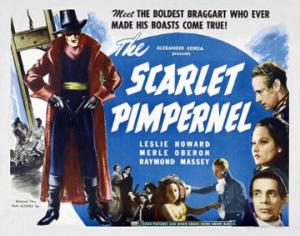
Beatrix Potter (1866 –1943) was an English writer, illustrator, natural scientist, and conservationist. She is best known for her children’s books featuring animals, such as The Tale of Peter Rabbit, which was her first commercially published work in 1902. Her books, including The Tale of Jemima Puddle Duck and The Tale of Tom Kitten, have sold more than 250 million copies An entrepreneur, Potter was a pioneer of character merchandising. In 1903, Peter Rabbit was the first fictional character to be made into a patented stuffed toy, making him the oldest licensed character. In her thirties, Potter self-published the highly successful children’s book The Tale of Peter Rabbit. Following this, Potter began writing and illustrating children’s books full-time.
Potter wrote over sixty books, with the best known being her twenty-three children’s tales. In 1905,
The 23 Tales
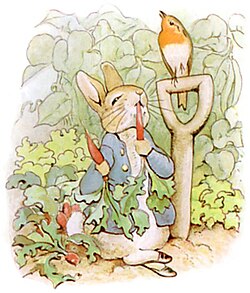
- The Tale of Peter Rabbit (privately printed, 250 copies, 1901; printed in a trade edition by Frederick Warne & Co. in 1902)
- The Tale of Squirrel Nutkin (1903)
- The Tailor of Gloucester (privately printed by the author in 1902, and published in a trade edition by Frederick Warne & Co. in 1903)
- The Tale of Benjamin Bunny (1904)
- The Tale of Two Bad Mice (1904)
- The Tale of Mrs. Tiggy-Winkle (1905)
- The Tale of the Pie and the Patty-Pan (1905)
- The Tale of Mr. Jeremy Fisher (1906)
- The Story of a Fierce Bad Rabbit (1906)
- The Story of Miss Moppet (1906)
- The Tale of Tom Kitten (1907)
- The Tale of Jemima Puddle-Duck (1908)
- The Tale of Samuel Whiskers or, The Roly-Poly Pudding (1908)
- The Tale of the Flopsy Bunnies (1909)
- The Tale of Ginger and Pickles (1909)
- The Tale of Mrs. Tittlemouse (1910)
- The Tale of Timmy Tiptoes (1911)
- The Tale of Mr. Tod (1912)
- The Tale of Pigling Bland (1913)
- Appley Dapply’s Nursery Rhymes (1917)
- The Tale of Johnny Town-Mouse (1918)
- Cecily Parsley’s Nursery Rhymes (1922)
- The Tale of Little Pig Robinson (1930)
Winsor McCay (c. 1866–71 – July 26, 1934)
Dreams of a Rarebit Fiend (1904 – 1925)
Little Nemo 1905–14; 1924–26)
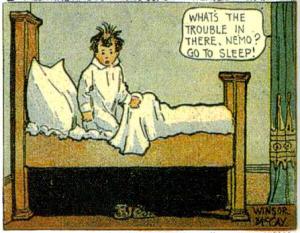
Carl E. Schultze (May 25, 1866 – January 18, 1939)
Foxy Grandpa (January 7, 1900 – 1918)
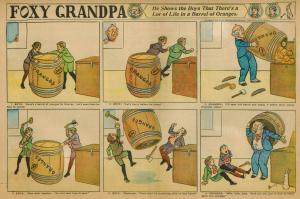
E. W. Hornung (June 7, 1866 –March 22, 1921) brother-in-law of Sir Arthur Conan Doyle the creator of Sherlock Holmes.
J. Raffles appears in the following four books (three short story collections and one novel) by E. W. Hornung. Most of the short stories were first published in magazines.
- The Amateur Cracksman (1899, 8 short stories)
- The Black Mask (1901, 8 short stories)
- A Thief in the Night (1905, 10 short stories)
- Mr. Justice Raffles (1909 novel)
George Barr McCutcheon (July 26, 1866 – October 23, 1928)
Graustark: The Story of a Love Behind a Throne (1901)
Brewster’s Millions (1902)
HG Wells (September 21,1866 –August 13,1946) found in The Big Book of Adventure Stories
The Time Machine (1895) Great Illustrated Classics /used in League of Extraordinary Gentlemen/ Classics Illustrated
The Time Ships, (1995) by Stephen Baxter
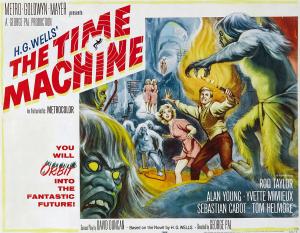
The Island of Doctor Moreau (1896) used in League of Extraordinary Gentlemen/ Classics Illustrated
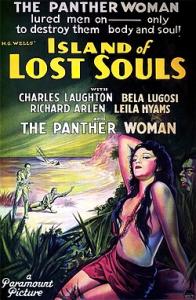
The Invisible Man (1897) Great Illustrated Classics /used in League of Extraordinary Gentlemen/Classics Illustrated
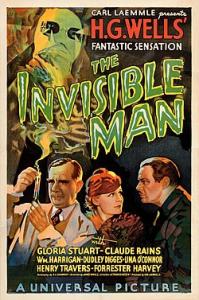
The War of the Worlds (1898) Great Illustrated Classics /used in League of Extraordinary Gentlemen/Classics Illustrated
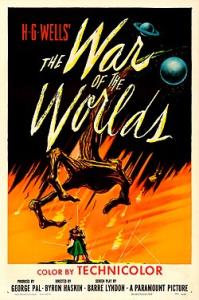
Sherlock Holmes’ War of the Worlds (1975) Wade Wellman
The Space Machine (1976) Christopher Priest.
When the Sleeper Wakes (1899)*
The First Men in the Moon (1901)* /Classics Illustrated
The Food of the Gods and How It Came to Earth (1904) /Classics Illustrated
The Complete Short Stories of H. G. Wells (1966) includes
- “The Chronic Argonauts” (a.k.a. “Chronic Argonaut”, a.k.a. “The Chronic Argonaughts”) (Science Schools Journal, nos. 17–19, April–June 1888), novelette – the earliest version of The Time Machine.
- “The Argonauts of the Air” (The Phil May’s Annual, December 1895)
- “The Cone” (Unicorn, 18 September 1895)
- “In the Abyss” (Pearson’s Magazine, 1 August 1896)
- “The Red Room” (a.k.a. “The Ghost of Fear”) (The Idler, March 1896)
- “The Sea Raiders” (a.k.a. “The Sea-Raiders”) (The Weekly Sun Literary Supplement, 6 December 1896)
- “The Crystal Egg” (The New Review, May 1897)
- “The Star” (The Graphic, December 1897)
- A Story of the Stone Age (1897) /Joint European Series: Classics Illustrated JES Facsimiles – CCS Books
- “Jimmy Goggles the God” (The Graphic, December 1898)
- “The Man Who Could Work Miracles” (a.k.a. “The Man Who Could Work Miracles: A Pantoum in Prose”, a.k.a. “Man Who Could Work Miracles”) (Illustrated London News, July 1898)
- “The Stolen Body” (The Strand Magazine, November 1898)

“The Stolen Body” was reprinted in Weird Tales in November 1925
-
- “The New Accelerator” (The Strand Magazine, December 1901)
- “The Land Ironclads” (The Strand Magazine, December 1903), novelette
- “The Magic Shop” (The Strand Magazine, June 1903)
- “The Truth About Pyecraft” (The Strand Magazine, April 1903)
- “The Country of the Blind” (The Strand Magazine, April 1904; revised, 1939), novelette
- “The Empire of the Ants” (a.k.a. “Empire of the Ants”) (The Strand Magazine, December 1905)
- “The Door in the Wall” (1906)
- “The Beautiful Suit” (a.k.a. “A Moonlight Fable”) (Collier’s Weekly, April 1909)
William Wallace Cook (1867–1933) also known by the pen-name John Milton Edwards, was an American journalist and writer of popular fiction. His works include westerns, adventure stories, dime novels, serials and screen and stage plays, He is best remembered for his science-fiction works.
-
-
- Cast Away at the Pole (1904)
- Adrift in the Unknown (1905)
- Marooned in 1492 (1905)
- The Fiction Factory (1912)
- Gold Grabbers (1914)
- Around The World In Eighty Hours (1920)
- A Round Trip to the Year 2000 (1925)
- Plotto (1928) is a a system for plot suggestion and content structure that fiction writers can use.
- Plotto: The Master Book of All Plots (1934, 1941) is a 7 part instruction guide of the previous book.
-
Charles Edward Montague (1 January 1867 – 28 May 1928) was an English journalist, known also as a writer of novels and essays.
Right off the map (1927), a science fiction novel
Action (1928), short stories The Main story is also found in Great Tales of Action and Adventure
A Writer’s Notes on His Trade (1930)
Laura Ingalls Wilder (February 7, 1867 – February 10, 1957)
She is best known as the author of the children’s book series Little House on the Prairie, published between 1932 and 1943, which were based on her childhood in a settler and pioneer family. An invitation to submit an article to the Missouri Ruralist in 1911 led to Wilder’s permanent position as a columnist and editor with that publication, which she held until the mid-1920s. She also took a paid position with the local Farm Loan Association, dispensing small loans to local farmers.
Wilder’s column in the Ruralist, “As a Farm Woman Thinks,” introduced her to a loyal audience of rural Ozarkians, who enjoyed her regular columns.
Little House in the Big Woods (1932) – named to the inaugural Lewis Carroll Shelf Award list in 1958. It will become public domain in 2028
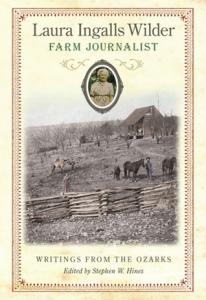
Luigi Pirandello (June 28, 1867 – December 10,1936)
Six Characters in Search of an Author (1921) inspired “Five Characters in Search of an Exit” (1961), an episode of The Twilight Zone (1959 TV series), references the play in its title and existentialist themes
Henrietta Elizabeth Marshall (usually credited as H. E. Marshall; August 9, 1867 –September 19, 1941) was a Scottish writer, particularly well known for her works of popular national history for children.
Our Island Story: A Child’s History of England (1905)
Stories of Beowulf Told to the Children (1908)
Stories of Robin Hood told to the Children (1912)
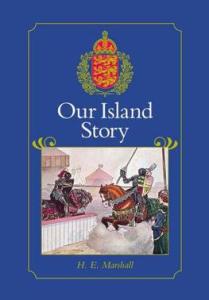
Edmond Rostand (April 1, 1868 – 2 December 2,1918)
Cyrano de Bergerac (1897)
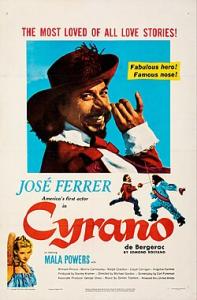
Charlie McKeahnie (April 29, 1868 – August 3, 1895) He was an Australian horseman born in Gudgenby, ACT to Alexander and Mary McKeahnie into a family of five sisters. He is believed by some historians to be the inspiration for the poem “The Man from Snowy River” by Banjo Paterson.
Gaston Leroux (May 6, 1868 – 15 April 15, 1927)
The Adventures of Joseph Rouletabille
The Mystery of the Yellow Room (1907)
The Perfume of the Lady in Black (1908)
The Secret of the Night (1913)
Phantom of the Opera (1911) Great Illustrated Classics
Eleanor H. Porter Eleanor Emily Hodgman Porter (December 19, 1868 – May 21, 1920)
Pollyanna (1913) Great Illustrated Classics
Pollyanna Grows Up (1915)
Just David (1916)
Pollyanna (1920 film) starring Mary Pickford
Pollyanna (1960 film) starring Hayley Mills
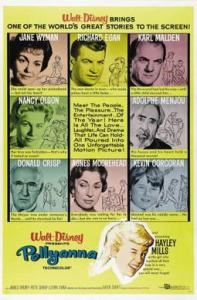
Felix Salten (1869 – 1945)
Bambi
1. Bambi (1923) (1928)
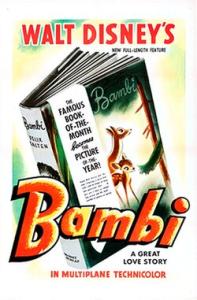
Else Lasker-Schüler (February 11, 1869 –January 22, 1945) was a German poet and playwright famous for her bohemian lifestyle in Berlin and her poetry. She was one of the few women affiliated with the Expressionist movement. Lasker-Schüler, who was Jewish, fled Nazi Germany and lived out the rest of her life in Jerusalem.
FLIGHT FROM THE WORLD
I want to go back into boundlessness,
Return to me.
Already the timeless crocus of my soul
Blossoms autumnally;
Perhaps-it’s too late to return!
Oh, I perish here among you!
For you smother me with your selves.
I’d like to spin threads around me
End the disorder!
Vex you,
Perplex you,
So I can flee
Mewards!
Mahatma Gandhi (October 2, 1869 – January 30, 1948)
Gandhi: An Autobiography (1927)
1870’s
Joaquim Osório Duque-Estrada (April 19, 1870 – February 5, 1927) was a Brazilian poet, essayist, journalist, literary critic and professor. He is famous for writing in 1909 a poem that would become the lyrics of the Brazilian National Anthem in 1922.
Hilarie Belloc (July 27,1870 –July 16,1953)
The Bad Child’s Book Of Beasts (1896)
More Beasts for Worse Children (1897)
Cautionary Tales for Children (1907)
How The Reformation Happened (1928)
Ethel Turner (January 24, 1870 – 8 April 8,1958)
Seven Little Australians(1894)
The Family at Misrule (1895)
The Story of a Baby
Three Little Maids (1900)
The Wonder-Child: An Australian Story (1901)
In the Mist of the Mountains (1906)
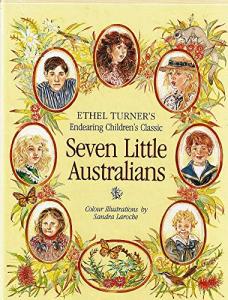
Frank Norris (March 5, 1870 – October 25, 1902) was an American journalist and novelist during the Progressive Era, whose fiction was predominantly in the naturalist genre. .
McTeague: A Story of San Francisco (1899)
The Octopus: A Story of California (1901) Classics Illustrated
The Pit (1903).
Hector Hugh Munro (December 18, 1870 –November 14, 1916), better known by the pen name Saki
Reginald (1904)
Reginald in Russia (1910) featuring Gabriel-Ernest • (1909)
The Chronicles of Clovis (1911) Featuring The Unrest-Cure (1910) Esmé (1910) Tobermory(1910) Sredni Vashtar (1910) also found in The Big Book of Adventure Stories.
The Unbearable Bassington (1912) Novel
When William Came (1914) Novel
The East Wing (1914) First published in Lucas’ Annual, September 1914. This is a “rediscovered” short story that was previously cited as a play. Perhaps because of its subtitle: “A Tragedy in the Manner of the Discursive Dramatists”. It was included only in later printings (1946 onwards) of The Complete Short Stories of Saki (John Lane The Bodley Head Limited)
Beasts and Super-Beasts (1914) featuring The Schartz-Metterklume Method • (1914)
The Toys of Peace (1919) featuring The Interlopers (1912) also found in Great Tales of Action and Adventure/ The Bull (1919)
The Square Egg and Other Sketches (1924)
The Westminster Alice (1926)
The Complete Short Stories of Saki (1930)
Stephen Crane (American) (November 1, 1871 – June 5, 1900)
-
-
- Maggie: A Girl of the Streets (1893)
- The Red Badge of Courage (1895) Great Illustrated Classics /Classics Illustrated
- The Black Riders and Other Lines (1895)
- George’s Mother (1896)
- The Open Boat and Other Tales of Adventure (1898) Joint European Series: Classics Illustrated JES Facsimiles – CCS Books
- War Is Kind (1899)
- Active Service (1899)
- The Monster and Other Stories (1899) featuring The Blue Hotel Joint European Series: Classics Illustrated JES Facsimiles – CCS Books
- Wounds in the Rain (1900)
- Great Battles of the World (1901)
- The O’Ruddy (1903)
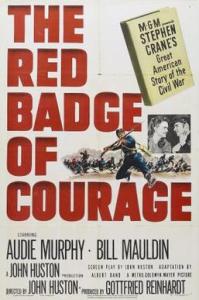
-
Short Fiction
Despite Crane’s prolific output, only four stories—”The Open Boat”, “The Blue Hotel”, “The Bride Comes to Yellow Sky”, and The Monster—have received extensive attention from scholars. H. G. Wells considered “The Open Boat” to be “beyond all question, the crown of all his work”, and it is one of the most frequently discussed of Crane’s works.
-
-
- A Ghoul’s Accountant (1892)
- The Black Dog (1892)
- Ghosts on the Jersey Coast (1894)
- A Tale of Mere Chance (1896)
- A Man and Some Others (1897)
- The Open Boat (1897)
- The Bride Comes to Yellow Sky (1898)
- The Monster (1898)
- The Blue Hotel (1898)
- The Upturned Face (1900)
- An Illusion in Red and White (1900)
- Manacled (1900)
-
W. H. Davies (July 3, 1871 – September 26, 1940)
The Autobiography of a Super-Tramp (1908)
Jack Black 1871–1932) was a Canadian and American hobo and burglar. Black is best known for his autobiography
You Can’t Win (1926)
Leonid Andreyev (August 21, 1871 – September 12, 1919)
The Seven That Were Hanged (1908) Classics Illustrated Joint European Series (JES) – CCS Books
He Who Gets Slapped, (1915)
Theodore Dreiser ( August 27, 1871 – December 28, 1945)
Sister Carrie (1900)
Hey Rub-a-Dub-Dub: A Book of the Mystery and Wonder and Terror of Life (New York: Boni & Liveright, 1920)
An American Tragedy (1925
Chains: Lesser Novels and Stories (1927)
Lyonel Feininger (July 17, 1871 – January 13, 1956)
The Kin-der-Kids (1906–07)
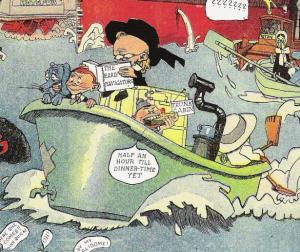
Robert Hugh Benson (November 18, 1871 –October 19, 1914)
A Mirror of Shalott, (1907)
Lord of the World, (1907)
The Dawn of All, B. (1911)
Come Rack! Come Rope! (1912)
Confessions of a Convert (1913)
Oddsfish! (1914)
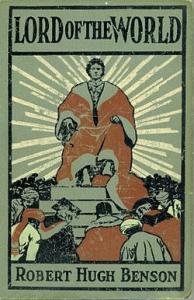
Edward Wyke Smith (April 12, 1871 – May 16, 1935)
The Marvellous Land of Snergs (proto-Hobbits) (1927)
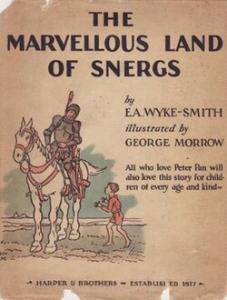
Winston Churchill (November 10, 1871 – March 12, 1947) was an American best-selling novelist of the early twentieth century. He is nowadays overshadowed, even as a writer, by the more famous British statesman of the same name, to whom he was not related.
Novels
- Mr. Keegan’s Elopement in magazine format (1896)
- The Celebrity (1898)
- Richard Carvel (1899)
- The Crisis (1901) Classics Illustrated
- Mr. Keegan’s Elopement in hardback (1903)
- The Crossing (1904)
- Coniston (1906)
- Mr. Crewe’s Career (1908)
- A Modern Chronicle (1910)
- The Inside of the Cup (1913)
- A Far Country (1915)
- The Dwelling-Place of Light (1917)
Other writings
- Richard Carvel; Play produced on Broadway, (1900–1901)
- The Crisis; Play produced on Broadway, (1902)
- The Crossing; Play produced on Broadway, (1906)
- The Title Mart; Play produced on Broadway, (1906)
- A Traveller In War-Time (1918)
- Dr. Jonathan; A play in three acts (1919)
- The Uncharted Way (1940)
Zane Grey (January 31, 1872 – October 23, 1939)
Riders of the Purple Sage (1912)
Tales of Swordfish and Tuna (1927)
Forlorn River (1927)
Don: Story of a Lion Dog (1928)
Nevada (1928)
Wild Horse Mesa (1928)
Fighting Caravans (1929)
The Shepherd of Guadaloupe (1930)
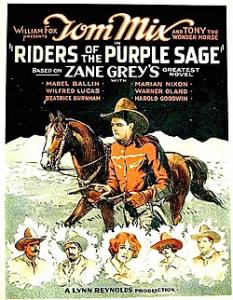
Leon Ray Livingston (1872–1944) He was a famous hobo and author, travelling under the name “A-No.1” and often referred to as “The Rambler.” He perfected the hobo symbols system, which let other hobos know where there are generous people, free food, jobs, vicious dogs, and so forth. He was not a poor man; he simply preferred a life of travelling the country by train to sitting at home. In his memoir
Trail of the Tramp by A-No. 1. (1913)
The Ways of the Hobo (1915)
The snare of the road (1916)
Here and there with A-No. 1, America’s most famous tramp (1921)
Albert Payson Terhune (1872 – 1942)
1. Lad: A Dog (1919) 14/24. Loot! (1928)
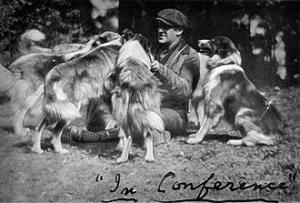
Dr. St. Thérèse of Lisieux OCD (January 2, 1873 – September 30, 1897)
The Story of a Soul (1922)
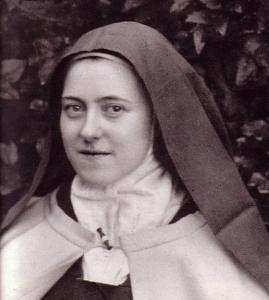
Roald Amundsen (July 16, 1872 – c. June 18, 1928)
My Life as an Explorer (1927)
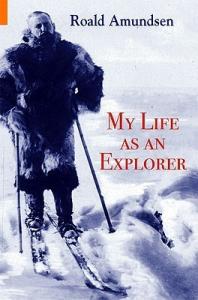
Florence Kate Upton (February 22, 1873–October 16, 1922)
The Adventures of two Dutch Dolls and a “Golliwogg” (1895)
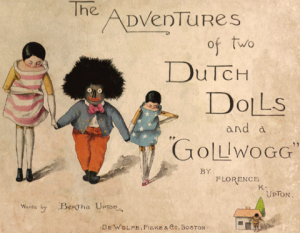
In The League of Extraordinary Gentlemen: Black Dossier and Volume IV: The Tempest, Alan Moore and Kevin O’Neill included Upton’s original Golliwog with a slightly reimagined, alien past. When this was attacked as a racist character, Moore responded that the Upton’s original Golliwog “was a dignified and respectable figure. His courage and strength of character were ably demonstrated in his picaresque adventures, as was his intellectual acumen.
Stewart Edward White (March 12, 1873 – September 18, 1946)
The silent places (1909) Joint European Series: Classics Illustrated JES Facsimiles – CCS Books
Willa Cather (December 7, 1873 – April 24, 1947)
Prairie Trilogy
O Pioneers! (1913)
The Song of the Lark (1915)
My Ántonia (1918)
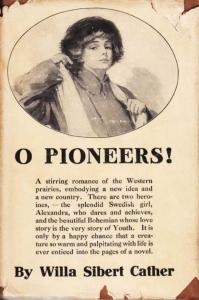
April Twilights (poems) (1903)
The Troll Garden (1905)
Alexander’s Bridge (1912)
Youth and the Bright Medusa (1920)
One of Ours (1922)
A Lost Lady (1923)
The Professor’s House (1925)
My Mortal Enemy (1926)
Death Comes for the Archbishop (1927)
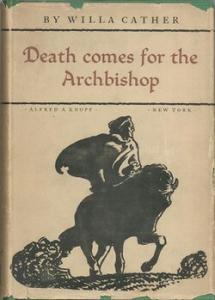
Etsuko Sugimoto (1874 – June 20, 1950)
A Daughter of the Samurai (1925)
Thornton W. Burgess (1874 –1965) was an American conservationist and author of children’s stories. He’s from Sandwich, Massachusetts where I lived with my best friend Marshall Myers for a time. By the time he retired, he had written more than 170 books and 15,000 stories for his daily newspaper column. Some of his stories include…
The Adventures of Danny Meadow Mouse (1915)
The Adventures of Paddy the Beaver (1917)
It’s honestly hard to choose from so many books.
William Somerset Maugham (January 25, 1874 – December 16,1965)
Liza of Lambeth (1897)
Mrs Craddock (1902)
The Merry Go Round (1904)
The Explorer (1907)
The Magician (1908)
Of Human Bondage (1915)
The Moon and Sixpence (1919)
The Moon and the Sixpence (1919)
The Trembling of a Leaf (1921)
The Painted Veil (1925)
Ashenden (1928)
The Casuarina Tree (1928)
Cakes and Ale (1930)

Mary Tourtel (January 28, 1874 – March 15, 1948)
Rupert Bear (November 8, 1920 – present)

(February 11, 1874 – June 30, 1953)
The Tale of the Little, Little Old Woman (1897)
Aunt Green, Aunt Brown and Aunt Lavender (1918)
Around the Year (1927)
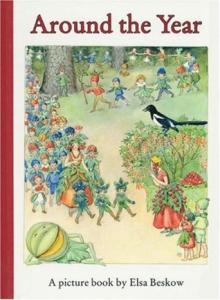
Henry Grey Graham (March 8, 1874 – December 5, 1959)
- Where We Got the Bible: Our Debt to the Catholic Church (1911)
- Saint Margaret Queen of Scotland (1911)
- What Faith Really Means (1914)
Robert Frost (March 26, 1874 – January 29, 1963)
-
-
- 1913. A Boy’s Will.
- 1914. North of Boston
- 1916. Mountain Interval
-
Two roads diverged in a yellow wood,
And sorry I could not travel both
And be one traveler, long I stood
And looked down one as far as I could
To where it bent in the undergrowth;
Then took the other, as just as fair,
And having perhaps the better claim,
Because it was grassy and wanted wear;
Though as for that the passing there
Had worn them really about the same,
And both that morning equally lay
In leaves no step had trodden black.
Oh, I kept the first for another day!
Yet knowing how way leads on to way,
I doubted if I should ever come back.
I shall be telling this with a sigh
Somewhere ages and ages hence:
Two roads diverged in a wood, and I—
I took the one less travelled by,
And that has made all the difference.
-
-
- 1923. Selected Poems
- “The Runaway”
- Also includes poems from first three volumes
- 1923. New Hampshire.
- 1924. Several Short Poems
- 1928. Selected Poems
- 1928. West-Running Brook
- 1929. The Lovely Shall Be Choosers, The Poetry Quartos, printed and illustrated by Paul Johnston
- 1930. Collected Poems of Robert Frost
- 1923. Selected Poems
-
Josephine Preston Peabody (May 30, 1874 – December 4, 1922)
Old Greek Folk Stories Told Anew (1897)
Lucy Maud Montgomery (November 30, 1874 – April 24, 1942),
Anne Shirley
1. Anne of Green Gables (1908) Great Illustrated Classics
2. Anne of Avonlea (1909)
3. Anne of the Island (1915)
4. Anne of Windy Poplars (1936) aka Anne of Windy Willows
5. Anne’s House of Dreams (1917)
6. Anne of Ingleside (1939)
7. Rainbow Valley (1919)
8. Rilla of Ingleside (1921)
9. The Blythes Are Quoted (2009)

-
-
- Anne of Green Gables (1919), a silent film adapted to the screen by Frances Marion, directed by William Desmond Taylor, and starring Mary Miles Minter as Anne; this is considered a lost film.
- Anne of Green Gables (1934), directed by George Nichols Jr. and starring Dawn O’Day as Anne Shirley; after filming, O’Day changed her screen name to Anne Shirley.
- Anne of Windy Poplars (1940), directed by Jack Hively, is a black & white “talkie” starring Dawn O’Day as Anne Shirley, now billed as “Anne Shirley”.
- Akage no An (1979; Red-Haired Anne), an animated television series, part of Nippon Animation‘s World Masterpiece Theater, produced in Japan and directed by Isao Takahata.
- Anne of Green Gables (1985), a CBC four-hour television mini series directed by Kevin Sullivan with Megan Follows as Anne; widely considered the definitive version to date.
- Anne of Green Gables: The Sequel (1987), a sequel to the 1985 miniseries which aired on CBC and the Disney Channel as Anne of Avonlea: The Continuing Story of Anne of Green Gables.
- Road to Avonlea (1990–1996) shown on CBC, a live-action television spin-off series based upon characters and episodes from several of L.M. Montgomery’s other books. Anne herself never appears but other characters from the previous two films are included, and the series is set within the same continuity as Sullivan’s 1980s miniseries.
- Anne of Green Gables: The Continuing Story (2000), a sequel to the 1985 television miniseries not based on the novels.
- Anne of Green Gables: The Animated Series (2001), a PBS Kids animated series for older children ages eight to twelve, created by Sullivan Entertainment Inc.
- Anne of Green Gables: A New Beginning (2008), a prequel to the 1985 television miniseries not based on the novels.
-
Emily
1.Emily of New Moon (1923)
2. Emily Climbs (1925)
3. Emily’s Quest (1927)
G.K. Chesterton (May 29, 1874 –June 14,1936) found in Great Tales of Action and Adventure
FATHER BROWN
1. The Innocence Of Father Brown (1911)
2. The Wisdom Of Father Brown (1914)
3. The Incredulity Of Father Brown (1926)
4. The Secret Of Father Brown (1927)
5. The Scandal Of Father Brown (1935)
The Complete Father Brown (1943)
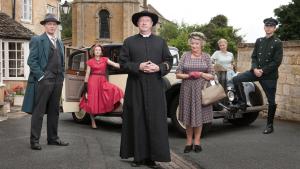
NOVELS
The Napoleon of Notting Hill (1904)
The Man Who Was Thursday: A Nightmare (1908)
The Ball and the Cross (1909)
Manalive (1912)
The Flying Inn (1914)
The Return of Don Quixote (1927)
Non-Fiction
The Everlasting Man (1925)
1875
Rafael Sabatini (April 29, 1875 –February 13,1950)
The Sea Hawk (1915) used in League of Extraordinary Gentlemen
Scaramouche (1921)
Captain Blood (1922) used in League of Extraordinary Gentlemen
The Nuptials of Corbal (1927)
The King’s Minion (1930)
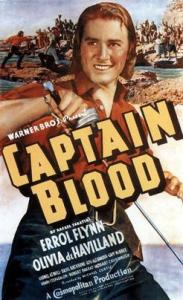
Edgar Wallace (April 1, 1875 –February 10, 1932)
Four Just Men
1. The Four Just Men (1905)
2. The Council of Justice (1908)
3. The Just Men of Cordova (1917)
4. Again the Three Just Men (1921)
aka The Law of the Four Just Men
5. The Three Just Men (1929)
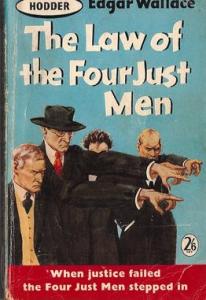
Eve’s Island (1909)
The Fourth Plague (1913)
Elk
The Fellowship of the Frog (1925)
The Joker (1926)
aka The Colossus
The Twister (1928)
White Face (1931)
Jacques Futrelle (April 9, 1875 – April 15, 1912)
“The Problem of Cell 13” (1905) found in The Mystery Hall of Fame: featured in crime writer H. R. F. Keating‘s list of the 100 best crime and mystery books ever published.[1] Science fiction and mystery author Harlan Ellison recalled that this story was his selection for “Lawrence Block‘s Best Mysteries of the Century“
It was used in League of Extraordinary Gentlemen
Edgar Rice Burroughs (September 1, 1875 – March 19, 1950) found in The Big Book of Adventure Stories
1. Tarzan of the Apes (1912) 11. The Tarzan Twins (1926) 14.Tarzan the Invincible (1930)
1. A Princess of Mars (1917) 7. A Fighting Man of Mars (1930) used in League of Extraordinary Gentlemen

Caspak series
-
-
- The Land That Time Forgot (1918)
- The People That Time Forgot (1918)
- Out of Time’s Abyss (1918)
-
Gilbert Hovey Grosvenor (October 28, 1875 – February 4, 1966) was the first full-time editor of the National Geographic magazine (1899–1954). Grosvenor is credited with having consolidated the nascent magazine.
Sherwood Anderson (September 13, 1876 – March 8, 1941)
Some of his books include
Novels
-
-
- Windy McPherson’s Son (1916)
- Marching Men (1917)
- Poor White (1920)
- Many Marriages (1923)
- Dark Laughter (1925) Though his books sold reasonably well, this book inspired by Anderson’s time in New Orleans during the 1920s, was his only bestseller.
- Tar: A Midwest Childhood (1926, semi-autobiographical novel
-
Short story collections
-
-
- Winesburg, Ohio (1919) This is his most enduring work.
- The Triumph of the Egg: A Book of Impressions From American Life in Tales and Poems (1921)
- Horses and Men (1923)
-
John Buchan (August 26, 1875 – February 11,1940)
The Thirty-Nine Steps (1915) Classics Illustrated
Witch Wood (1927)
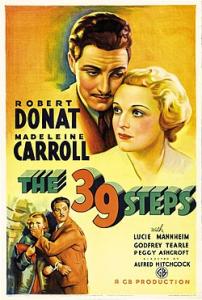
Jimmy Swinnerton (November 13, 1875 – September 5, 1974)
Mr. Jack August 30, 1903, until 1935
Little Jimmy February 14, 1904, to April 27, 1958

Jack London January 12, 1876 – November 22, 1916)
The Call of the Wild (1903) Great Illustrated Classics / Classics Illustrated
The Sea-Wolf (1904) Classics Illustrated
White Fang (1906) Great Illustrated Classics / Classics Illustrated
Martin Eden (1909) Classics Illustrated Joint European Series (JES) – CCS Books
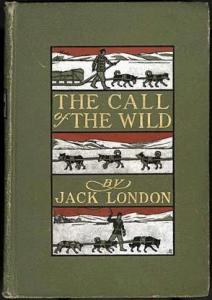
Short Stories
To Build a Fire” (1902, revised 1908) found in Great Tales of Action and Adventure
The Collected Science Fiction and Fantasy of Jack London ◦
1 Before Adam & Other Stories (2005) [C]
◦ 2 The Iron Heel & Other Stories (2005) [C]
◦ 3 The Star Rover & Other Stories (2005) [C]
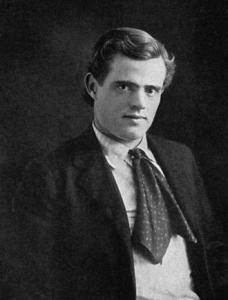
Christopher Golden
Secret Journeys of Jack London (with Tim Lebbon)
1. The Wild (2011)
2. The Sea Wolves (2012)
Rudolph Dirks (February 26, 1877 – April 20, 1968)
The Katzenjammer Kids (December 12, 1897) Th Katzenjammer Kids published its last original strip in 2006, but is still distributed in reprints by King Features Syndicate, making it the oldest comic strip still in syndication and the longest-running ever.

Hermann Hesse (July 2, 1877 – August 9,1962)
His interest in Eastern religious, spiritual, and philosophical traditions, combined with his involvement with Jungian analysis, helped to shape his literary work.
Demian (1919)
Siddhartha(1922)
Steppenwolf (1927)
Narcissus and Goldmund (1930)
Lloyd C. Douglas, (August 27, 1877 – February 13, 1951) was an American minister and author. Douglas was one of the most popular American authors of his time, although he did not write his first novel until he was 50. His works include The Robe, The Big Fisherman, Magnificent Obsession.
- More Than a Prophet (1905)–at Roy Glashan’s Library
- The Dilemma of Santa Claus (1915?)–at Roy Glashan’s Library
- The Re-appraisement of Heroism (1915)–at Roy Glashan’s Library
- Magnificent Obsession (1929)–Text—HTML—EPUB—MOBI
Patricia Wentworth (October 15, 1877 – January 28, 1961)
A Marriage under the Terror ( 1910)
Miss Silver # 1 Grey Mask (1928) Miss Silver is a fictional detective featured in 32 novels.
William Hope Hodgson (November 15, 1877 – April 19, 1918) was an English author. He produced a large body of work, consisting of essays, short fiction, and novels, spanning several overlapping genres including horror, fantastic fiction, and science fiction. Hodgson used his experiences at sea to lend authentic detail to his short horror stories, many of which are set on the ocean, including his series of linked tales forming the “Sargasso Sea Stories“.
The House on the Borderland (1908)
The Night Land (1912)
Carnacki, the Ghost-Finder (1913)
Lord Dunsany (July 24,1878 – October 25, 1957) He published more than 90 books during his lifetime, and his output consisted of hundreds of short stories, plays, novels, and essays; further works were published posthumously. Many critics feel his early work laid grounds for the fantasy genre.
The Gods of Pegāna (1905)
The Book of Wonder (1912)
The King of Elfland’s Daughter (1924)
In the Land of Time, and Other Fantasy Tales (2004)
Don Marquis (July 29, 1878 – December 29, 1937)
Archy and Mehitabel (1927)
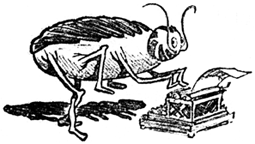
- Carl Sandburg (January 6, 1878 – July 22, 1967)
Rootabaga Stories (1922) - Abraham Lincoln: The Prairie Years (1926).
- The American Songbag (1927)
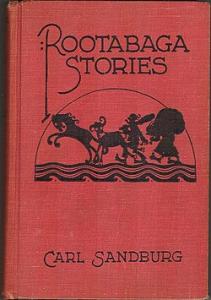
Upton Beall Sinclair Jr. (September 20, 1878 – November 25, 1968)
The Jungle (1906) /Classics Illustrated
Oil! (1927)
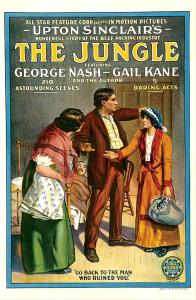
John Masefield (June 1, 1878 – May, 12 1967)
1. The Midnight Folk (1927)
2. The Box of Delights (1935) NOT IN PD

E. M. Forster (January 1, 1879 – 7 June 7, 1970)
A Room with a View (1908)
The Machine Stops • (1909)
Howards End (1910)
The Celestial Omnibus: And Other Stories (1911)
A Passage to India (1924)
Aspects of the Novel (1927)
The Eternal Moment and Other Stories (1928)
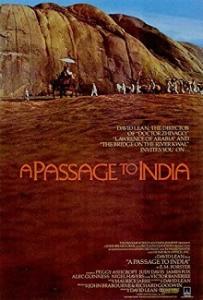
Norman Lindsay (February 22, 1879 – November 21, 1969)
The Magic Pudding (1918)
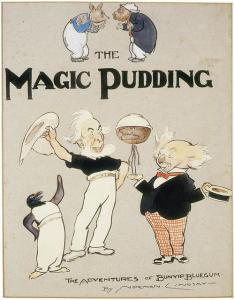
C. H. Chapman (April 1, 1879 – 1972) -From Wikipedia
Greyfriars School stories ran from 1908 to 1940 and appeared in The Magnet, in a total of 1,683 weekly issues. After 1940, the stories continued to appear in book form until Hamilton’s death in 1961. You can read the The Magnet Issues here.
It is a fictional English public school used as a setting in the long-running series of stories by the writer Charles Hamilton, who wrote under the pen-name of Frank Richards. Although the stories are focused on the Remove (or lower fourth form), whose most famous pupil was Billy Bunter, other characters also featured on a regular basis. Billy’s first appearance was in The Magnet No. 1 “The Making of Harry Wharton” (1908) and last appearance in Bunter’s Last Fling (1965)
Time is frozen in the Greyfriars stories; although the reader sees the passing of the seasons, the characters’ ages do not change and they remain in the same year groups.
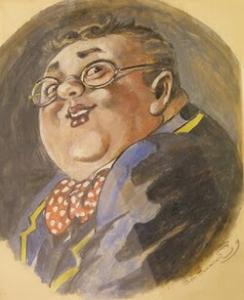
Billy Bunter appears in Alan Moore and Kevin O’Neill’s graphic novel The League of Extraordinary Gentlemen: Black Dossier, and still resides at the now closed Greyfriars in 1958 as an old man. He sells information about the former students of the school, which is supposed to have been a recruiting ground for spies and agents for the crown since the 16th century. To avoid copyright issues, as the character was still under copyright, the graphic novel only refers to the character by his first name.
Billy Bunter of Greyfriars School was broadcast as a BBC television series from 19 February 1951 to 22 July 1961. A comic strip was published in Knockout (drawn by Frank Minnitt) from 1939 to 1958, and then drawn by various other artists until Knockout merged with Valiant, in which comic strips continued to appear from February 23, 1963 to October 16, 1976.
Frederic G. Melcher
(April 12, 1879 – March 9, 1963)
He was an American publisher, bookseller, editor, and a major contributor to the library science field and book industry. He is particularly known for his contributions to the children’s book genre, including the Newbery Medal and Caldecott Medal. Melcher was named as one of the most important 100 leaders in the library science field of the 20th century in an American Libraries article and has been described as “the greatest all-round bookman in the English-speaking world”.
Talbot Mundy (April 23, 1879 – 5 August 1940) was an English writer of adventure fiction. much of his work was published in pulp magazines
Rung Ho! (1914)
The Winds of the World (1915)
King, of the Khyber Rifles (1916) Classics Illustrated
The Ivory Trail (1919)
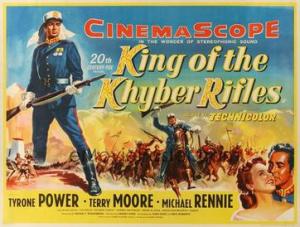
Jimgrim
Jimgrim and the Devil At Ludd (1922)
Jimgrim and the Lost Trooper (1922)
Jimgrim and the Seventeen Thieves of El-Kalil (1922)
The Nine Unknown (1923)
The Devil’s Guard (1926) aka Ramsden
The Hundred Days (1930)
The Marriage of Meldrun Strange (1930)
The Woman Ayisha (1930)
1880’s
Tex O’Reilly (August 15, 1880 – December 9, 1946)
The first known stories of Pecos Bill were published in 1917 by Edward O’Reilly for The Century Magazine, and collected and reprinted in 1923 in the book Saga of Pecos Bill.
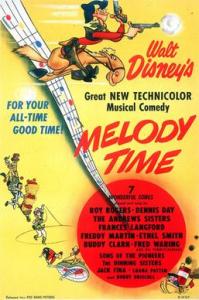
Honoré Willsie Morrow (February 19, 1880 – April 12, 1940)
The Great Captain trilogy centered upon Abraham Lincoln:
Forever Free (1927)
With Malice Toward None (1928),
The Last Full Measure (1930).
Seán O’Casey (March 30, 1880 – September 18, 1964)
-
-
- The Shadow of a Gunman (1923)
- Kathleen Listens In (1923)
- Juno and the Paycock (1924)
- Nannie’s Night Out (1924)
- The Plough and the Stars (1926)
- The Silver Tassie (1927)
-
Helen Keller (June 27, 1880 – June 1, 1968)
“The Frost King” (1891)
The Story of My Life (1903)
My Religion (1927; also called Light in My Darkness)
Midstream: my later life (1929)
We bereaved.(1929)
George Herriman (August 22, 1880 – April 25, 1944)
Krazy Kat (1913–1944)
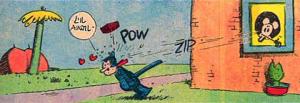
Johnny Gruelle (December 24, 1880 – January 9, 1938)
As author and illustrator
My Very Own Fairy Stories (1917)
Raggedy Ann Stories (1918)
Friendly Fairies (1919)
Raggedy Andy Stories (1920)
Orphant Annie (1921)
The Magical Land of Noom (1922)
Raggedy Ann and Andy and the Camel with the Wrinkled Knees (1924)
Raggedy Andy’s Number Book (1924)
Raggedy Ann’s Wishing Pebble (1925)
Raggedy Ann’s Alphabet Book (1925)
Beloved Belindy (1926)
The Paper Dragon: A Raggedy Ann Adventure (1926)
Wooden Willie (1927)
Raggedy Ann’s Magical Wishes (1928)
Marcella: A Raggedy Ann Story (1929)
The Cheery Scarecrow (1929)
Raggedy Ann in the Deep Deep Woods (1930)
Raggedy Ann’s Sunny Songs (1930), words and illustrations by Johnny Gruelle, music by Will Woodin
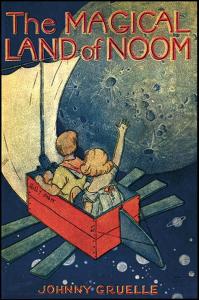
As illustrator
Grimm’s Fairy Tales (1914)
Nobody’s Boy (1916)
All About the Little Small Red Hen (1917)
Padraic Colum (December 8, 1881 –January 11, 1972)
The Land (Play) (1905)
The Fiddlers’ House (Play) (1907)
Thomas Muskerry (Play) (1910)
My Irish year (1912)
The King of Ireland’s Son (1916)
The Adventures Of Odysseus And The Tale Of Troy (1918)
The Boy Who Knew What the Birds Said (1918)
The Children’s Homer (1918)
The Adventures of Odysseus and The Tales of Troy (1919)
The Girl Who Sat By The Ashes (1919)
The Children Of Odin (1920)
The Boy Apprenticed to an Enchanter (1920)
The Golden Fleece and the Heroes Who Lived Before Achilles (1921)
Castle Conquer (1923)
At the gateways of the day (1924)
Margery Williams Bianco (July 22,1881 – September 4, 1944)
The Velveteen Rabbit (1922)
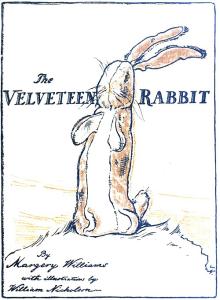
Giovanni Papini (January 9, 1881 – July 8, 1956)
Life of Christ (1921)
William B. Laughead (1882-1958) was a logger, advertising manager for Red River Lumber Company, and amateur artist. Laughead’s chief claim to fame is the fact that he was the author of several advertising pamphlets for the Red River Lumber Company, which served to introduce the legendary folk hero Paul Bunyan to a wide, popular audience. Inventory of the William B. Laughead Papers, 1897 – 1958 – Forest History SocietyClassics Illustrated Junior
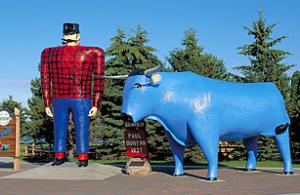
James Joyce (Irish) (February 2, 1882 –January 13, 1941)
Chamber Music (1907) Poems
Dubliners(1914) short-story collection
A Portrait of the Artist as a Young Man (1916)
Exiles (1918) A Play
Ulysses (1922)
Pomes Penyeach (1927) Poems

Bess Streeter Aldrich (February 17, 1881 – August 3, 1954)
Bison Book
Mother Mason (1924)
The Rim of the Prairie (1925)
The Cutters (1926)
A Lantern in Her Hand (1928)
P G Wodehouse (Oct 15, 1881 – Feb 14, 1975)
The Pothunters (1902)
Tales of St. Austin’s (1903)
Jeeves & Wooster
The Man with Two Left Feet (1917) – One story in a book of thirteen that has the first appearances of Jeeves and Bertie
1. My Man Jeeves (1919) Four stories in a book of eight, all four reprinted (in slightly rewritten forms) in the 1925 collection Carry On, Jeeves. The non-Jeeves stories feature Reggie Pepper.
2. The Inimitable Jeeves (1923) A semi-novel consisting of eighteen chapters, originally published as eleven short stories (some of which were split for the book):
3. Carry on, Jeeves (1925) Ten stories:
4. Very Good, Jeeves (1930) – Eleven stories
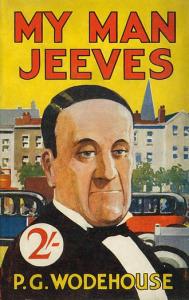
A A Milne (Alan Alexander Milne) (1882 – 1956)
1. When We Were Very Young (1924)
2. Winnie-the-Pooh (1926)
3. Now We Are Six (1927)
4. The House at Pooh Corner (1928)
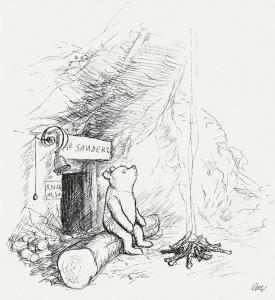
Winnie-the-Pooh Meets the Queen (e-book edition published as Winnie-the-Pooh and the Royal Birthday) is a 2016 children’s book written to celebrate the 90th birthdays of both the fictional character Winnie-the-Pooh and Queen Elizabeth II in 2016. The Queen celebrated her 90th Official Birthday on 11 June, although her actual birthday is 21 April 1926. The first Winnie-the-Pooh book, written by A. A. Milne, was published in October 1926. This original story imagines a meeting between Pooh and Queen Elizabeth at Buckingham Palace. The text was written by Jane Riordan while illustrations were by Mark Burgess in the style of the original drawings by E. H. Shepard.
Once on a Time (1917)
If I May (1920)
The Red House Mystery (1922)
A Gallery of Children (1925)
Virginia Woolf (January 25, 1882 – March 28, 1941)
-
-
- The Voyage Out (1915)
- Night and Day (1919)
- Jacob’s Room (1922)
- Mrs Dalloway (1925)
- To the Lighthouse (1927)
- Orlando: A Biography (1928) used in League of Extraordinary Gentlemen
-
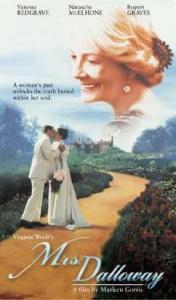
E. R. Eddison (November 24, 1882 – 18 August 18, 1945)
Zimiamvia # 1 The Worm Ouroboros (1922
Norse # 1 Styrbiorn the Strong (1926)
Sigrid Undset (May 20, 1882 – June 10, 1949) was a Danish-born Norwegian novelist. She was awarded the Nobel Prize for Literature in 1928.
- Kristin Lavransdatter is a trilogy of three volumes. in which the first volume was the basis for a commercial film, Kristin Lavransdatter (1995) directed by Liv Ullmann.
- Kristin Lavransdatter: The Wreath. (1920)
- Kristin Lavransdatter: The Wife (1921)
- Kristin Lavransdatter: The Cross (1922)
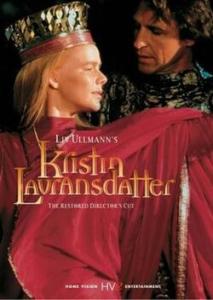
B Traven (1882 – 1969)
The Death Ship (1926)
The Treasure of the Sierra Madre (1927)
The Bridge in the Jungle (1929)
White Rose (1929)

Khalil Gibran ( January 6, 1883 – April 10, 1931)
The Prophet (1923)
Clarence E. Mulford (February 3, 1883 – May 10, 1956)
-
-
- Bar-20 (1906)
- The Orphan (1908)
- Hopalong Cassidy (1910)
- Bar-20 Days (1911)
- Buck Peters, Ranchman (1912)
- The Coming of Cassidy (1913)
- The Man from Bar-20 (1918)
- Johnny Nelson (1920)
- The Bar-20 Three (1921)
- Tex (1922)
- Bring Me His Ears (1922)
- H. C. Returns (1923)
- Black Buttes (1923)
- Rustler’s Valley (1924)
- Cottonwood Gulch (1925)
-
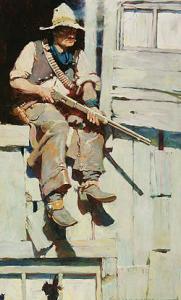
-
-
- Hopalong Cassidy’s Protege (1926)
- The Bar-20 Rides Again (1926)
- Corson of the J.C. (1928)
- Mesquite Jenkins (1928)
- Me an’ Shorty (1929)
- The Deputy Sheriff (1930)
-
Sax Rohmer (February 15, 1883 –10June 1,1959) found in The Big Book of Adventure Stories
-
-
- The Mystery of Dr. Fu-Manchu (The Insidious Dr. Fu Manchu) (1913)
- The Devil Doctor (The Return of Dr. Fu-Manchu) (1916)
- The Si-Fan Mysteries (The Hand of Fu-Manchu) (1917)
- Fu Manchu: A Chinese Melodrama (1919) – play written with Willard Mack
-
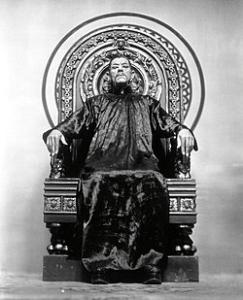
Franz Kafka (July 3,1883 –June 3, 1924)
The Metamorphosis (1915)
The Trial (1925)
The Castle (1926)
Amerika (1927)
Rube Goldberg (July 4, 1883 – December 7, 1970)
Mike and Ike (They Look Alike) (March 9, 1913, to February 1, 1914)
Boob McNutt (June 9, 1918 to September 23, 1934)
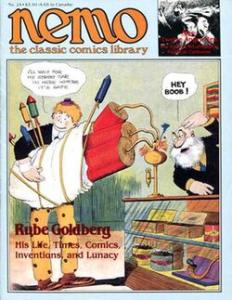
Cliff Sterrett (December 12, 1883 – December 28, 1964)
Polly and Her Pals (December 4, 1912, until December 7, 1958)
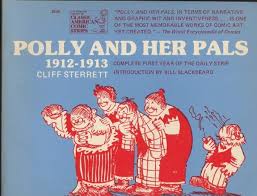
Johnston McCulley (1883–1958)
Novels
The Curse of Capistrano (1919) with Zorro
The Spider Strain (1919)
Zorro Rides Again (1931)
Zorro Hunts a Jackal (1933)
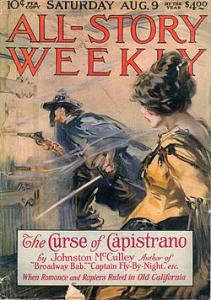
Zorro: The Masters Edition, 1944-1946 (Zorro) 2002
Young Zorro: The Iron Brand by Diego Vega and Jan Adkins (Dec 27, 2005)
Short stories
The Stolen Story (1919)
Thubway Tham
Thubway Tham’s Inthane Moment (1918)
Thubway Tham’s Thanksgiving Dinner (1918)
Thubway Tham’s Baggage Check (1919)
Thubway Tham and Elevated Elmer (1919)
Napoleon Hill (October 26, 1883 – November 8, 1970)
- The Law of Success (1928)
- The Magic Ladder to Success (1930)
Arthur Ransome (January 18, 1884 – June 3, 1967)
-
-
- The Child’s Book of the Seasons (1906)
- A History of Story-telling (1909)
- The Hoofmarks of the Faun (1911)
- Old Peter’s Russian Tales (1916)
- Swallows and Amazons (published 1930)
-
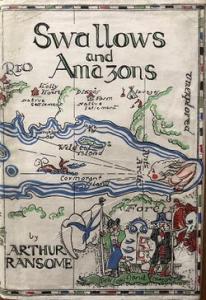
A. Merritt (January 20, 1884 – August 21, 1943)
Novels
-
-
- The Moon Pool (fix-up, 1919) Available online
(The Moon Pool (1918) + Conquest of the Moon Pool (1919)) - The Metal Monster (1920) Available online
- The Ship of Ishtar (1924) Available online
- Seven Footprints to Satan (1927) Available online
- The Moon Pool (fix-up, 1919) Available online
-
Short Stories
-
-
- “Through The Dragon Glass” (1917) Available online
- “The People of the Pit” (1918) Available online
- “Three Lines of Old French” (1919) Available online
- “Prologue” (The Metal Monster, 1920)
- The Pool of the Stone God (as W. Fenimore, 1923) Available online
- “The Women of the Wood” (1926) Available online
-
Eric P. Kelly (March 16, 1884 – January 3, 1960)
The Trumpeter of Krakow (1928)
Hugo Gernsback (August 16, 1884 – August 19, 1967)
Ralph 124C 41+ (1911/1925)
Earl Derr Biggers (1884 – 1933)
Charlie Chan
1. The House Without a Key (1925)
2. The Chinese Parrot (1926)
3. Behind That Curtain (1928)
4. The Black Camel (1929)
5 Charlie Chan Carries On (1930)
6 The Keeper of the Keys (1932)

1885
Bud Fisher (April 3, 1885 – September 7, 1954)
Mutt and Jeff, (November 15, 1907 – June 26, 1983) was the first successful daily comic strip in the United States.

W. F. Harvey (April 14, 1885 – June 4, 1937) found in Great Tales of Action and Adventure
Midnight House and Other Tales (1910) featuring August Heat
The Beast with Five Fingers (1919)
Robert Stell Lemmon (June 26, 1885 -March 3, 1964)
The Bamboo Trap (1923) found in Great Tales of Action and Adventure
Alain Leroy Locke (September 13, 1885 – June 9, 1954)
The New Negro: An Interpretation (1925)
Sinclair Lewis (February 7, 1885 – January 10, 1951)
Main Street (1920)
Babbitt (1922)
Arrowsmith (1925)
Elmer Gantry (1927)
The Man Who Knew Coolidge (1928)
Dodsworth (1929)
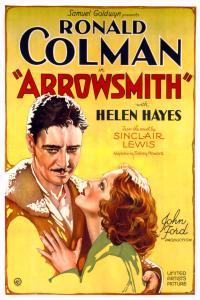
John Russell (April 22, 1885 – March 6,1956)
The Fourth Man (1917) Great Tales of Action and Adventure
Russell Thorndike (February 6, 1885 –November 7, 1972)
Doctor Syn: A Tale of the Romney Marsh (1915) used in League of Extraordinary Gentlemen
Dorothea Mackellar OBE (July 1, 1885 – January 14, 1968) was an Australian poet and fiction writer. Her poem “My Country” is widely known in Australia, especially its second stanza, which begins:
“I love a sunburnt country / A land of sweeping plains, / Of ragged mountain ranges, / Of droughts and flooding rains.”
Edna Ferber (August 15, 1885 – April 16, 1968)
So Big (1924)
Show Boat (1926)
Cimarron (1930)
Francis Beeding
John Leslie Palmer (1885-1944) and Hilary St George Saunders (1898-1951).
The House of Dr. Edwardes (1927)
D H Lawrence (David Herbert Lawrence) (1885 – 1930)
Sons and Lovers (1912)
Brangwen Family
1. The Rainbow (1915)
2. Women in Love (1920)
Hugh Lofting (1886 – 1947)
Doctor Dolittle
1. The Story of Doctor Dolittle (1920) aka Doctor Dolittle
2. The Voyages of Doctor Dolittle (1922) aka Doctor Dolittle and the Pirates
3. Doctor Dolittle’s Post Office (1923)
4. Doctor Dolittle’s Circus (1924)
5. Doctor Dolittle’s Zoo (1925)
6. Doctor Dolittle’s Caravan (1926)
7. Doctor Dolittle’s Garden (1927)
8. Doctor Dolittle in the Moon (1928)
Not Yet in PD
9. Gub Gub’s Book (1932)
10. Doctor Dolittle’s Return (1933)
11. Doctor Dolittle’s Birthday Book (1936)
12. Dr Dolittle and the Secret Lake (1948)
13. Doctor Dolittle and the Green Canary (1950)
14. Dr Dolittle’s Puddleby Adventures (1952)
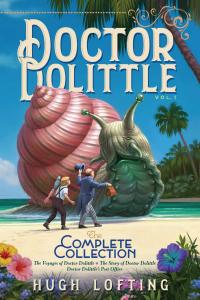
The Twilight of Magic (1930)
Walter R. Brooks (January 9, 1886 – August 17, 1958)
To and Again (reissued 1949 as Freddy Goes to Florida, first of the Freddy the Pig series
Freddy Goes to the North Pole, 1930 (More To and Again)

Apsley Cherry-Garrard (January 2, 1886 – May 18, 1959)
The Worst Journey in the World (1922)
Farnham Bishop (January 17, 1886 – February 19, 1930)
Arthur Gilchrist Brodeur (September 18, 1888 – September 9, 1971)
The Golden Snare (1918) found in The Big Book of Adventure Stories
The Altar of the Legion (1926)
Joyce Kilmer, (December 6, 1886 – July 30, 1918) He was an American writer and poet mainly remembered for a short poem titled “Trees” (1913), which was published in the collection Trees and Other Poems in 1914.
TREES
(For Mrs. Henry Mills Alden)
ITHINK that I shall never see
A poem lovely as a tree.
A tree whose hungry mouth is prest
Against the earth’s sweet flowing breast;
A tree that looks at God all day,
And lifts her leafy arms to pray;
A tree that may in Summer wear
A nest of robins in her hair;
Upon whose bosom snow has lain;
Who intimately lives with rain.
Poems are made by fools like me,
But only God can make a tree.
Charles Nordhoff (February 1, 1887 – April 10, 1947)
The Fledgling (1919)
The Lafayette Flying Corps (1920) (with James Norman Hall)
The Pearl Lagoon (1924)
Picaro (1924)
The Derelict (1928)
Falcons of France (1929) (with James Norman Hall)
Ray Cummings (August 30, 1887 – January 23, 1957)
The Girl in the Golden Atom (1919) found in The Big Book of Adventure Stories
Milo Winter (August 7, 1888 – August 15, 1956) was an American book illustrator. He created editions of Aesop’s Fables, Arabian Nights, Alice in Wonderland, A Christmas Carol, Gulliver’s Travels, Tanglewood Tales (1913), and others. Books – Project Gutenberg
- The Aesop for Children
- Twenty Thousand Leagues Under the Seas: An Underwater Tour of the World Jules Verne
- The Arabian Nights Entertainments
- Gulliver’s Travels Jonathan Swift
- Treasure Island Robert Louis Stevenson
- Nights With Uncle RemusJoel Chandler Harris
- The Book of Elves and Fairies for Story-Telling and Reading Aloud and for the Children’s Own Reading Frances Jenkins Olcot
- The Swiss Family Robinson; or, Adventures on a Desert IslandJohann David Wyss
- The Trail BookMary Austin
- Story-Telling Ballads
- Doctor Rabbit and Tom Wildcat Thomas C. Hinkle
- Doctor Rabbit and Ki-Yi CoyoteThomas C. Hinkle
- \Doctor Rabbit and Brushtail the Fox Thomas C. Hinkle
- Nuova; or, The New Bee Vernon L. Kellogg

Arthur Gilchrist Brodeur (September 18, 1888 – September 9, 1971)
The Golden Snare (1918) with Farnham Bishop found in The Big Book of Adventure Stories
Altar of the Legion (1926) with Farnham Bishop
Sapper H. C. McNeile Herman Cyril McNeile, (September 28, 1888 –August 14, 1937),
Bull-Dog Drummond used in League of Extraordinary Gentlemen
Bull-Dog Drummond (1920)
The Black Gang (1922)
The Dinner Club (1923)
The Third Round (1924)
The Final Count (1926)
The Female of the Species (1928)
Four Rounds of Bull-Dog Drummond (1929)
Temple Tower (1929)
N. C. Wyeth (October 22, 1882 – October 19, 1945) was an American painter and illustrator. He was a student of Howard Pyle and became one of America’s most well-known illustrators. He illustrated editions of Kidnapped (1913), Robin Hood (1917), The Last of the Mohicans (1919), Robinson Crusoe (1920), Rip Van Winkle (1921), The White Company (1922), and The Yearling (1939). He did work for prominent periodicals, including Century, Harper’s Monthly, Ladies’ Home Journal, McClure’s, Outing, The Popular Magazine, and Scribner’s.
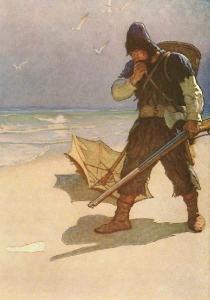
Marion St. John Webb (December 05, 1888 – May 02, 1930)
Knock Three Times! (1917)
The Girls of Chequertrees (1918)
The House with the Twisting Passage (1922)
The littlest one, his book (1927)
Arvid Paulson (1888-1977) Clayton Edwards, and Miguel de Cervantes Saavedra
The Story of Don Quixote, (1922
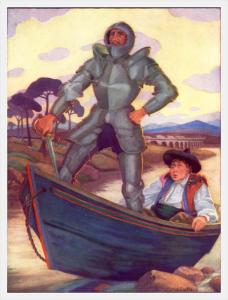
T. S. Eliot (September 26, 1888 – January 4, 1965)
The Love Song of J. Alfred Prufrock (1915)
The Waste Land (1922)
The Hollow Men (1925)
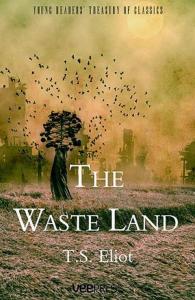
-
-
- Journey of the Magi. (1927)
- A Song for Simeon. (1928)
- Animula (1929)
- Ash-Wednesday (1930)
- Marina (1930)
-
F. Tennyson Jesse (March 1, 1888 – 6 August 6, 1958)
Thirty Pieces of Silver (1924)
Henry Beston (June 1, 1888 – April 15, 1968)
-
-
- A Volunteer Poilu (1916)
- Full Speed Ahead (1919)
- The Firelight Fairy Book (1919)
- The Starlight Wonder Book (1921)
- Book of Gallant Vagabonds (1925)
- The Sons of Kai (1926)
- The Living Age (1921)
- The Outermost House (1928
-
T. E. Lawrence (“Lawrence of Arabia”) (August 16, 1888 – May 19,1935)
Seven Pillars of Wisdom (1926)
Sydney Horler (18 July 1888 – 27 October 1954)
The Mystery of No. 1 (1925) aka The Order of the Octopus
The House of Secrets (1926)
The Screaming Skull (1930)
Ronald Knox (February 17, 1888 – August 24, 1957)
Non-Fiction
A Spiritual Aeneid: Being an Account of a Journey to the Catholic Faith (1918)
The Belief of Catholics (1927). His survey of Catholic belief, considered a classic of apologetics and a Catholic equivalent to C. S. Lewis’s Mere Christianity.
Detective Fiction
The Viaduct Murder (1925)
1. The Three Taps (1927) – features Miles Bredon
2. The Footsteps At the Lock (1928) features Miles Bredon
Philip Francis Nowlan (November 13, 1888 – February 1, 1940)
Armageddon 2419 A.D. (1928) found in The Big Book of Adventure Stories
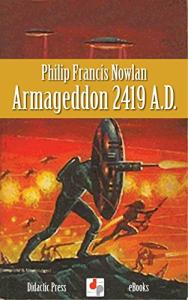
S S van Dine (1888 – 1939)
Philo Vance Murder Cases
1. The Benson Murder Case (1926)
2. The Canary Murder Case (1927)
3. The Greene Murder Case (1928)
4. The Bishop Murder Case (1928)
5. The Scarab Murder Case (1930)
Anita Loos (1888 – 1981)
Gentlemen Prefer Blondes (1926)
Katherine Mansfield (1888 – 1923)
Poems (poems) (1896)
In a German Pension (1911)
Bliss (1922)
The Garden Party (1922)
The Dove’s Nest (1923)
The Little Girl and Other Stories (1924)
Something Childish (1924)
The Aloe (1930)
Charles Boardman Hawes (January 24, 1889 – July 16, 1923
- The Mutineers (1919 or 1920) a tale of old days at sea and of adventures in the Far East as Benjamin Lathrop set it down some sixty years ago. Classics Illustrated
- The Great Quest (1921) a romance of 1826, wherein are recorded the experiences of Josiah Woods of Topham, and of those others with whom he sailed for Cuba and the Gulf of Guinea. This was first runner-up for the inaugural Newbery Medal in 1922, the first American award for children’s books.[
- Gloucester, by Land and Sea (1923) the story of a New England seacoast town – published two days after his death.
- The Dark Frigate (1923) wherein is told the story of Philip Marsham who lived in the time of King Charles and was bred a sailor but came home to England after many hazards by sea and land and fought for the King at Newbury and lost a great inheritance and departed for Barbados in the same ship, by curious chance, in which he had long before adventured with the pirates. It was winner of the third annual Newbery Medal and the first for a writer born in the U.S. Classics Illustrated
- “The Story of the Ship “Globe” of Nantucket”, The Atlantic Monthly (December 1923): 769–79
- “A Boy Who Went Whaling”, The Atlantic Monthly 133:6 (June 1924): 797–805
- Whaling (Doubleday, Page, 1924) — “Completed after the author’s death by his wife.”
- Works by Charles Boardman Hawes at Project Gutenberg
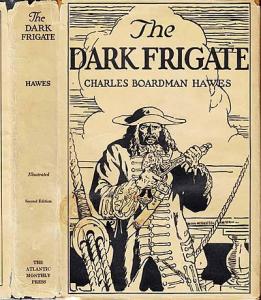
Herbert Asbury (September 1, 1891 – February 24, 1963)
The Gangs of New York (1927)
1890’s
Folk-Lore and Legends: North American Indian (1890) by Anonymous
H P Lovecraft (1890 – 1937) Books used in League of Extraordinary Gentlemen.
“The Call of Cthulhu” (1928)
Collected Fiction Volume 1: 1905-1925: A Variorum Edition (2016) [C]
Collected Fiction Volume 2: 1926-1930: A Variorum Edition (2016) [O]
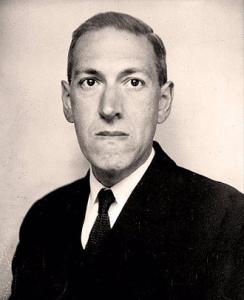
Karel Čapek (January 9, 1890 – December 25, 1938)
R.U.R. Rossum’s Universal Robots (1920)
Hugh Beaver (May 4, 1890 – January 16, 1967) was an English-South African civil engineer, industrialist and bureaucrat, who founded the Guinness World Records (then known as Guinness Book of Records). He was Director-General of the Ministry of Works and managing director at Guinness Brewery.
Elsie Egermeier (July 28, 1890 – Oct. 15, 1986)
Egermeier’s Bible Story Book (1927)
(August 1890 – October 25, 1943)
The Bellamy Trial (1927)
Dame Agatha Christie (September 15, 1890 –January 12, 1976)
Hercule Poirot
1. The Mysterious Affair at Styles (1920)
2. The Murder on the Links (1923)
3. Poirot Investigates (1924)
4. The Murder of Roger Ackroyd (1926)
5. The Big Four (1927)
6. The Mystery of the Blue Train (1928)
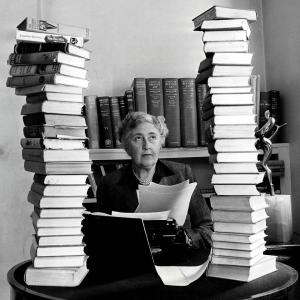
The Secret Adversary(1922) Tommy and Tuppence
The Man in the Brown Suit(1924) Colonel Race
The Secret of Chimneys (1925) Superintendent Battle
The Seven Dials Mystery (1929) Superintendent Battle
The Murder at the Vicarage (1930) Miss Marple
Giant’s Bread (1930)
Agatha Christie in Film and TV
Doctor Who Episode: The Unicorn and the Wasp (May 17, 2008) Episode: 7 |4th Series Agatha and the Truth of Murder (2018)
Richmal Crompton (November 15, 1890 –January 11,1969)
1. Just William (1922)
2. More William (1922)
3. William Again (1923)
4. William The Fourth (1924)
5. Still William (1925)
6. William The Conqueror (1926)
7. William The Outlaw (1927)
8. William In Trouble (1927)
9. William The Good (1928)
10. William (1929)
11. William The Bad (1930)
On Film
Just William (1940)
Just William’s Luck (1947)
William Comes to Town (1948)
On TV
Just William (2010 TV series)
Gertrude Chandler Warner (April 16, 1890 – August 30, 1979)
The Boxcar Children (1924)
Ruth Plumly Thompson (July 27, 1891 –April 6,1976)
15. The Royal Book of Oz (1921)
16. Kabumpo in Oz (1922)
17. The Cowardly Lion of Oz (1923)
18. Grampa in Oz (1924)
19. The Lost King of Oz (1925)
20. The Hungry Tiger of Oz (1926)
21. The Gnome King of Oz (1927)
22. The Giant Horse of Oz (1928)
23.Jack Pumpkinhead of Oz 1929
24. The Yellow Knight of Oz 1930
Plus More Oz Books By Ruth
And a boat full of even more Oz tales List of Oz books – Wikipedia
In which 2 more are in Public Domain by Jack Snow (1907 – 1956)
37. The Magical Mimics in Oz (1946)
38. The Shaggy Man of Oz (1949)
More Oz Tales
Oz Reimagined: New Tales from the Emerald City and Beyond by John Joseph Adams
Also by Ruth
The Curious Cruise of Captain Santa (1926)
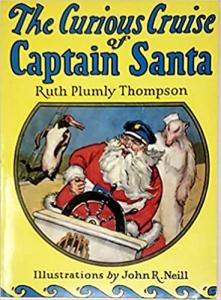
Lyle Saxon (September 4, 1891 – April 9, 1946)
- Father Mississippi: The Story of the Great Flood of 1927 (1927)
- Fabulous New Orleans (1928)
- Old Louisiana (1929)
- Lafitte the Pirate (1930)
Percy Crosby (December 8, 1891 – December 8, 1964)
Skippy (1923 to 1945)
J. R. R. Tolkien (January 3, 1892 – 2 September 2, 1973)
Goblin Feet: A Poem (1915) found in The Book of Fairy Poetry (1920)
Max Brand (May 29, 1892 – May 12, 1944)
Dan Barry series
-
-
- The Untamed (1919)
- The Night Horseman (1920)
- The Seventh Man (1921)
- Dan Barry’s Daughter (1923)
-
(July 26, 1892 – June 18, 1979)
In Search Of England (1927)
Harold Albert Lamb (September 1, 1892 – April 9, 1962)
The Mighty Manslayer (1918) found in The Big Book of Adventure Stories
Marching Sands (1920)
Collections of Public Domain Stories
The Curved Saber: The Adventures of Khlit the Cossack (1964) [C]
The Mighty Manslayer (1969) [C]
Ryūnosuke Akutagawa (1892 – 1927)
Rashōmon and Seventeen Other Stories
Thorne Smith (1892 – 1934)
Topper (1926)
The Stray Lamb (1929)
Dorothy L Sayers (1893 – 1957)
Peter Wimsey
1. Whose Body? (1923)
2. Clouds of Witness (1926)
3. Unnatural Death (1927)
4. Lord Peter Views the Body (1928)
5. The Unpleasantness at the Bellona Club (1928)
6. Strong Poison (1930)
Anthony Berkeley (1893 – 1971)
Roger Sheringham
1. The Layton Court Mystery (1925)
2. The Wychford Poisoning Case (1926)
3. Roger Sheringham and the Vane Mystery (1927)
4. The Silk Stocking Murders (1928)
5. The Poisoned Chocolates Case (1929)
6. The Second Shot (1930)
Other
The Professor On Paws (1926)
Cicely Disappears (1927) The Wintringham Mystery (as by A Monmouth Platts)
Mr Priestley’s Problem (1927)
Clark Ashton Smith.(January 13, 1893 – August 14, 1961)
The Abominations of Yondo (1926)
Dorothy Parker (August 22, 1893 – June 7, 1967)
Enough Rope (1926)
Sunset Gun (1928)
Richard Edward Connell Jr. (October 17, 1893 – November 22, 1949)
The Most Dangerous Game” (1924) found in The Big Book of Adventure Stories
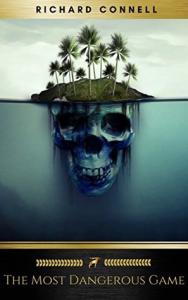
Harold Gray (January 20, 1894 – May 9, 1968)
Little Orphan Annie (August 5, 1924 – June 13, 2010)
Elinor Brent-Dyer (April 6, 1894 – September 20, 1969)
# 1 The School at the Chalet (1925)
2 Jo of the Chalet School (1926)
3 The Princess of the Chalet School (1927)
4 The Head Girl of the Chalet School (1928)
5 The Rivals of the Chalet School (1929)
6 Eustacia Goes to the Chalet School (1930)
Dashiell Hammett (May 27, 1894 – January 10, 1961)
-
-
- “The Parthian Shot” The Smart Set, October 1922 Collected Stories: Volume 1: 1922–1924 (2025)
- The guttingog Couffignal / Dashiell Hammett 1925 found in The Mystery Hall of Fame
- Red Harvest. New York: Alfred A. Knopf. 1929.
- The Dain Curse. New York: Alfred A. Knopf. 1929.
- The Maltese Falcon. New York: Alfred A. Knopf. 1930.
-
George Fielding Eliot (June 22, 1894 – April 21, 1971)
-
-
- The Justice of the Czar (1928)
- The Copper Bowl (1928) found in The Big Book of Adventure Stories
-
Aldous Huxley (July 26, 1894 – 22 November 22, 1963) Author of Brave New World (1932)
Crome Yellow (1921)
Antic Hay (1923)
Those Barren Leaves (1925)
Point Counter Point (1928)
Short story collections
Limbo (1920)
Mortal Coils (922)
Little Mexican and Other Stories (1924) (US title: Young Archimedes)
Two or Three Graces and Other Stories (1926)
Brief Candles (1930)
E. E. Cummings (October 14, 1894 – September 3, 1962)
The Enormous Room (1922)
1895
Fulton J. Sheen (May 8, 1895 – December 9, 1979)
-
-
- God and Intelligence. London: Longmans-Green, 1925.
- Religion Without God. London: Longmans-Green, 1928.
- The Life of All Living: The Philosophy of Life. New York: The Century Co., 1929.
- The Divine Romance. New York: The Century Co., 1930.
-
Henry William Williamson (1 December 1895 – 13 August 1977)
Tarka the Otter (1927)
John Roderigo Dos Passos (January 14, 1896 – September 28, 1970)
Three Soldiers (1921)
Manhattan Transfer (1925)
F Scott Fitzgerald (September 24, 1896 – December 21, 1940)
This Side of Paradise (1920)
Flappers and Philosophers (1920)
The Beautiful and Damned (1922)
Tales of the Jazz Age (1922) featuring The Curious Case of Benjamin Button
The Great Gatsby (1925) On Film (1974) (2013)
All the Sad Young Men (1926)
On Film
The Curious Case of Benjamin Button (2008)
Murray Leinster (June 16, 1896 – June 8, 1975) Dean of Science Fiction Guttenberg
First story, “The Foreigner” (1916)
First Science-Fiction Story The Runaway Skyscraper (1919)
found in Wondrous Beginnings, (Jan 2003) and FREE ONLINE with loads of his other work written throughout the 20th century
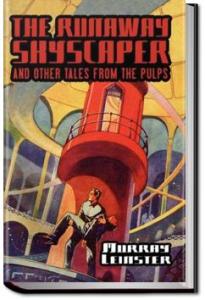
William Faulkner (1897 – 1962)
“Landing in Luck” (1919
Soldiers Pay (1926)
Mosquitoes (1927)
The Wishing Tree (1927)
Sartoris† (1929)
The Sound and the Fury (1929)
As I Lay Dying (1930)
“A Rose for Emily” (1930)
Thornton Wilder (April 17, 1897 – December 7, 1975)
The Trumpet Shall Sound (1926)
The Cabala (1926)
The Bridge of San Luis Rey (1927)—won the Pulitzer Prize for the Novel
The Woman of Andros (1930)—based on Andria, a comedy by Terence
The Long Christmas Dinner (1930)
Henry Luce (April 3, 1898 – February 28, 1967) He was an American magazine magnate who founded Time, Life, Fortune, and Sports Illustrated magazines. He has been called “the most influential private citizen in the America of his day”.
Erich Maria Remarque (June 22, 1898 – September 25, 1970)
- Die Traumbude. Ein Künstlerroman (1920) ; English translation: The Dream Room
- Station am Horizont (1928) ; English translation: Station at the Horizon
- Im Westen nichts Neues(1929) ; English translation: All Quiet on the Western Front (1929) Classics Illustrated
Arthur Owen Barfield (November 9, 1898 – December 14, 1997) was a British philosopher, author, poet, critic, and member of the Inklings.
-
-
- The Silver Trumpet novel. (1925)
- History in English Words (1926)
- Poetic Diction: A Study In Meaning (1928)
-
C. S. Lewis (November 29, 1898 – November 22, 1963)
Spirits in Bondage (1919; published under pseudonym Clive Hamilton)
Dymer (1926; published under pseudonym Clive Hamilton)
May Justus (May 12, 1898 – November 7, 1989)
Peter Pocket: A Little Boy of the Cumberland Mountains (1927)
Ernest Hemingway (July 21, 1899 – July 2, 1961)
In Our Time (1925)
The Sun Also Rises (1926)
The Torrents of Spring (1926)
In Another Country (1927)
Men Without Women (1927)
A Farewell to Arms (1929)
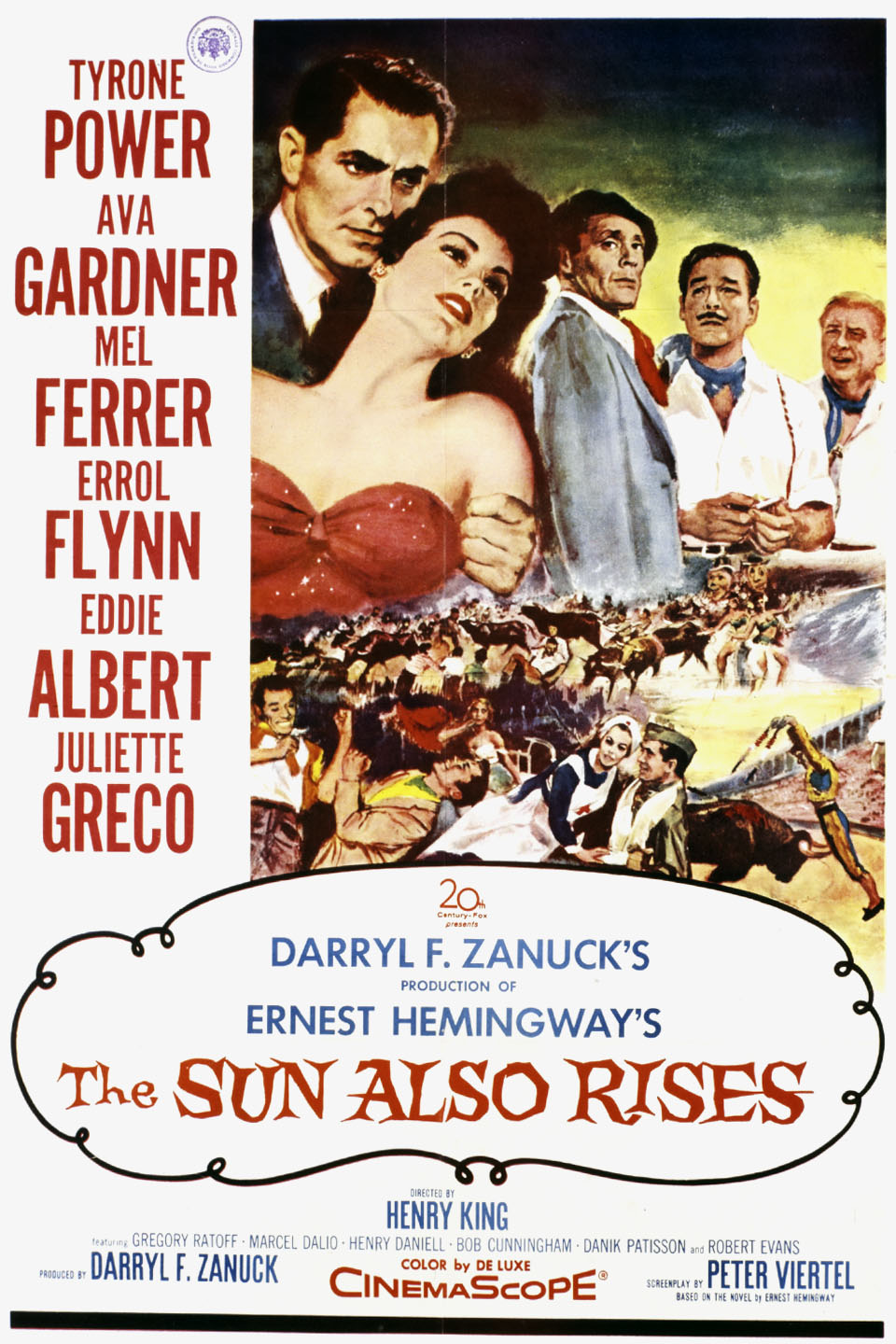
On TV
Timeless (2016–2018) Episode: The Lost Generation (2017) Season 1 | Episode 14
DC’s Legends of Tomorrow Episode: Tender is the Nate (2018) Season 4| Episode 6
Born In the 20th Century
Franklin W Dixon (1902 – 1977)
Hardy Boys
1. The Tower Treasure (1927)
2. The House on the Cliff (1927)
3. The Secret of the Old Mill (1927)
4. The Missing Chums (1928)
5. Hunting for Hidden Gold (1928)
6. The Shore Road Mystery (1928)
7. The Secret of the Caves (1929)
8. The Mystery of Cabin Island (1929)
9. Great Airport Mystery (1930)
Charles Augustus Lindbergh (February 4, 1902 – August 26, 1974)
“WE” (1927 )
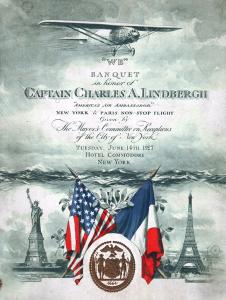
Countee Cullen (May 30, 1903 – January 9, 1946)
He was an American poet, novelist, children’s writer, and playwright, particularly well known during the Harlem Renaissance
-
-
- Tableau(1925)
- Color, Harper & Brothers, 1925; (includes the poems “Incident”, “Near White”, “Heritage”, and others), illustrations by Charles Cullen
- Copper Sun, Harper & Brothers (1927)
- Harlem Wine(1926)
- The Ballad of the Brown Girl (1927) illustrations by Charles Cullen
- The Black Christ and Other Poems (1929) illustrations by Charles Cullen
-
I HAVE A RENDEZVOUS WITH LIFE
Caroling Dusk (1927)
edited by Countee Cullen
(With apologies to the memory of Alan Seeger)
I have a rendezvous with Life
In days I hope will come
Ere youth has sped and strength of mind,
Ere voices sweet grown dumb;
I have a rendezvous with Life
When Spring’s first heralds hum.
It may be I shall greet her soon,
Shall riot at her behest;
It may be I shall seek in vain
The peace of her downy breast;
Yet I would keep this rendezvous,
And deem all hardships sweet,
If at the end of the long white way,
There Life and I shall meet.
Sure some will cry it better far
To crown their days in sleep,
Than face the wind, the road, and rain,
To heed the falling deep;
Though wet, nor blow, nor space I fear,
Yet fear I deeply, too,
Lest Death shall greet and claim me ere
I keep Life’s rendezvous.
Margery Allingham (1904 – 1966)
She was an English novelist from the “Golden Age of Detective Fiction“, and considered one of its four “Queens of Crime“, alongside Agatha Christie, Dorothy L. Sayers and Ngaio Marsh.
Blackkerchief Dick (1923)
The White Cottage Mystery (1927
The Crime at Black Dudley (1929) featuring the gentleman sleuth Albert Campion
Leslie Charteris (May 12, 1907 – April 15, 1993)
Meet the Tiger (1928) was the first novel in a long-running series of books (lasting into the 1980s) featuring the adventures of Simon Templar, alias “The Saint”.
Jack Williamson (April 29, 1908 – November 10, 2006)
One of several called the “Dean of Science Fiction”.
He is also credited with one of the first uses of the term genetic engineering.
-
-
- The Metal Man (1928)
- The Alien Intelligence (1929)
- The Second Shell (1929)
- The Girl from Mars (1929) with Miles J. Breuer, M.D.
-
Barbara Newhall Follett (March 4, 1914 – disappeared December 7, 1939)
The House Without Windows, (1927) Published when was twelve years old.
The Voyage of the Norman D (1928) Received critical acclaim when she was fourteen.
Lost Island (Plus Three Stories and an Afterword) (2020)
In December 1939, aged 25, Follett reportedly became depressed with her marriage and walked out of her apartment, never to be seen again.
Newbury Award Winners and Honor Books
1922
Hendrik Willem van Loon: The Story of Mankind –Winner
Charles Boardman Hawes: The Great Quest – Honor
Bernard Marshall: Cedric the Forester – Honor
William Bowen: The Old Tobacco Shop: A True Account of What Befell a Little Boy in Search of Adventure – Honor
Padraic Colum: The Golden Fleece and the Heroes Who Lived Before Achilles – Honor
Cornelia Meigs: The Windy Hill – Honor
1923
Hugh Lofting: The Voyages of Doctor Dolittle Winner
1924
Charles Boardman Hawes: The Dark Frigate – Winner
1925
Charles Finger: Tales from Silver Lands – Winner
Annie Carroll Moore: Nicholas: A Manhattan Christmas Story – Honor
Anne Parrish & Dillwyn Parrish: The Dream Coach – Honor
1926
Arthur Bowie Chrisman: Shen of the Sea – Winner
Padraic Colum: The Voyagers: Being Legends and Romances of Atlantic Discovery – Honor
1927
Will James: Smoky the Cow Horse – Winner
1928
Dhan Gopal Mukerji: Gay Neck, the Story of a Pigeon – Winner
Ella Young: The Wonder Smith and His Son – Honor
Caroline Snedeker: Downright Dencey – Honor
1929
Eric P. Kelly: The Trumpeter of Krakow – Winner
John Bennett: The Pigtail of Ah Lee Ben Loo with Seventeen Other Laughable Tales and 200 Comical Silhouettes – Honor
Wanda Gág: Millions of Cats – Honor
Grace Hallock: The Boy Who Was – Honor
Cornelia Meigs: Clearing Weather – Honor
Grace Moon: Runaway Papoose – Honor
Elinor Whitney Field: Tod of the Fens – Honor
The Pulitzer Prize for Novel
is one of the seven American Pulitzer Prizes that are annually awarded for Letters, Drama, and Music. It recognizes distinguished fiction by an American author, preferably dealing with American life, published during the preceding calendar year. As the Pulitzer Prize for the Novel, it was one of the original Pulitzers; the program was inaugurated in 1917 with seven prizes, four of which were awarded that year. (No Novel prize was awarded in 1917; the first was awarded in 1918.
-
-
- 1918: Ernest Poole (1880–1950) His Family(1917)
- 1919: Booth Tarkington (1869–1949) The Magnificent Ambersons (1918)
- 1920: Not awarded (1919)
- 1921: Edith Wharton (1862–1937) The Age of Innocence (1920
- 1922: Booth Tarkington (1869–1949) Alice Adams (1921)
- 1923: Willa Cather (1873–1947) One of Ours (1922)
- 1924: Margaret Wilson (1882–1973) The Able McLaughlins (1923)
- 1925: Edna Ferber (1885–1968) So Big (1924)
- 1926: Sinclair Lewis (1885–1951) Arrowsmith (1925)
- 1927: Louis Bromfield (1896–1956) Early Autumn (1926)
- 1928: Thornton Wilder (1897–1975) The Bridge of San Luis Rey (1927)
- 1929: Julia Peterkin (1880–1961) Scarlet Sister Mary (1928)
- 1930 : Oliver La Farge (1901–1963) Laughing Boy (1929)
- 1931 : Margaret Ayer Barnes (1886–1967) Years of Grace (1931)
-
2024
1928 is Public Domain in 2024 |
Fiction
-
-
- Joyce Lankester Brisley 1. Milly-Molly-Mandy Stories (1928)
- Leslie Charteris‘s Meet the Tiger, the first adventure of Simon Templar
- Moray Dalton – One by One They Disappeared Hugh Collier Mysteries
- Wanda Gág – Millions of Cats
- Eric P. Kelly-The Trumpeter of Krakow
- Robert Nathan – The Bishop’s Wife
- Ilf and Petrov – The Twelve Chairs
- Erich Maria Remarque – All Quiet on the Western Front
- Molly Thynne -The Draycott Murder Mystery
- Evelyn Waugh – Decline and Fall
- Edith Wharton – The Children
-
A Look Further Ahead
1929 in 2025
-
-
- Joyce Lankester Brisley – Milly-Molly-Mandy Again (1929)
- Antoine de Saint-Exupéry – Courrier sud (Southern Mail)
- Wanda Gág–The Funny Thing
- Ernest Hemingway – A Farewell to Arms
- Richard Hughes – A High Wind in Jamaica
- William Faulkner – The Sound and the Fury
- Erich Kästner – Emil and the Detectives (Emil und die Detektive)
- Dorothy P. Lathrop – Hitty, Her First Hundred Years
- Maud Hart Lovelace–Early Candlelight
- Marian Hurd McNeely,-The Jumping-Off Place
- Beatrix Potter-The Fairy Caravan
- Ellery Queen – The Roman Hat Mystery
- Felix Salten–Fifteen Rabbits
- John Steinbeck – Cup of Gold: A Life of Sir Henry Morgan, Buccaneer, With Occasional Reference to History
- Molly Thynne – The Murder On the Enriqueta
- E. B. White and James Thurber – Is Sex Necessary? Or, Why You Feel the Way You Do
-
-1930 in 2026
-
- William S. Gray – first in the Dick and Jane series of Elson-Gray Readers
- Philip Gordon Wylie – Gladiator
- Elizabeth Coatsworth – The Cat Who Went to Heaven– Winner Newbury Award
- “Carolyn Keene” – The Secret of the Old Clock and other Nancy Drew mystery stories
- André Maurois – Fattypuffs and Thinifers (Patapoufs et Filifers; illustrated by Jean Bruller)
- Anne Parrish – Floating Island
- Watty Piper – The Little Engine That Could
- John Dickson Carr –Henri Bencolin mysteries It Walks By Night
- Beatrix Potter – The Tale of Little Pig Robinson
- Gwynedd Rae – Mostly Mary (first in the Mary Plain series of 14 books)
- Arthur Ransome – Swallows and Amazons (first in the Swallows and Amazons series of 12 books)
- Marion St John Webb – Mr Papingay’s Flying Shop (first in the Papingay series of four books)
- Sadie Rose Weilerstein – The Adventures of K’tonton: a Little Jewish Tom Thumb
- Ruth Plumly Thompson – The Yellow Knight of Oz (24th in the Oz series overall and the 10th written by her)
- Dashiell Hammett – The Maltese Falcon
- Hugh Lofting – The Twilight of Magic (1930)
- Pearl S. Buck – East Wind: West Wind
- Max Brand – Destry Rides Again (original serial version as Twelve Peers)
- Hergé,-Tintin in the Land of the Soviets (Tintin #1)
- Charles Williams – War in Heaven
- Frank Morison–Who Moved the Stone?
- Odell Shepard-The Lore of the Unicorn
- Margery Sharp-Rhododendron Pie
- Antonin Sertillanges–What Jesus Saw from the Cross
- Walter Rollin Brooks–Freddy Goes to the North Pole
- Pope Pius XI,-Casti Connubii: On Christian Marriage
From Wikipedia: Wold Newton family : The Wold Newton family is a literary concept derived from a form of crossover fiction developed by the American science fiction writer Philip José Farmer.
In real life a meteorite, called the Wold Cottage meteorite, fell near Wold Newton, Yorkshire, England, on December 13, 1795.
Farmer suggested in two fictional biographies, Tarzan Alive: A Definitive Biography of Lord Greystoke (1972) and Doc Savage: His Apocalyptic Life (1973) that this meteorite caused genetic mutations in the occupants of two passing coaches due to ionization. Many of their descendants were thus endowed with extremely high intelligence and strength, as well as an exceptional capacity and drive to perform good or, as the case may be, evil deeds. The progeny of these travellers are purported to have been the real-life originals of fictionalised characters, both heroic and villainous, over the last few hundred years.
As well as Tarzan and Doc Savage, both Lord Peter Wimsey and Sherlock Holmes are descendants of the original families. Other popular characters included by Farmer as members of the Wold Newton family are Solomon Kane; Captain Blood; The Scarlet Pimpernel; Sherlock Holmes’s nemesis Professor Moriarty; Phileas Fogg; The Time Traveller (main character of The Time Machine by H. G. Wells); Allan Quatermain; A. J. Raffles; Professor Challenger; Richard Hannay; Bulldog Drummond; the evil Fu Manchu and his adversary, Sir Denis Nayland Smith; G-8; The Shadow; Sam Spade; Doc Savage’s cousin Patricia Savage and one of his five assistants, Monk Mayfair; The Spider; Nero Wolfe; Mr. Moto; The Avenger; Philip Marlowe; James Bond; Lew Archer; Travis McGee; Monsieur Lecoq; and Arsène Lupin.
But wait, There’s more in the Expansion of Philip José Farmer’s Wold Newton Universe.


